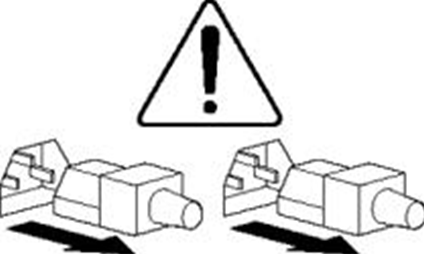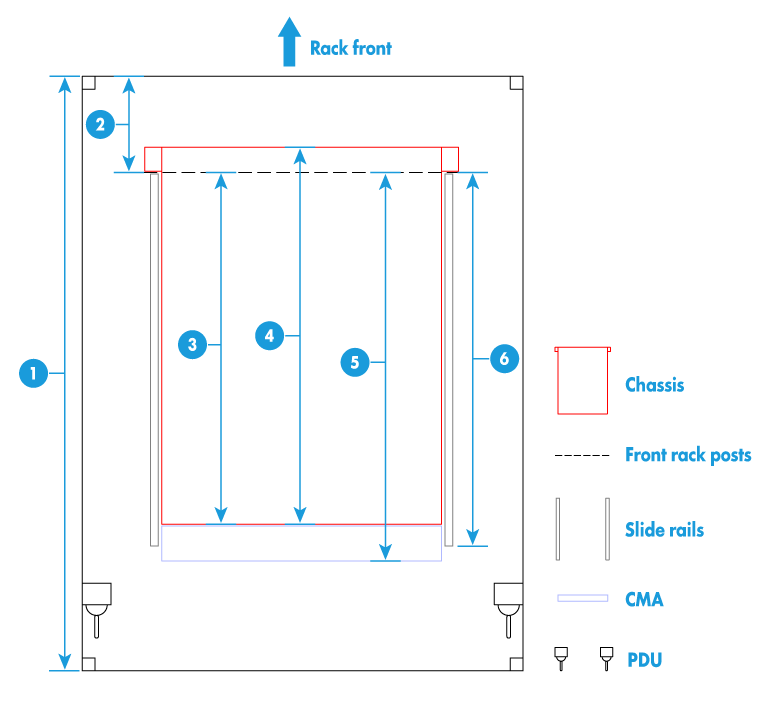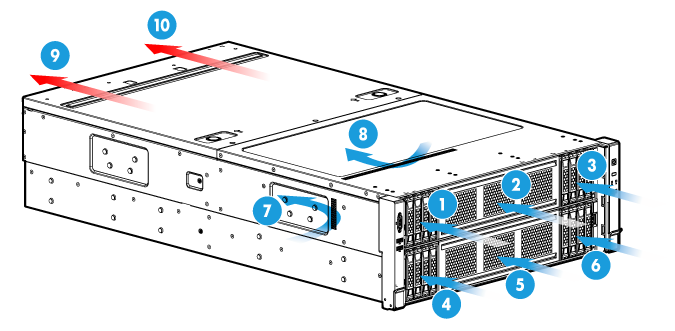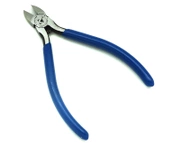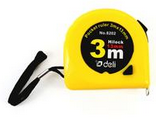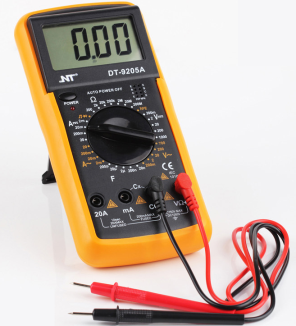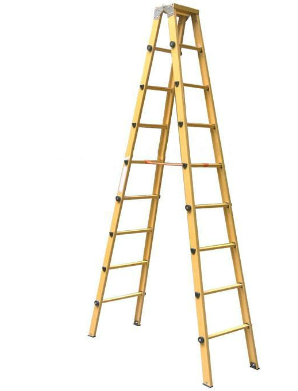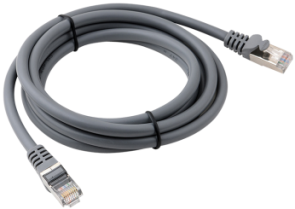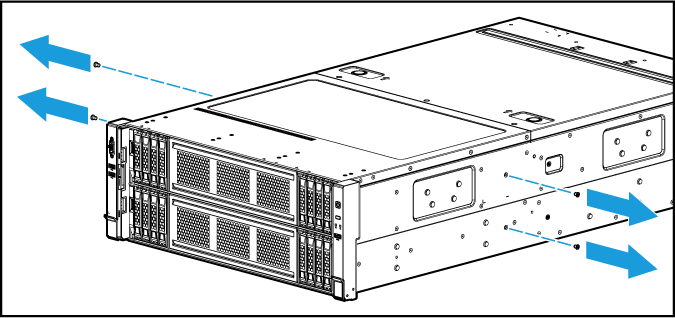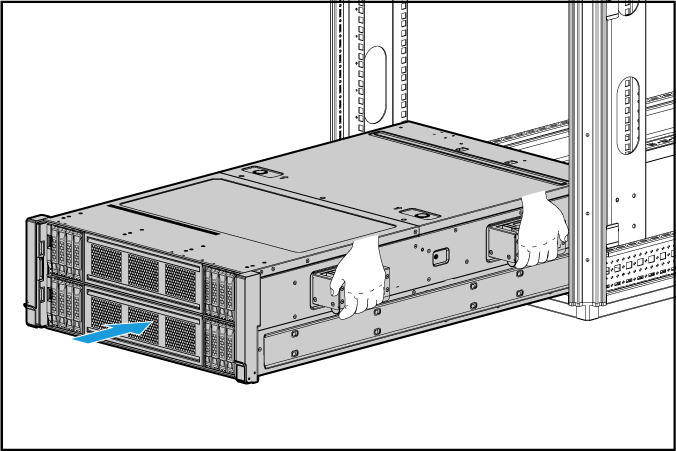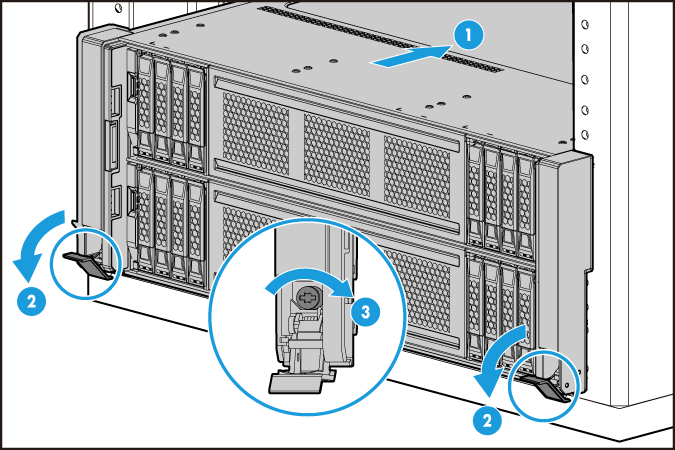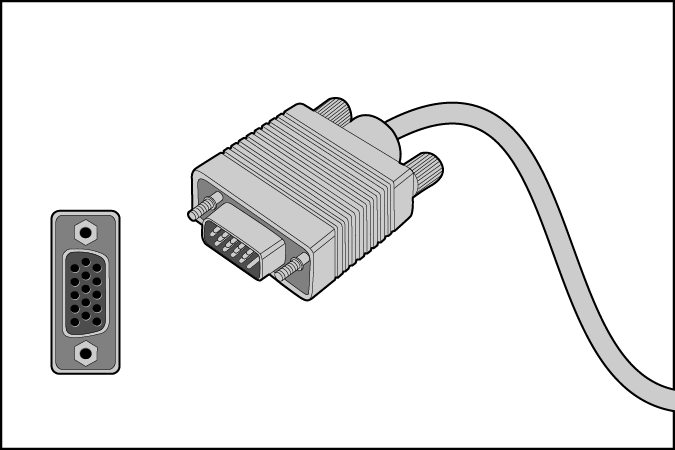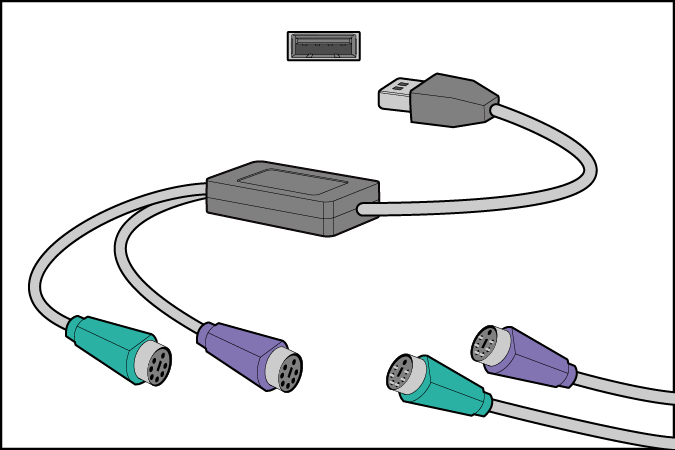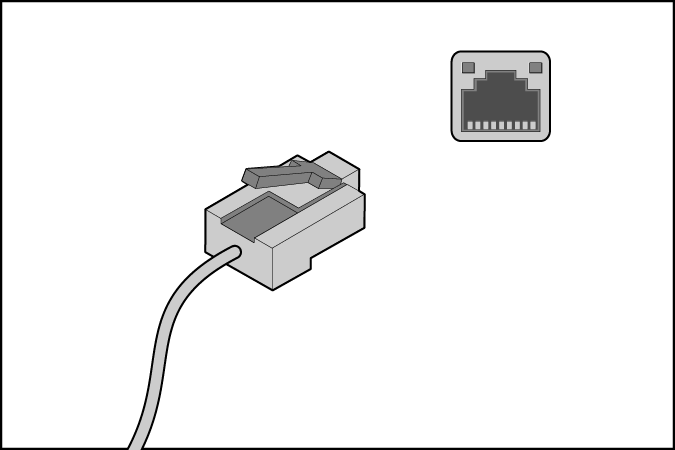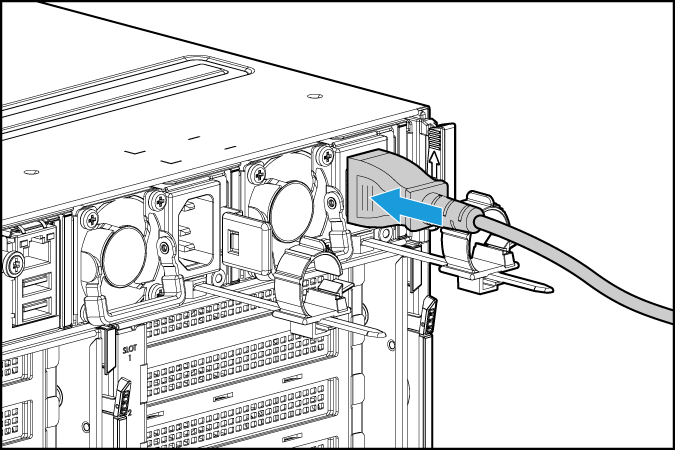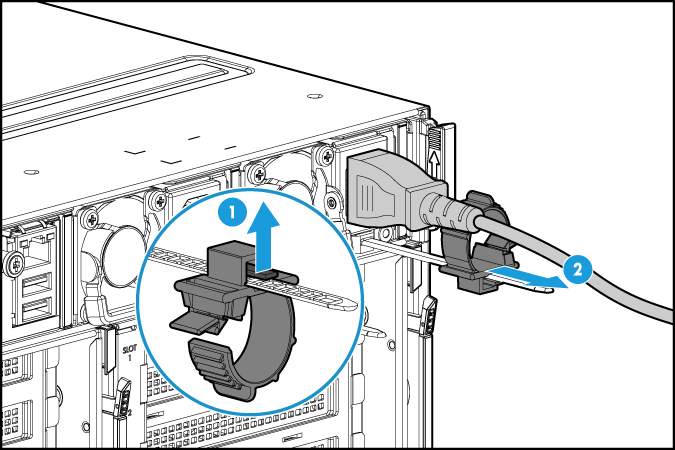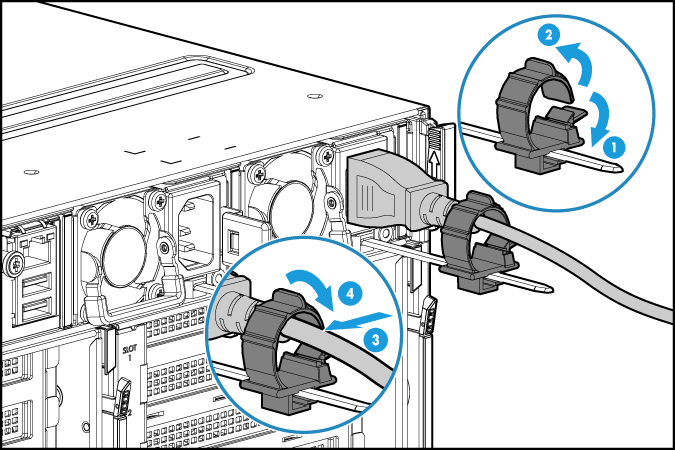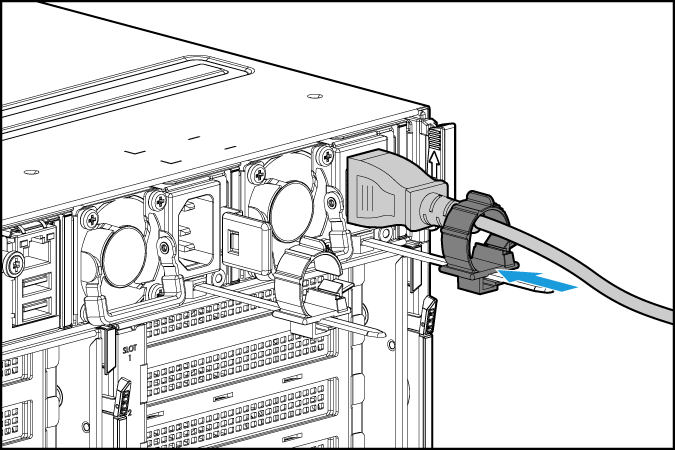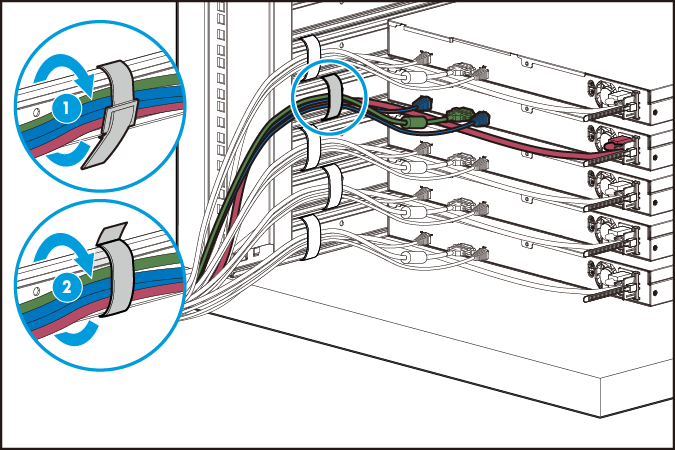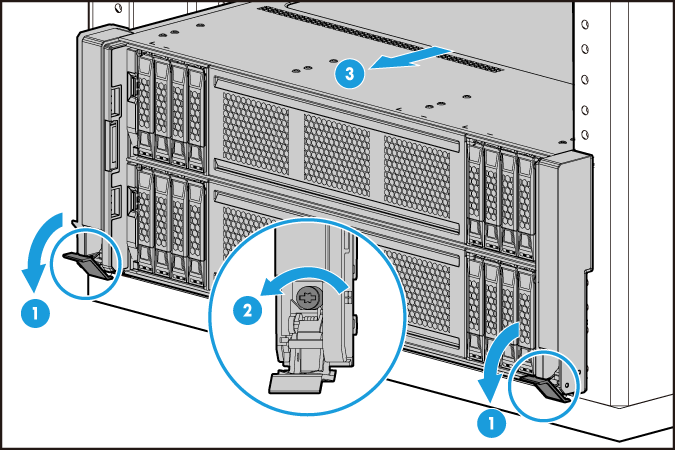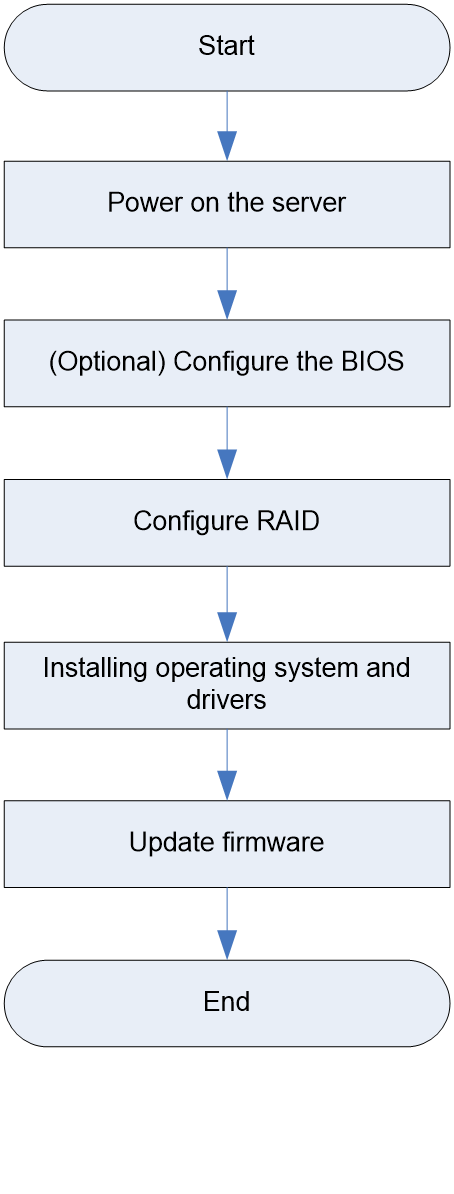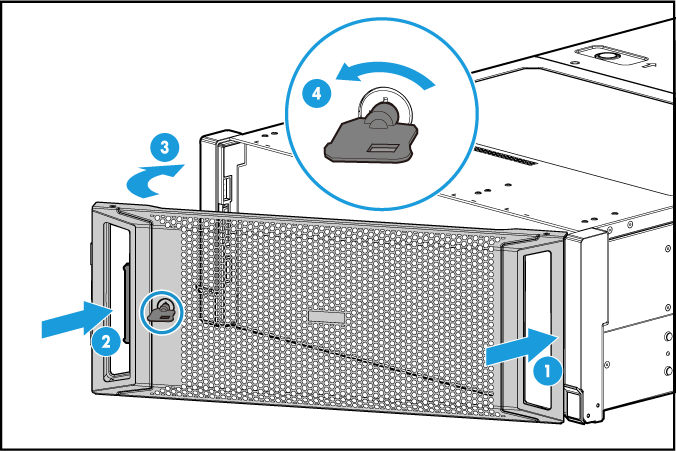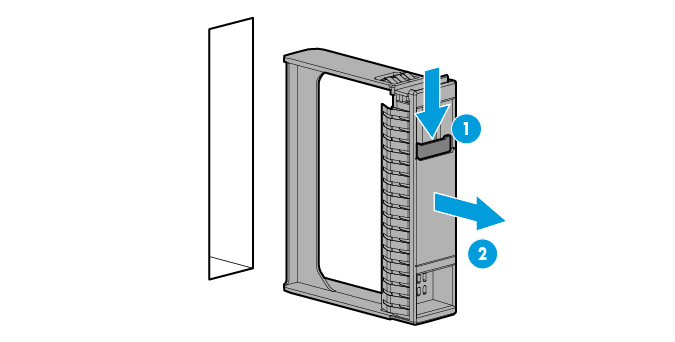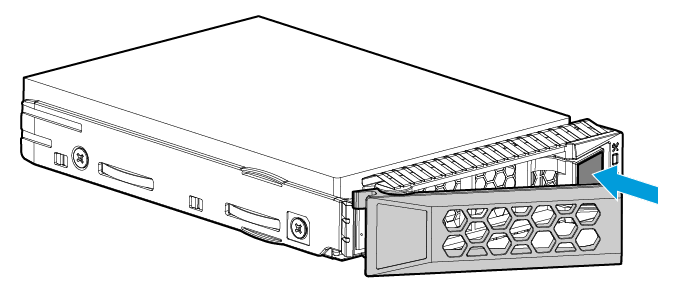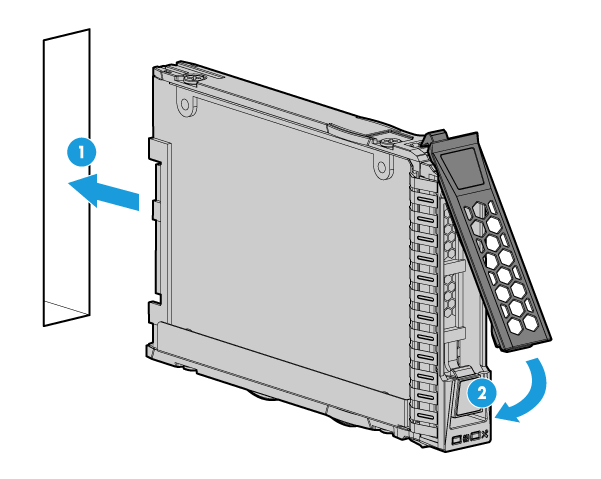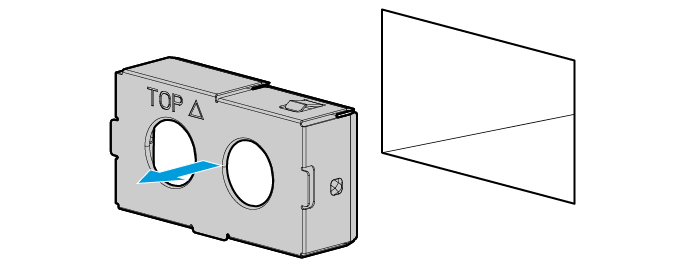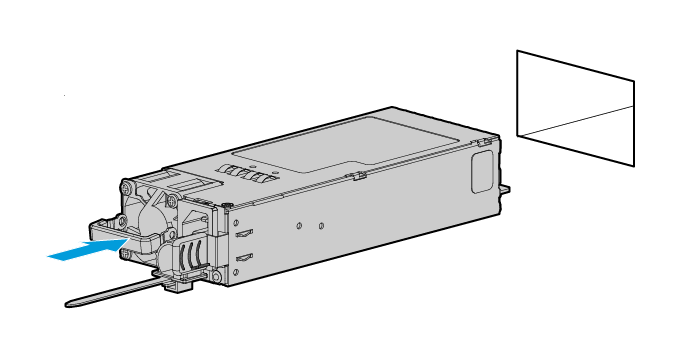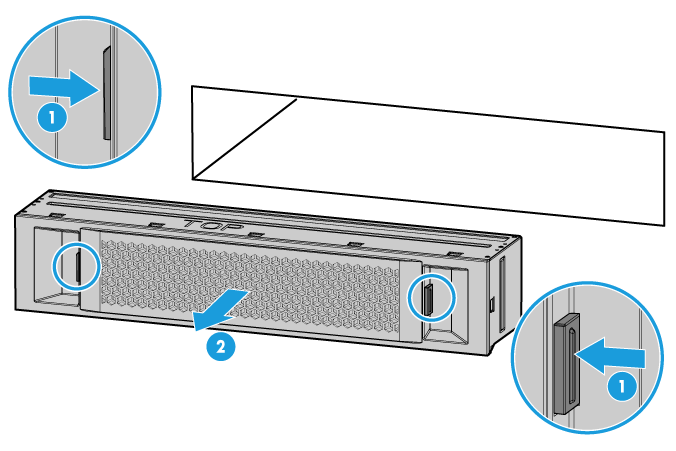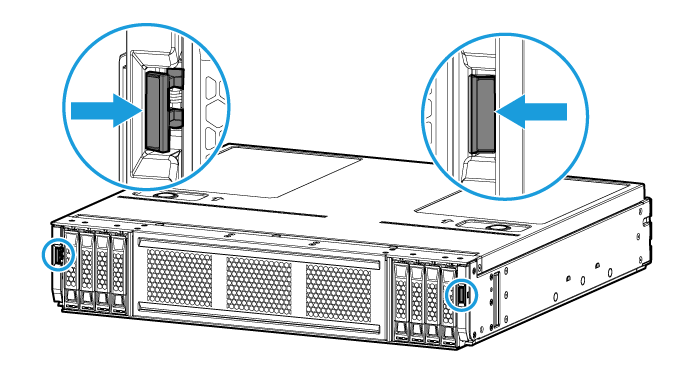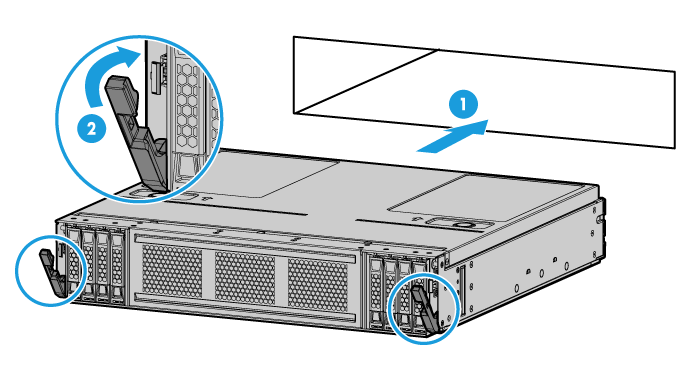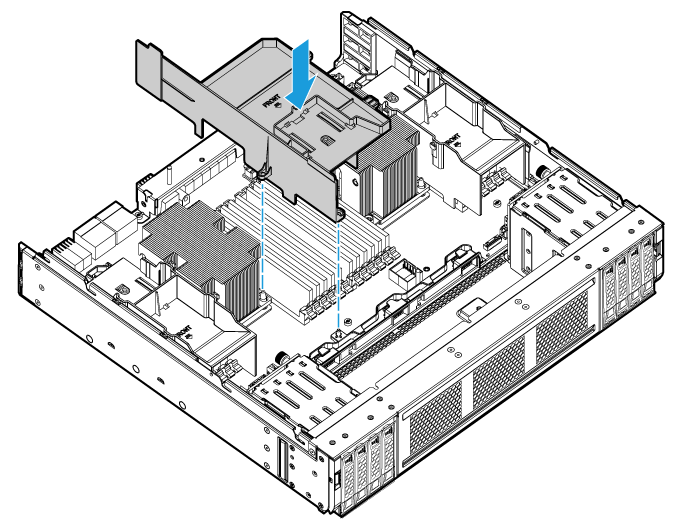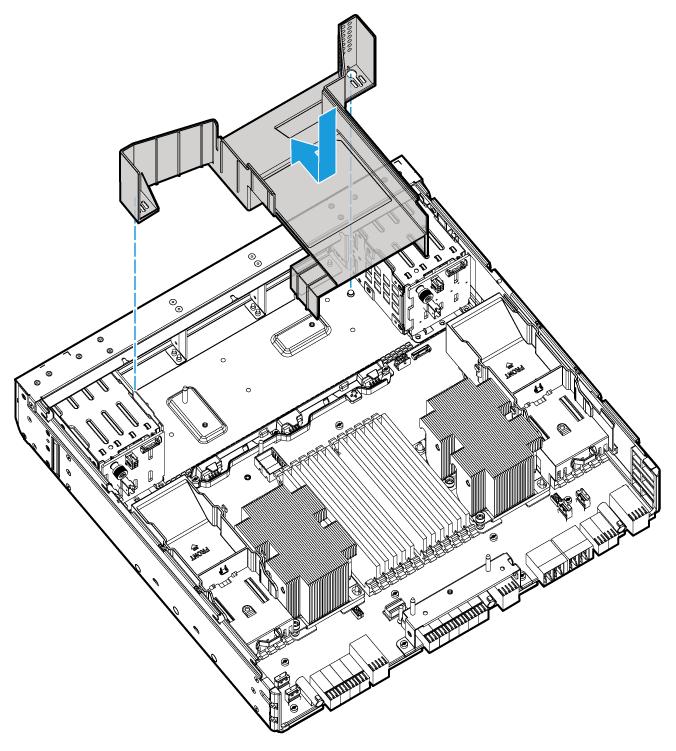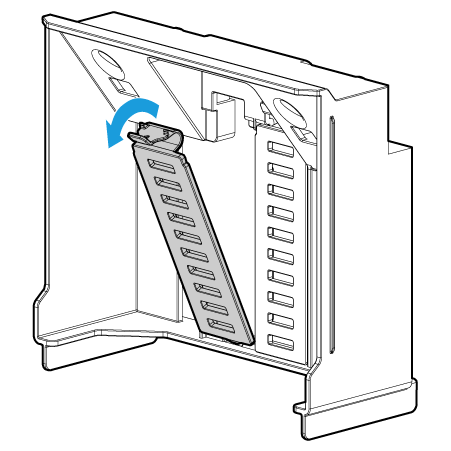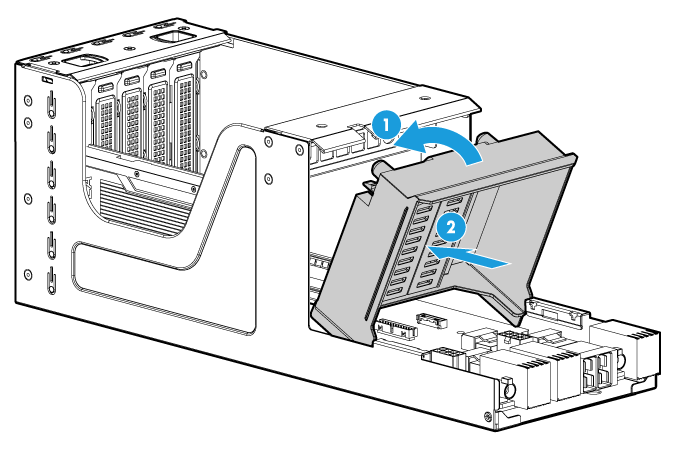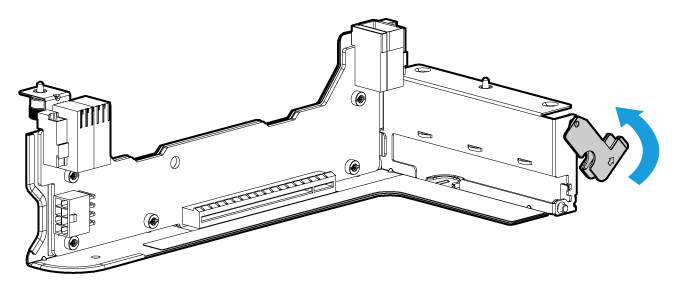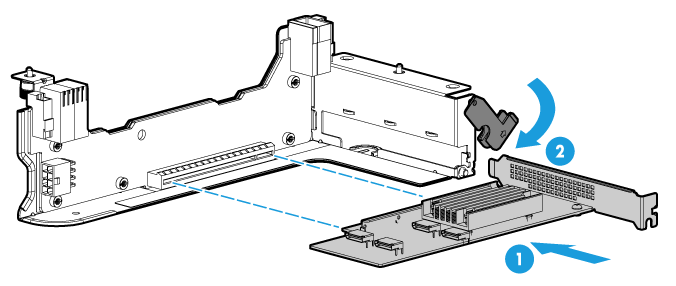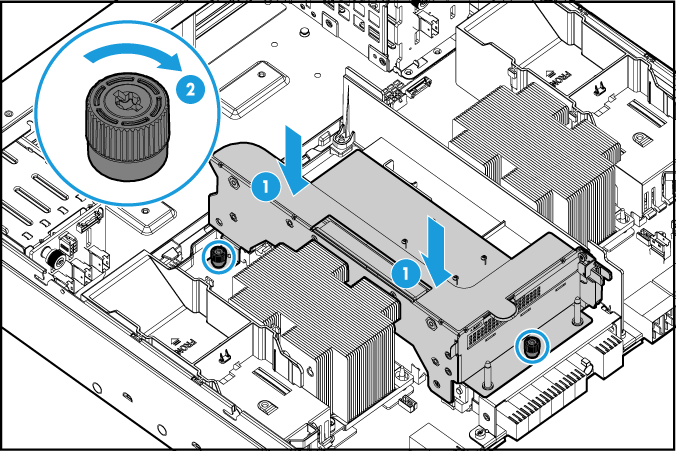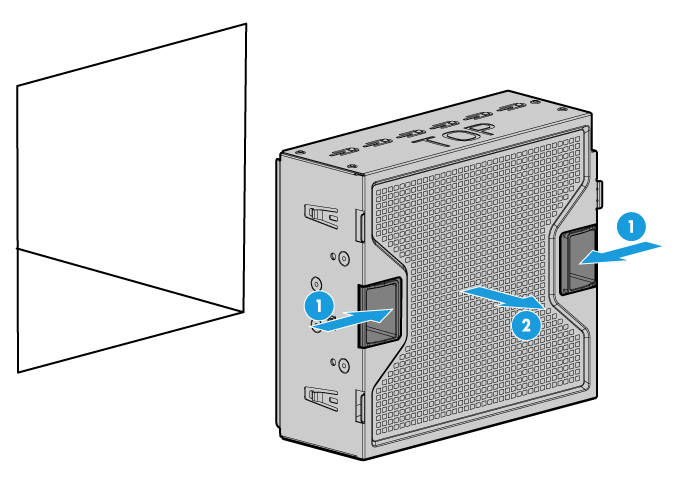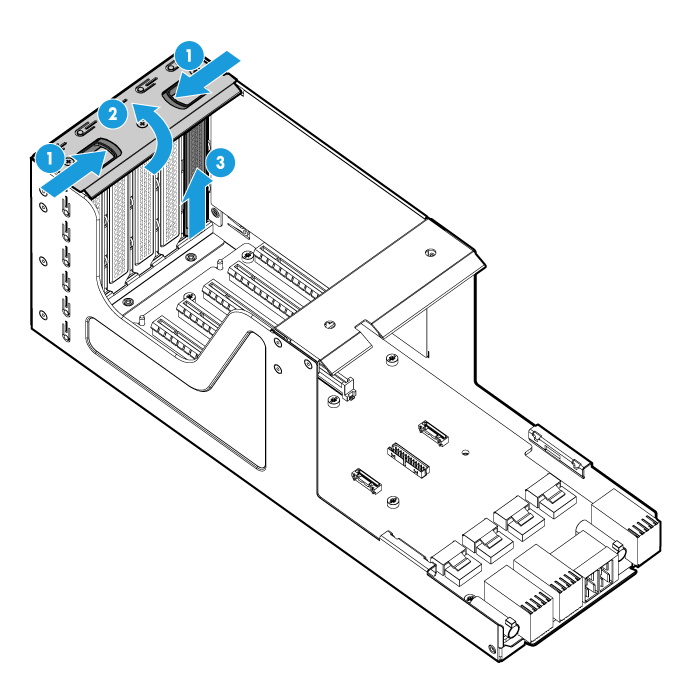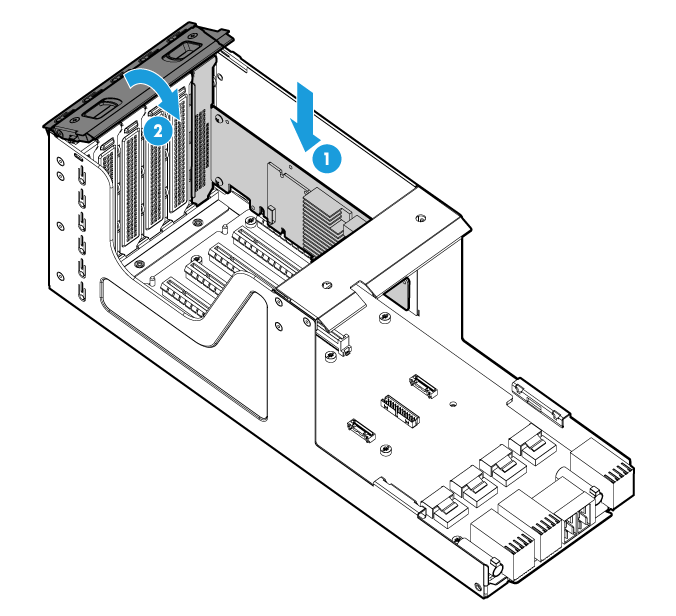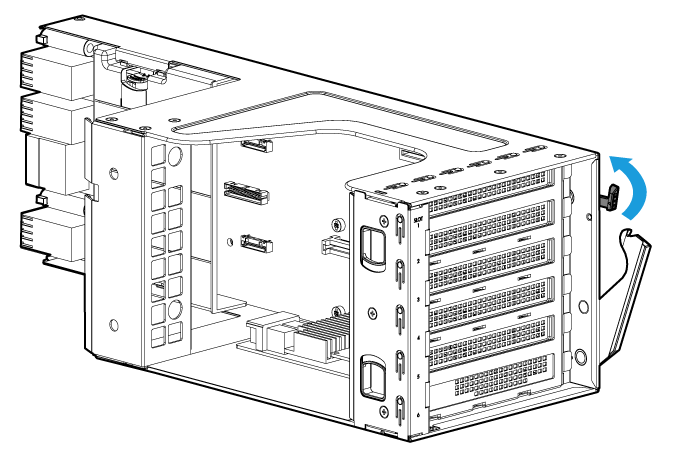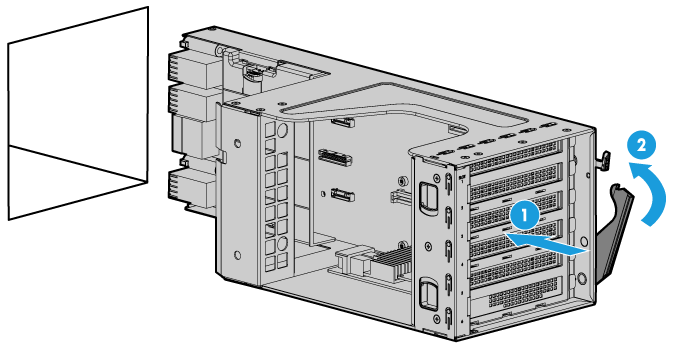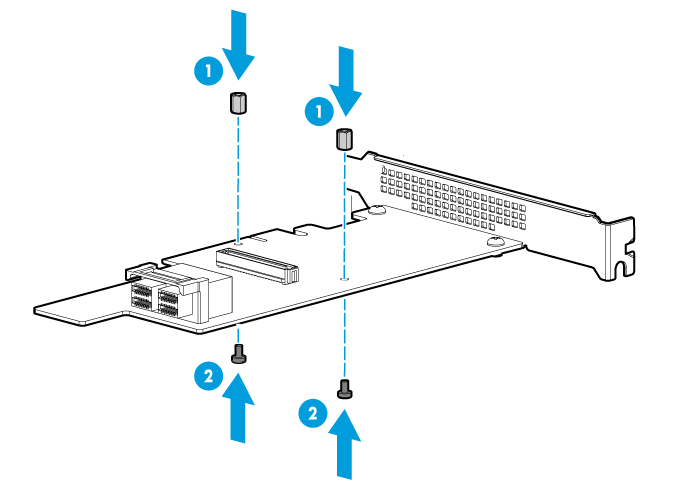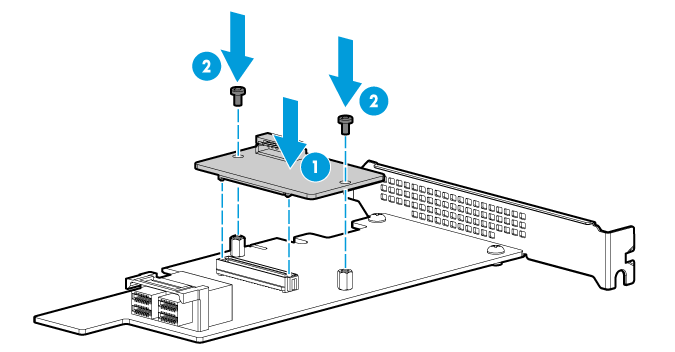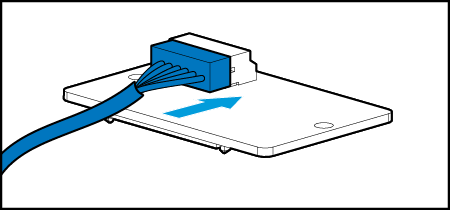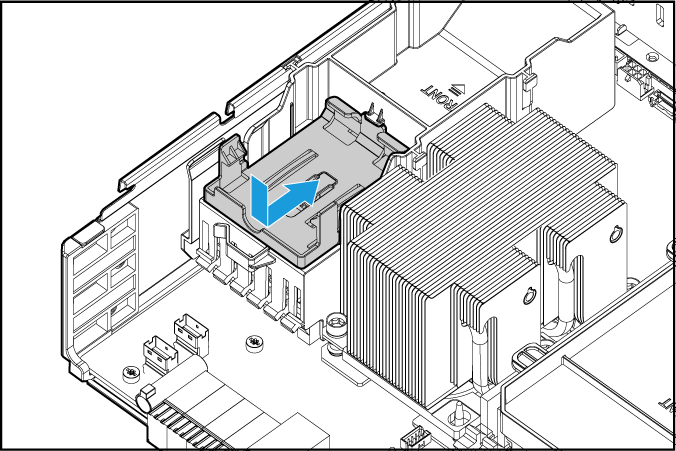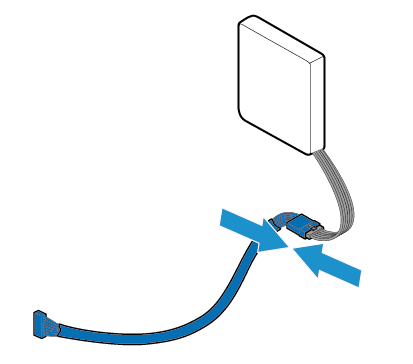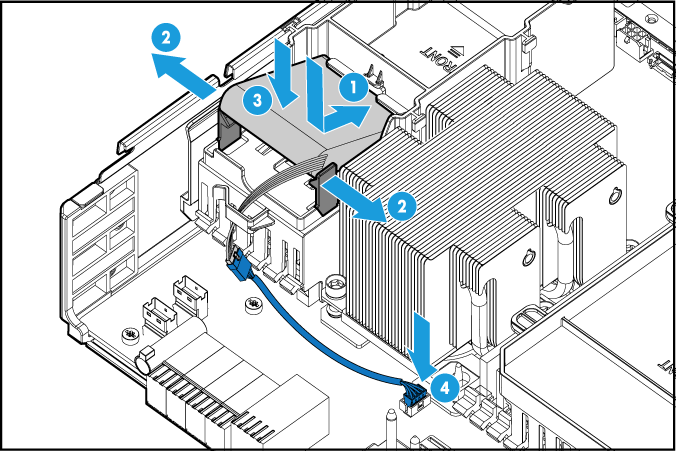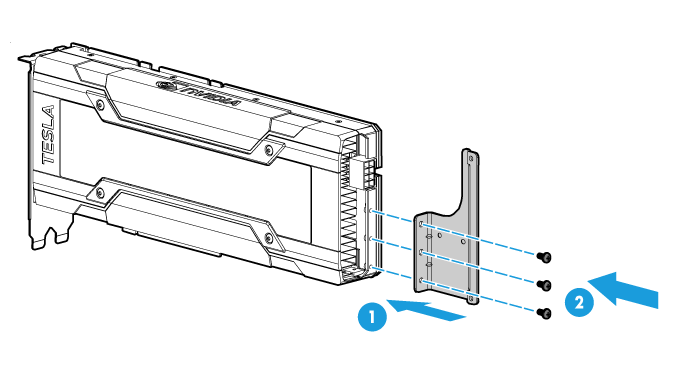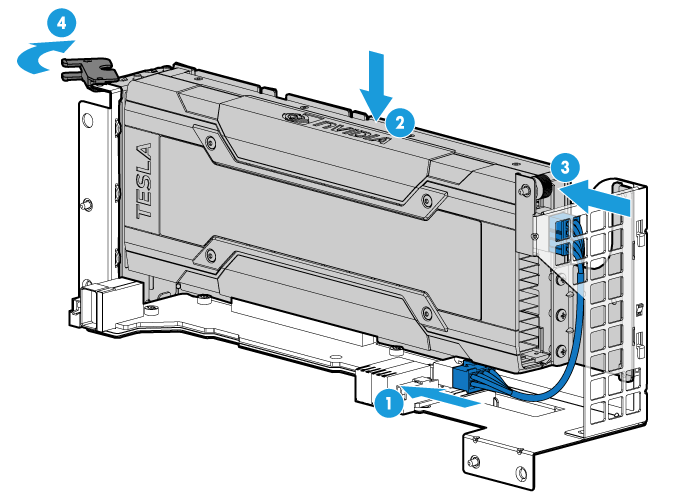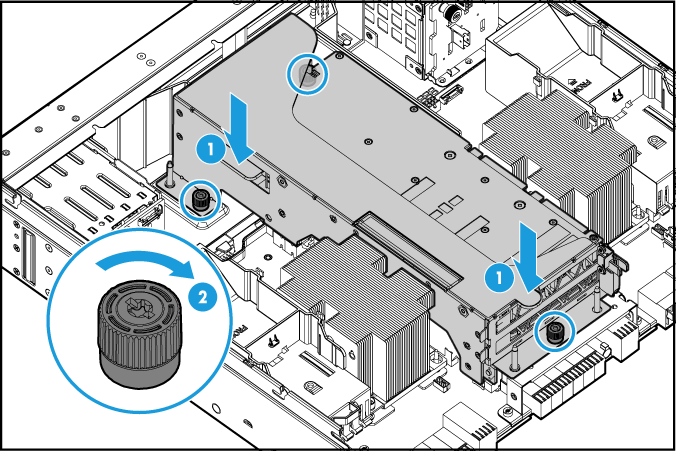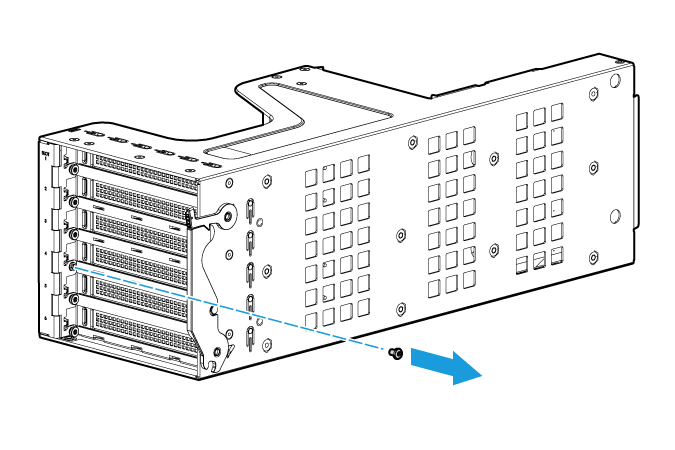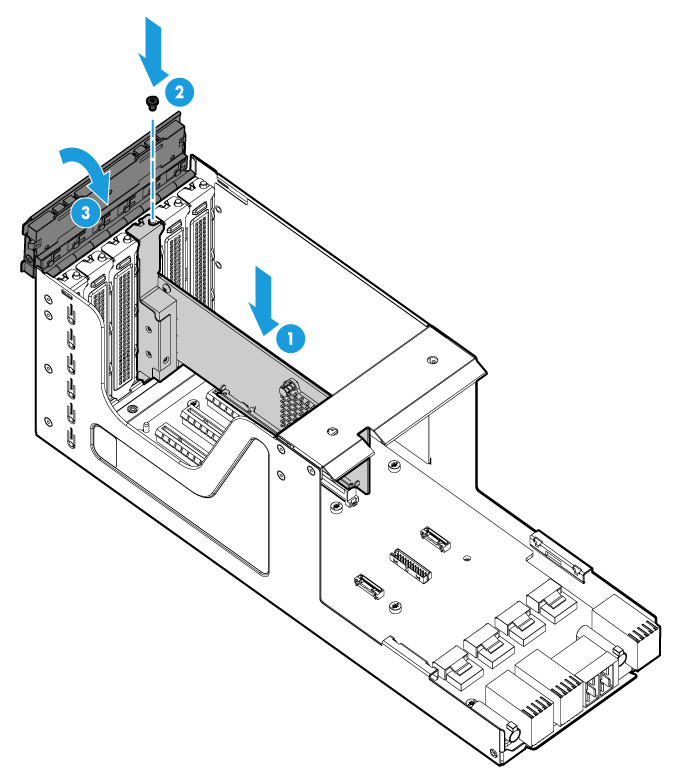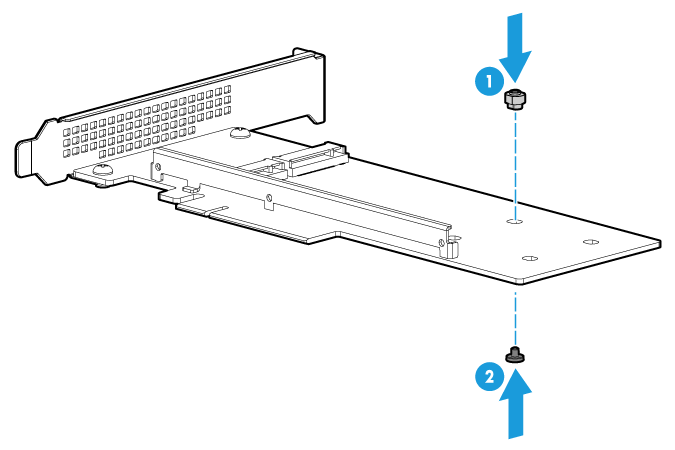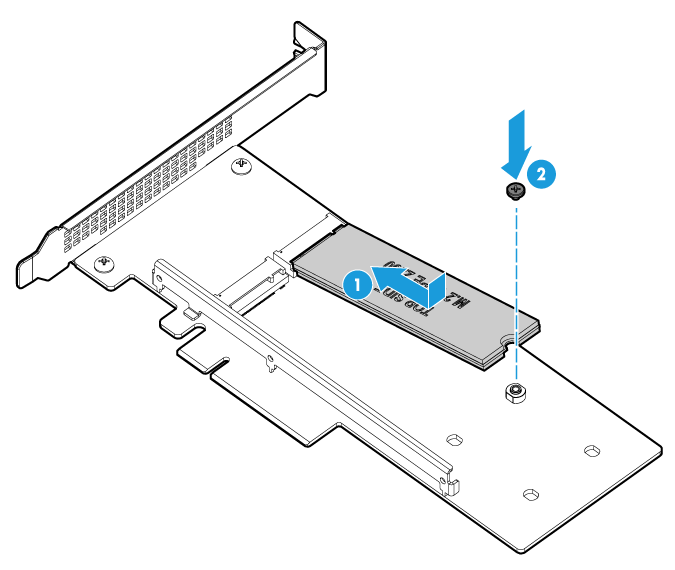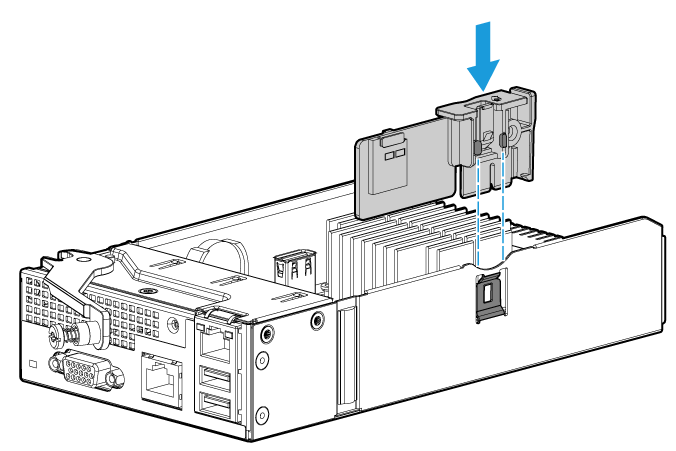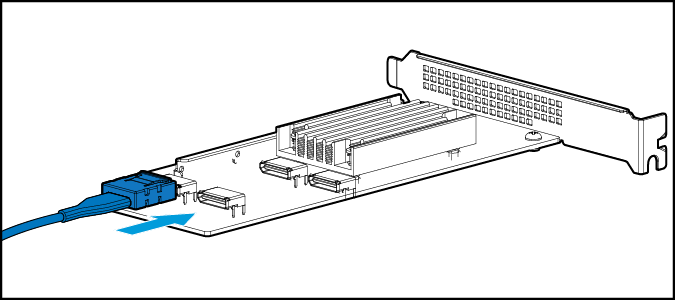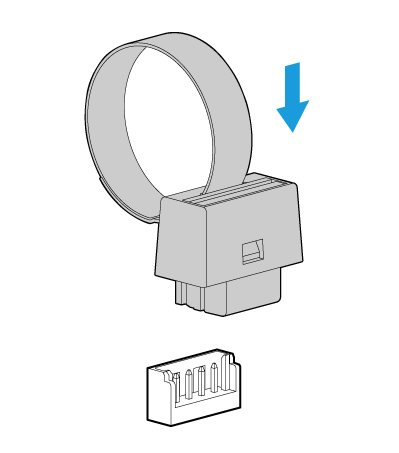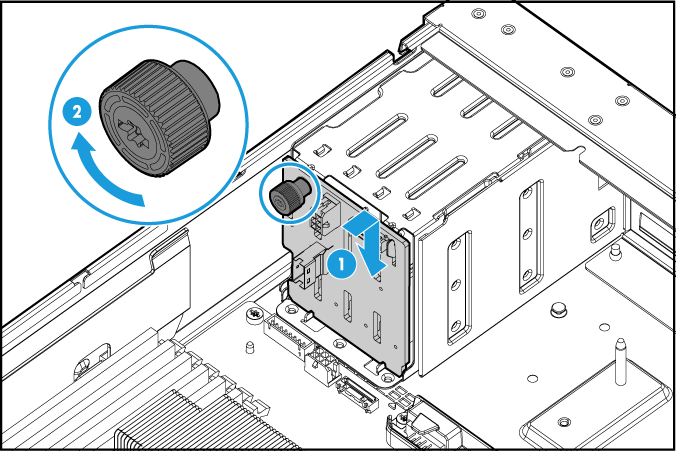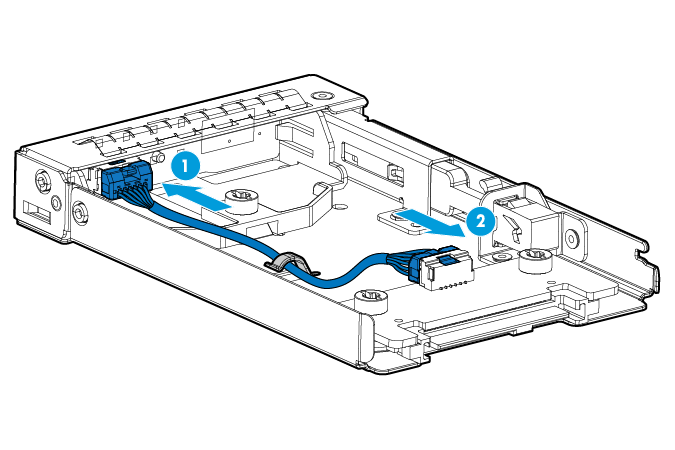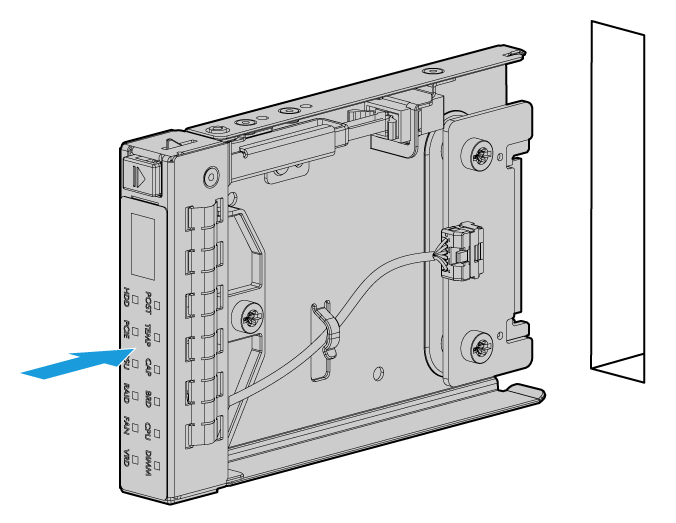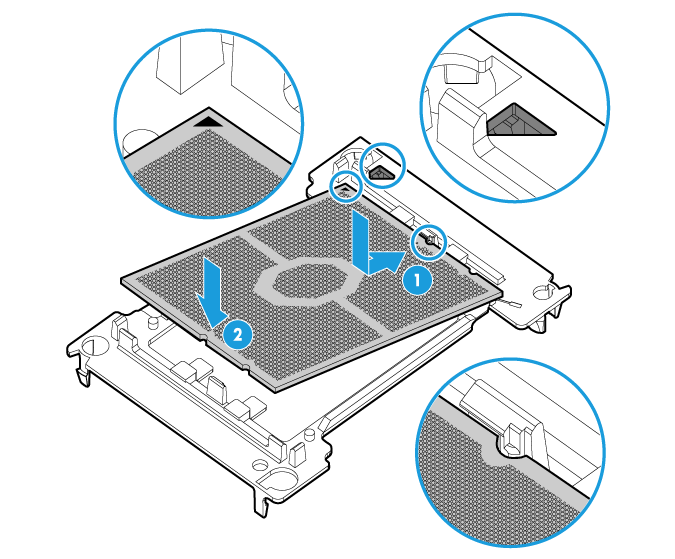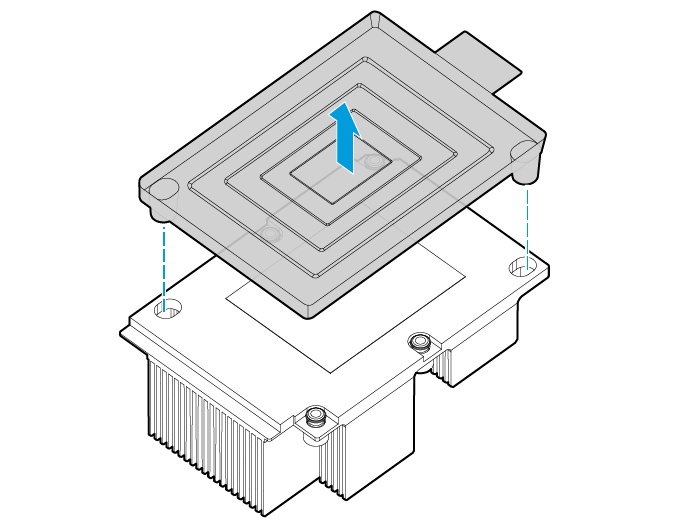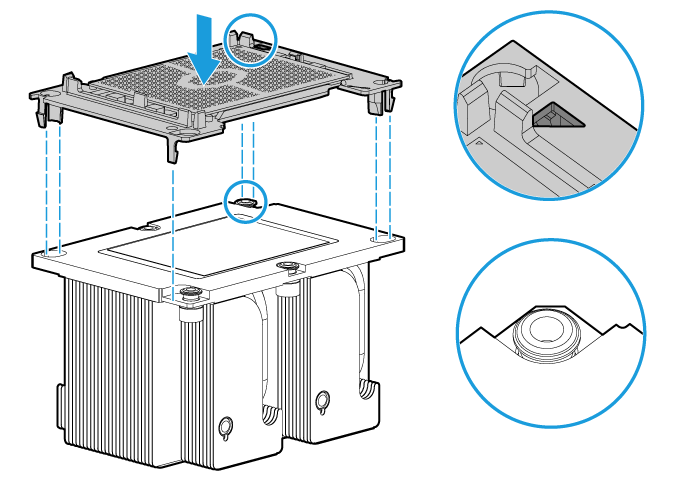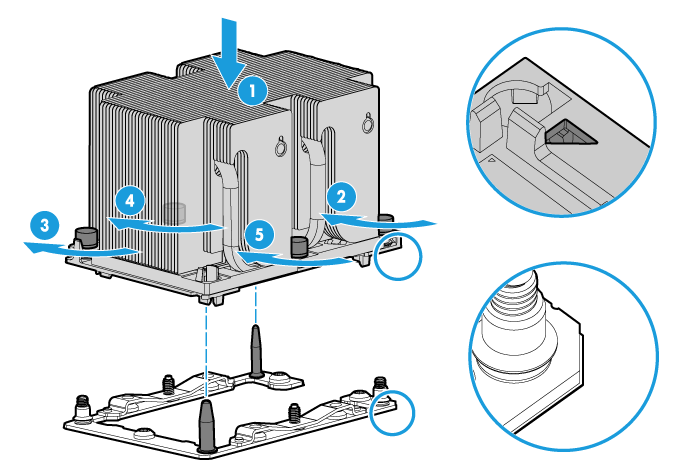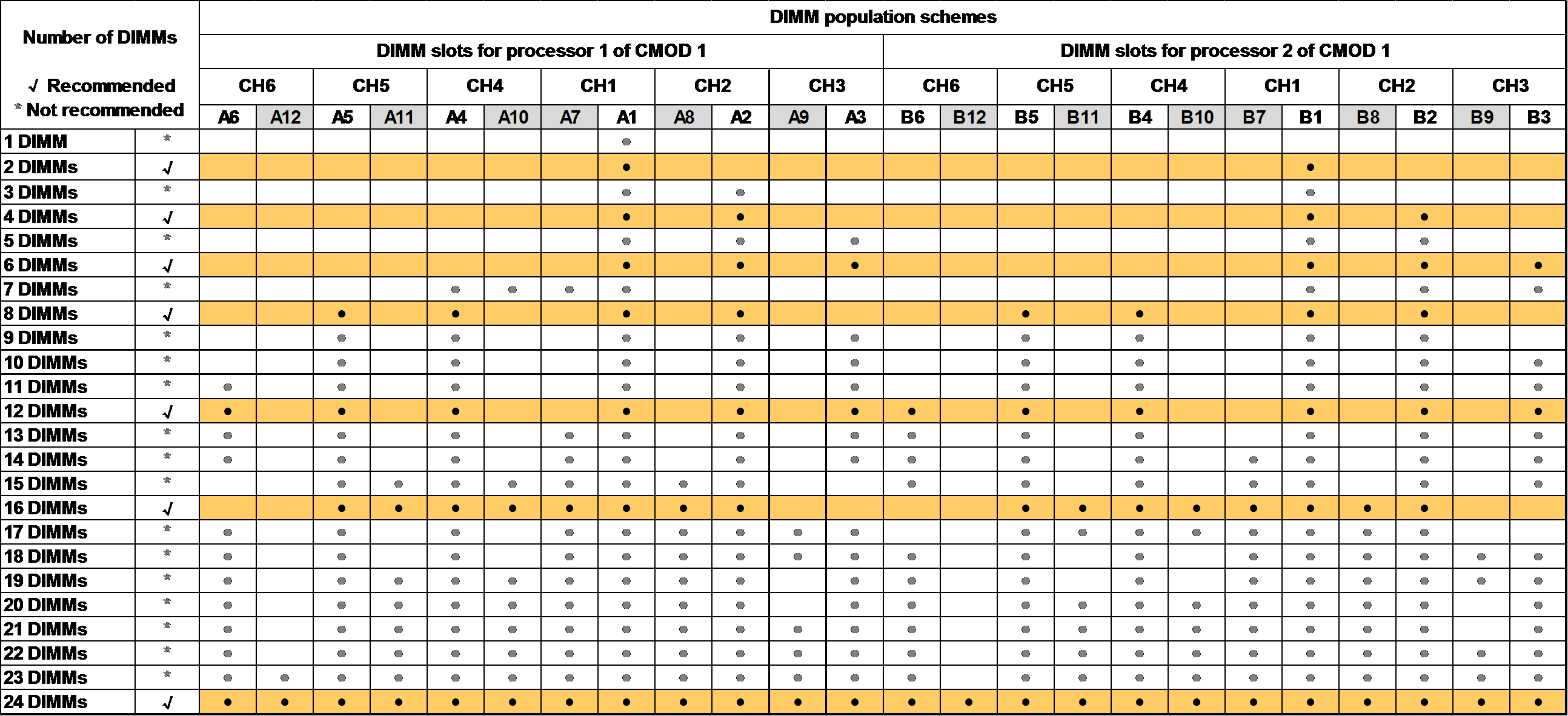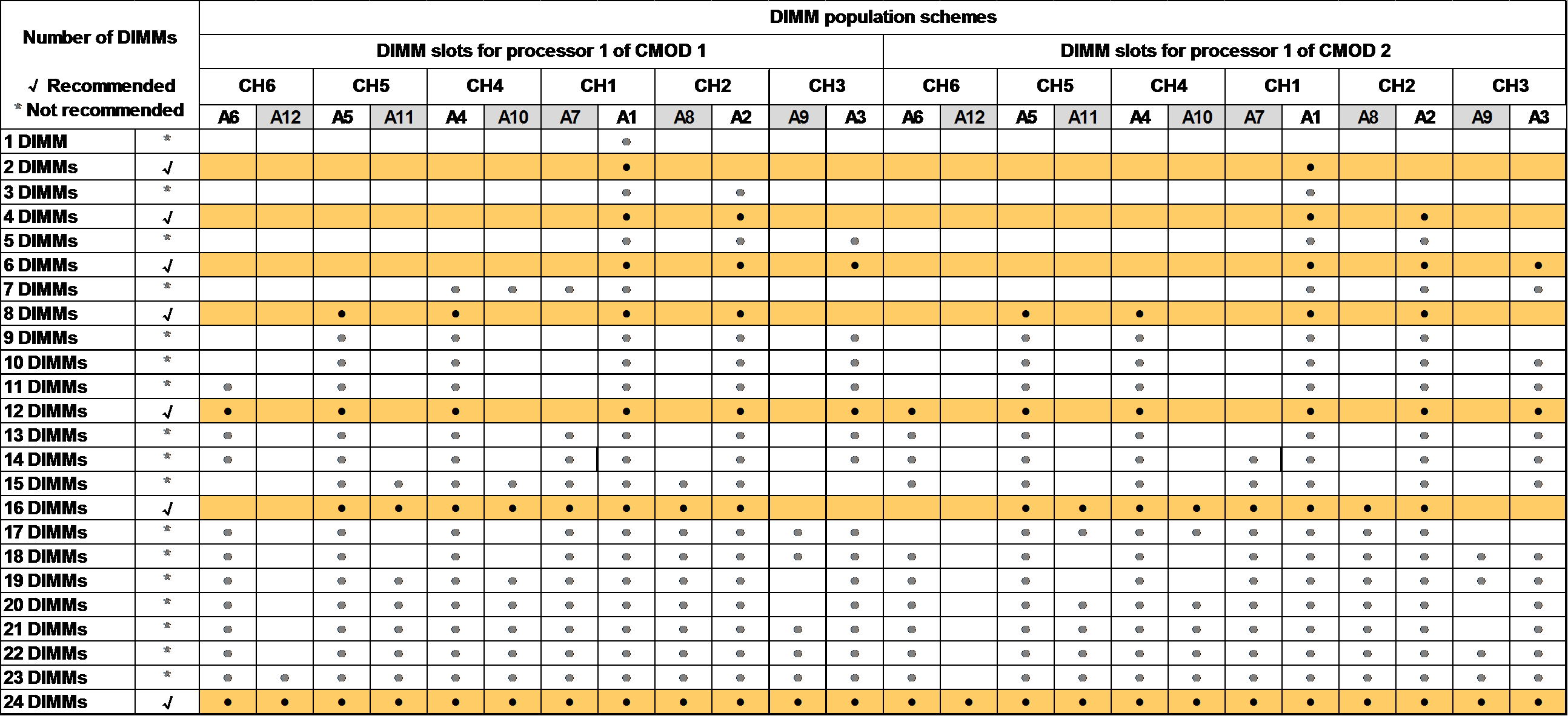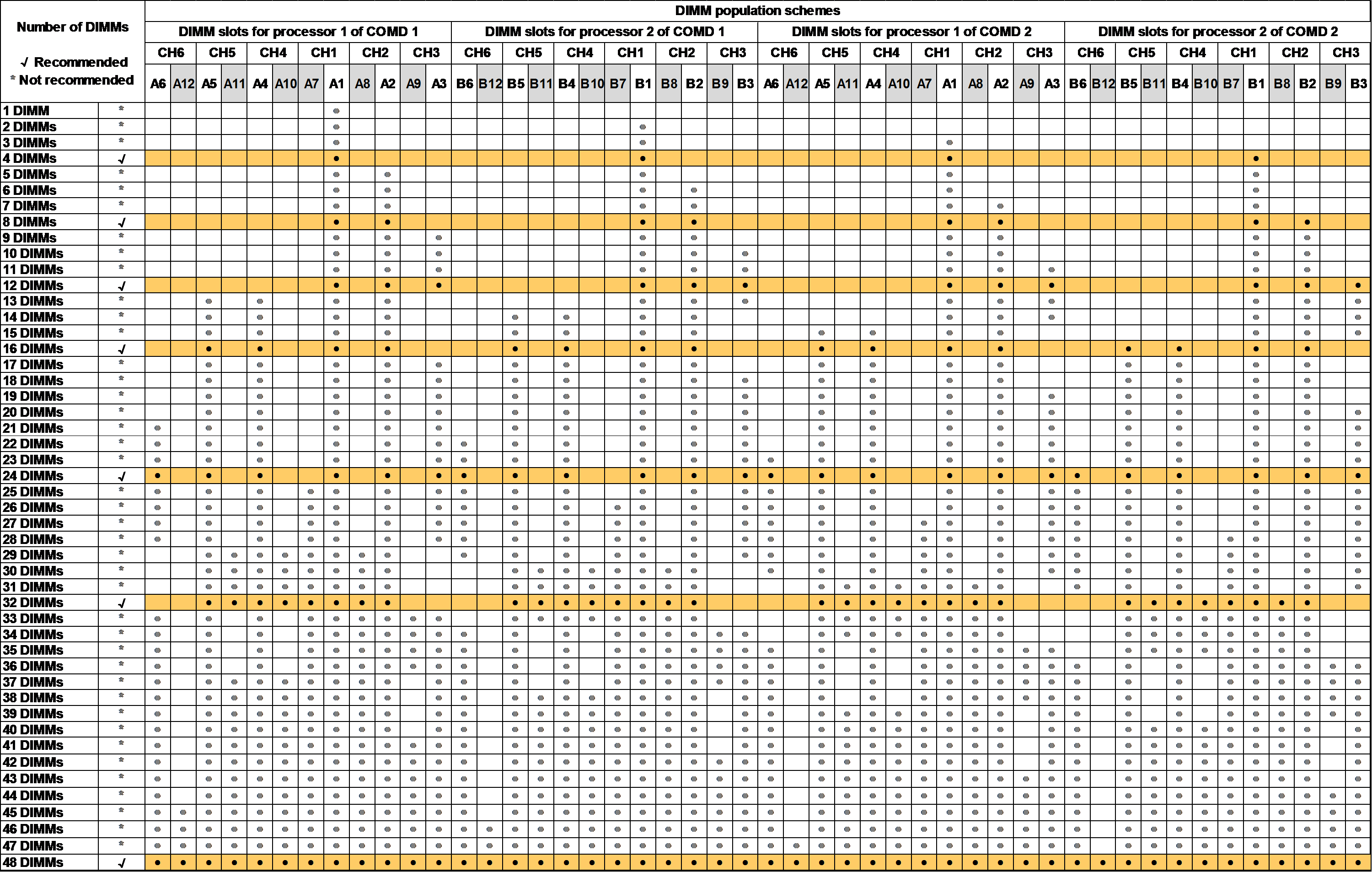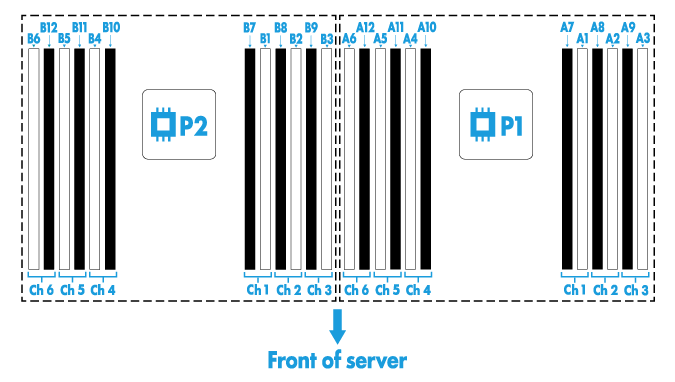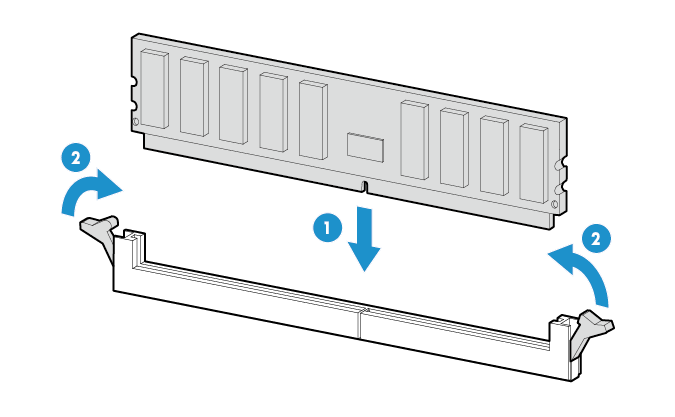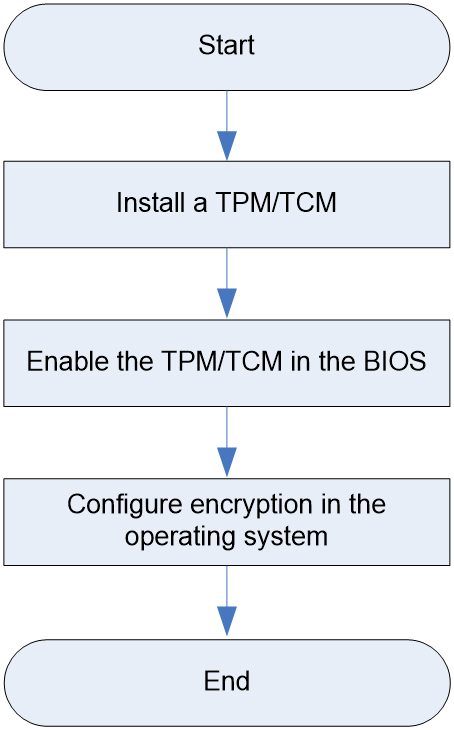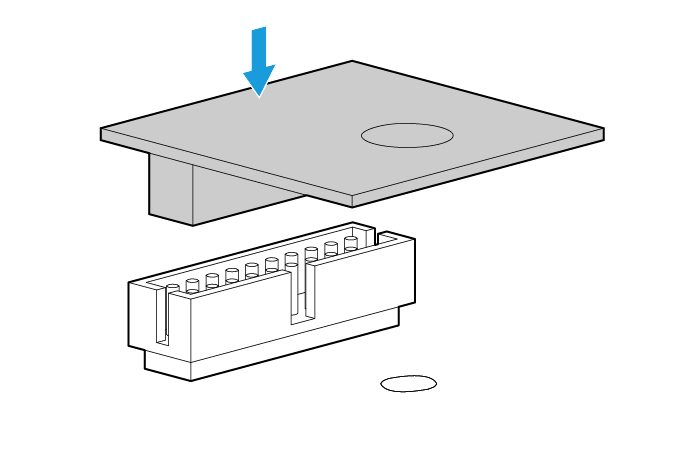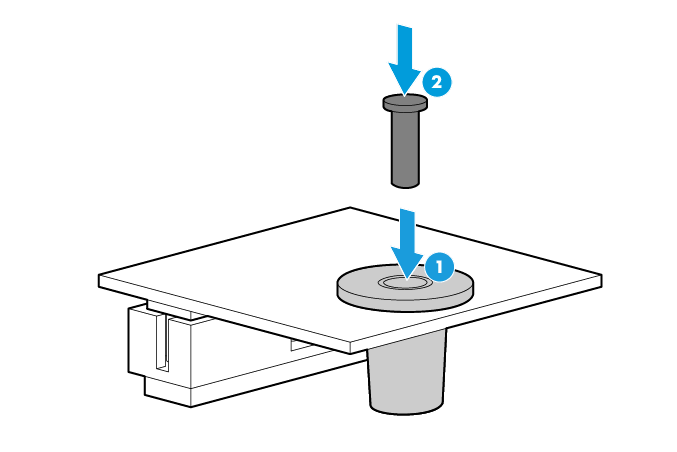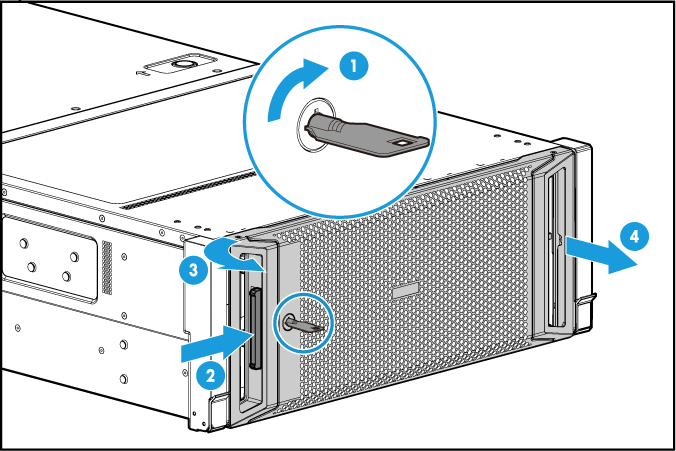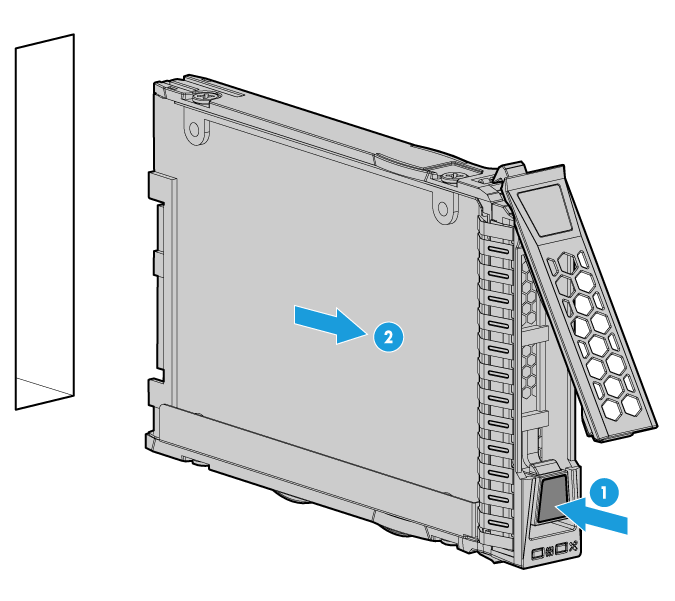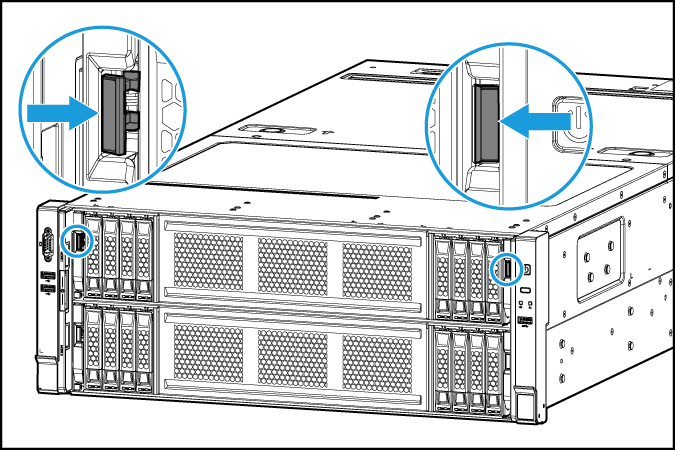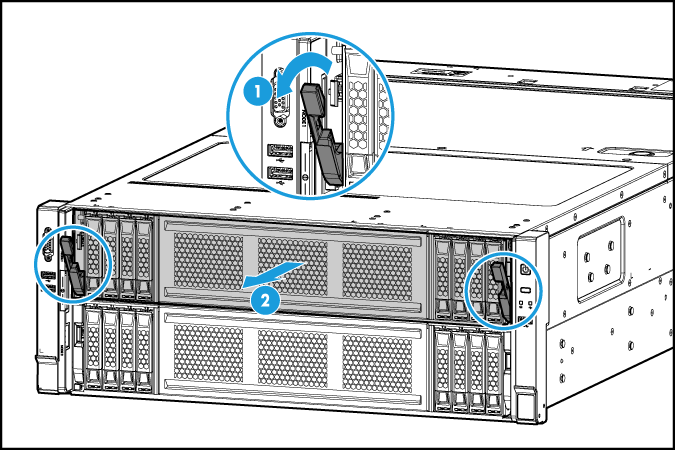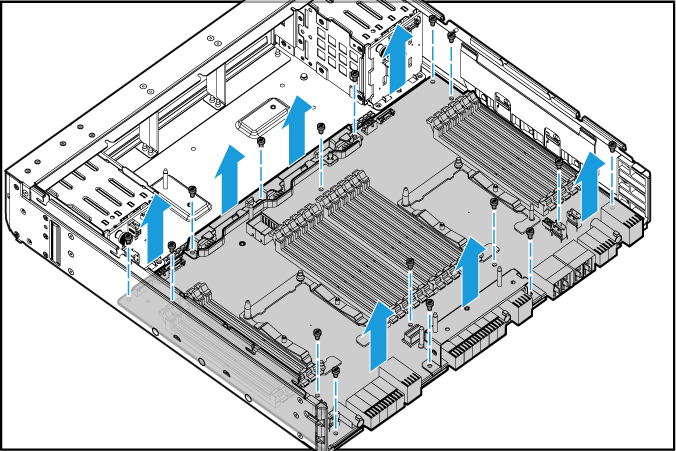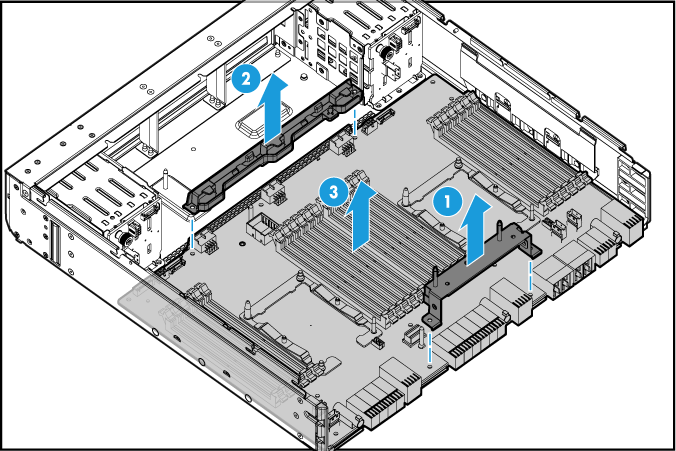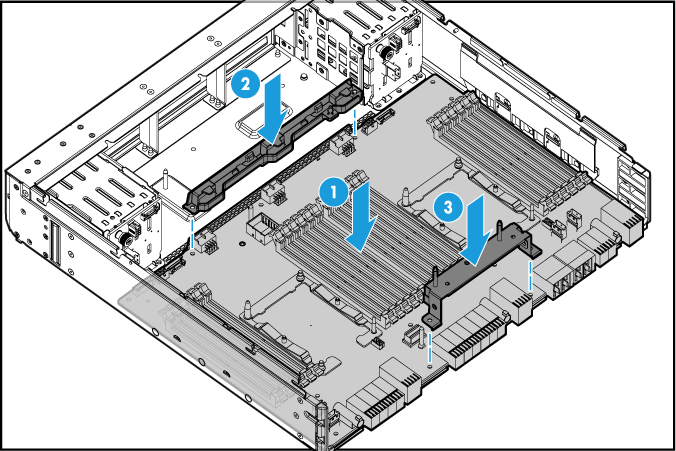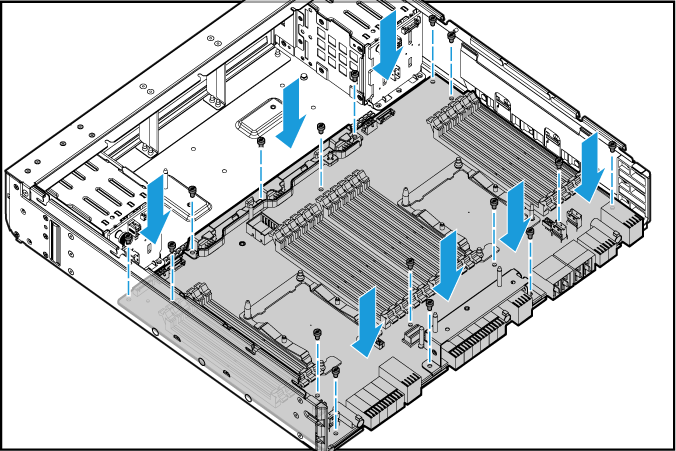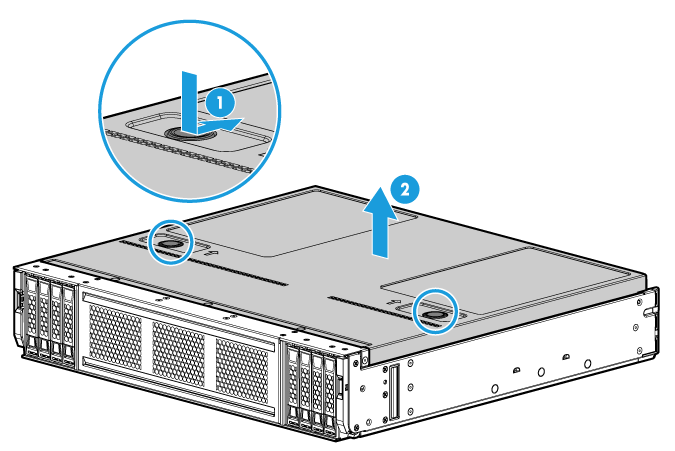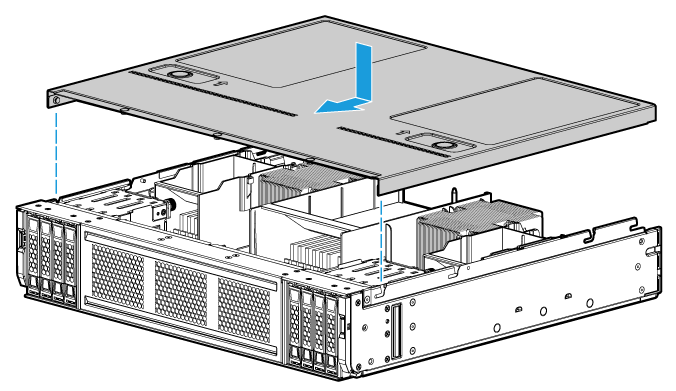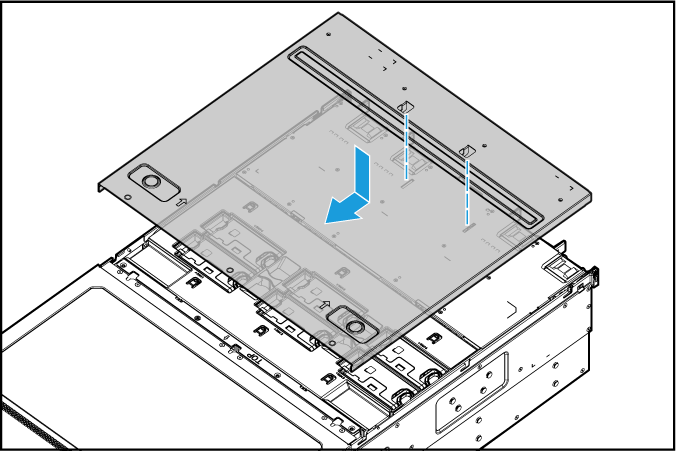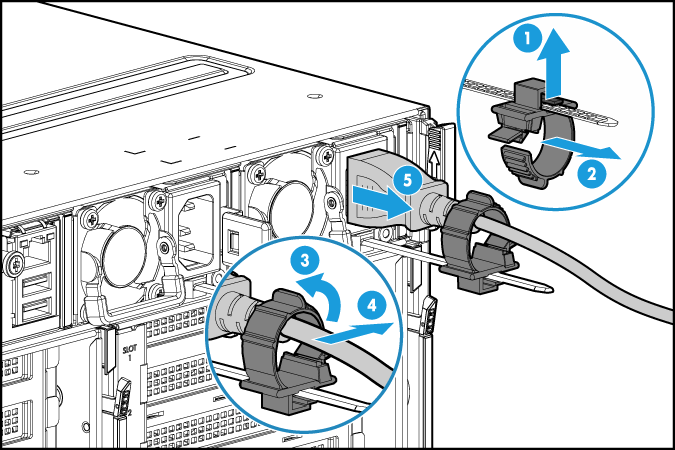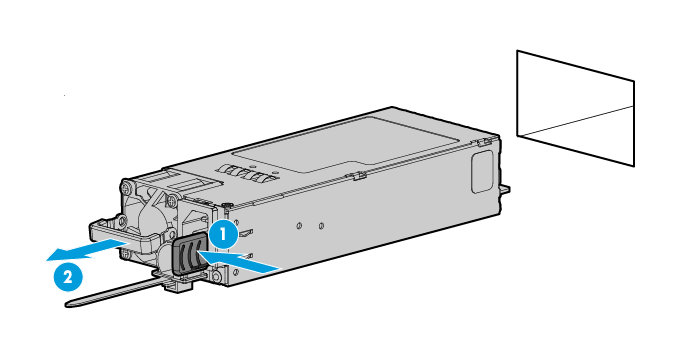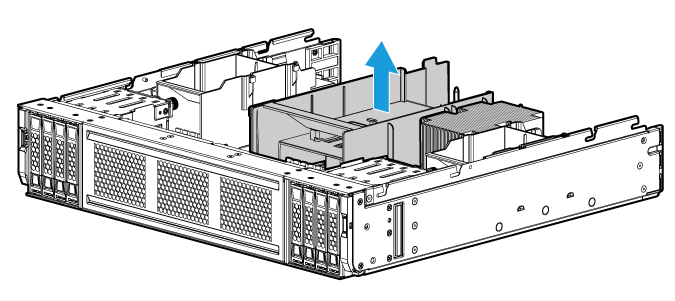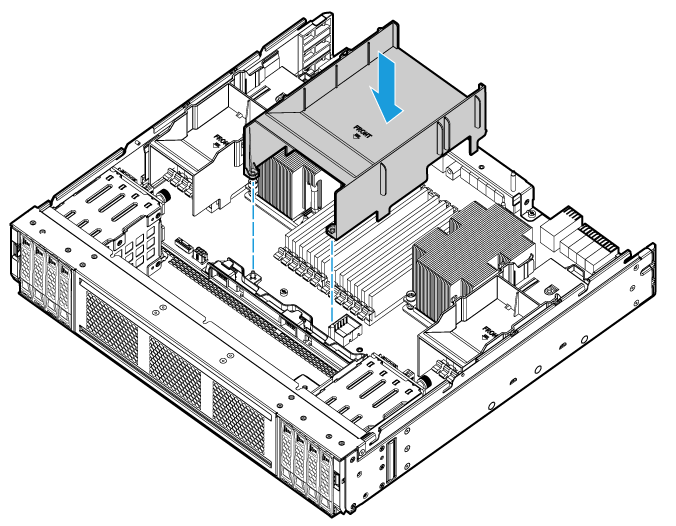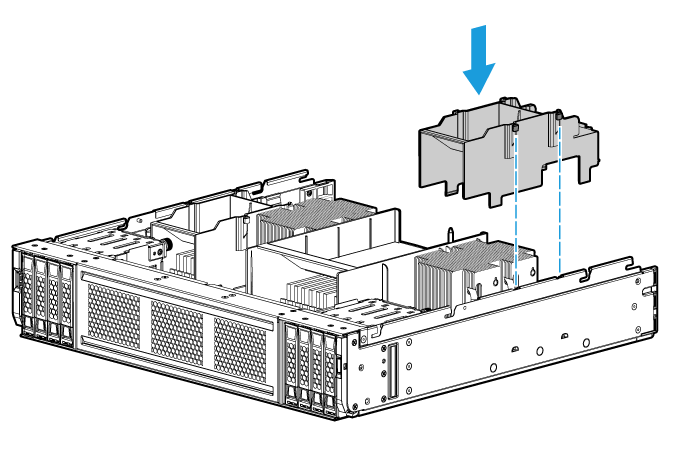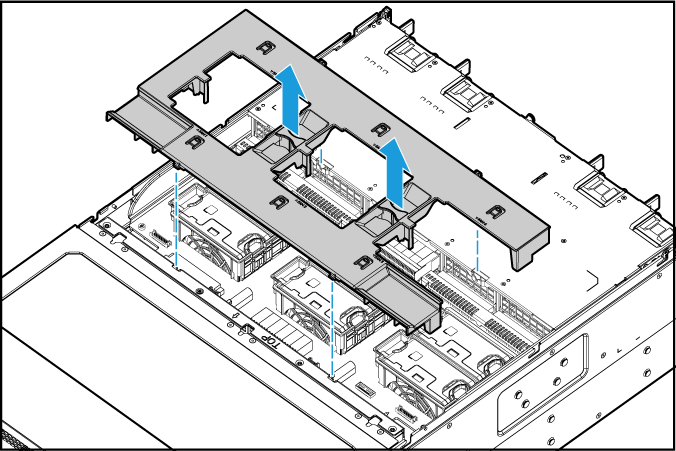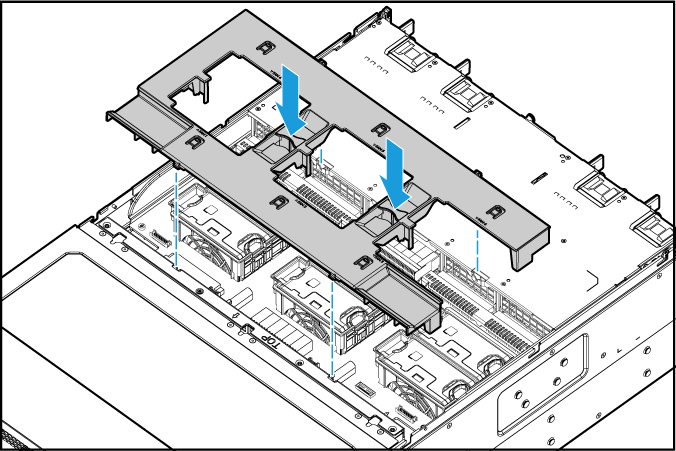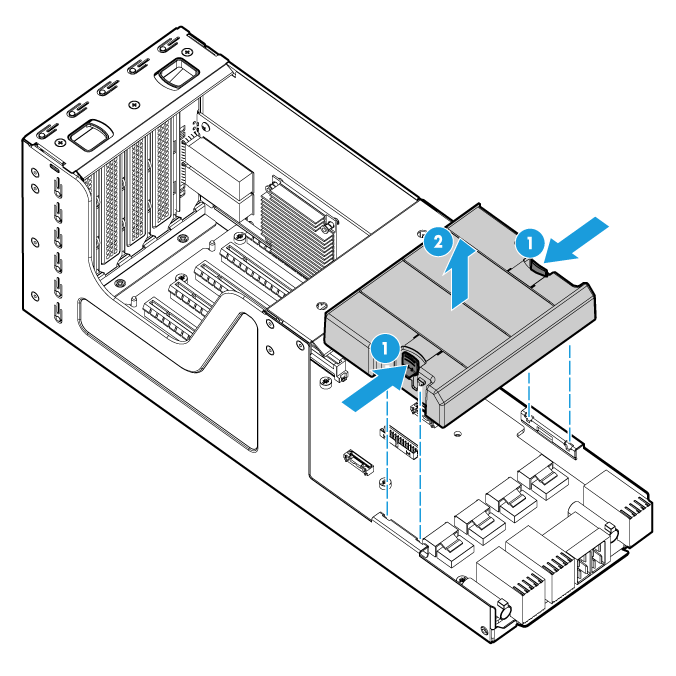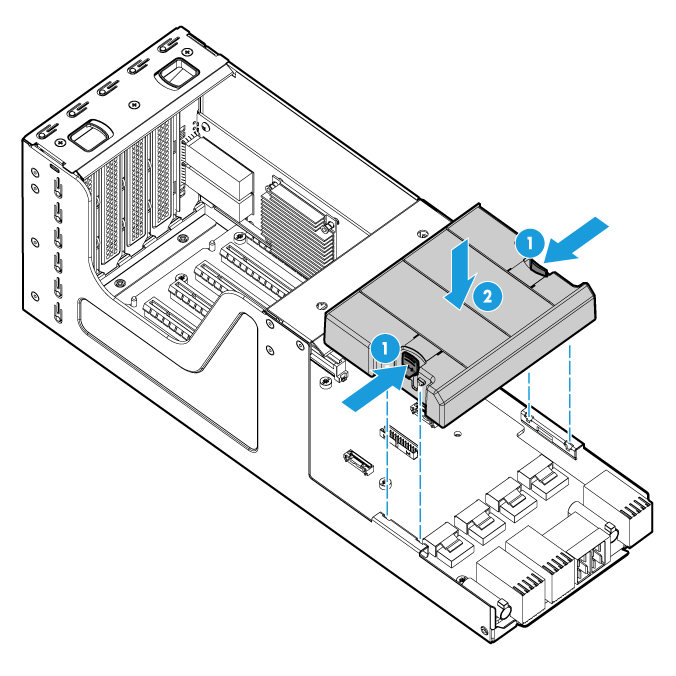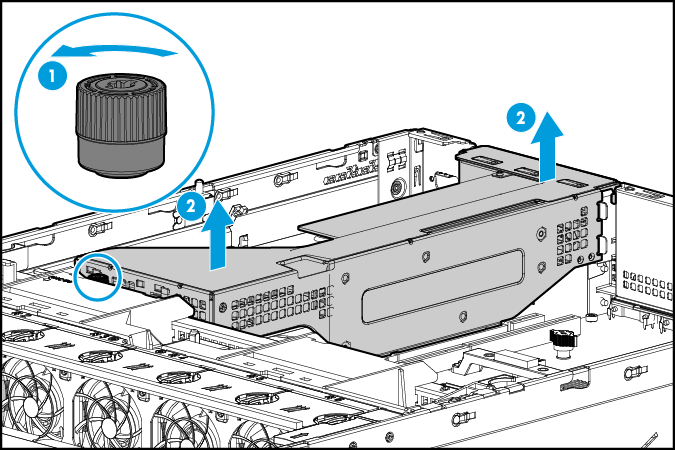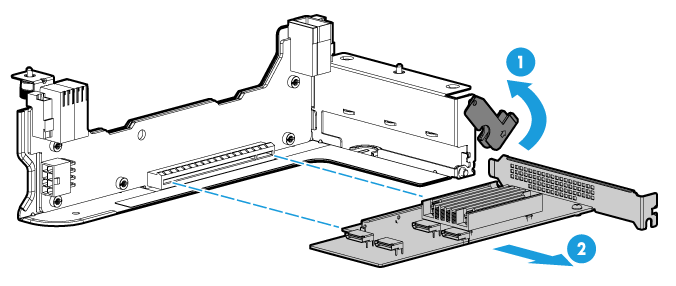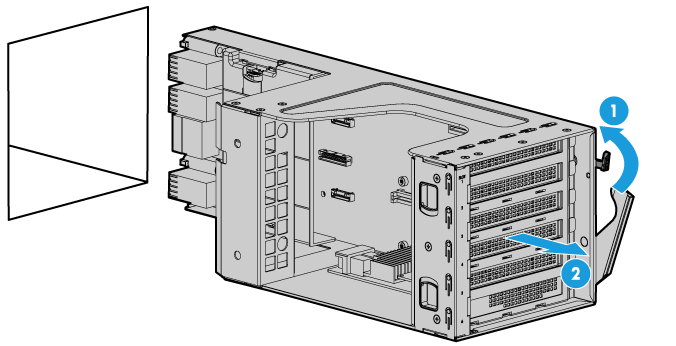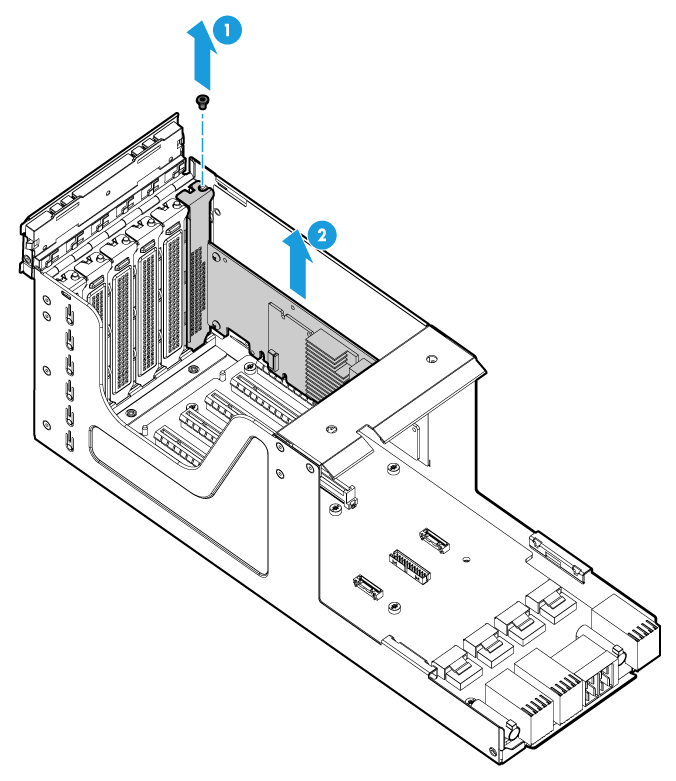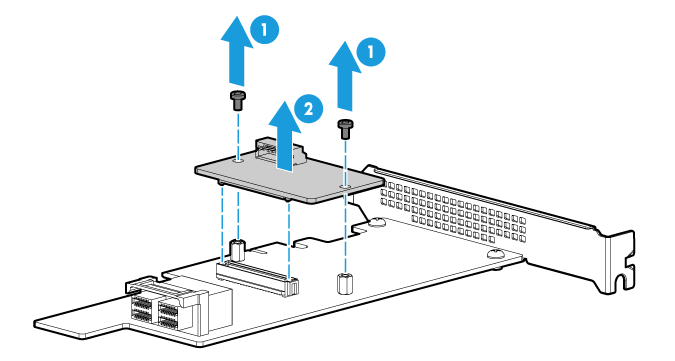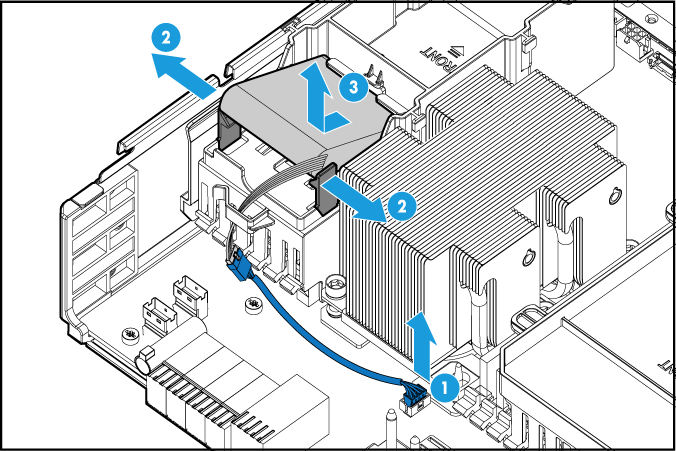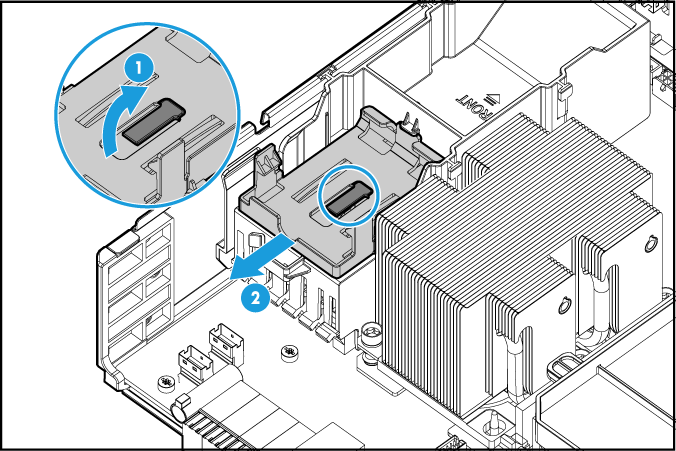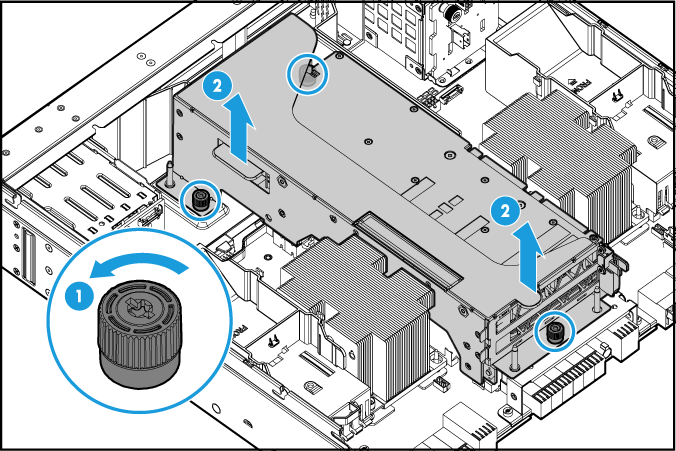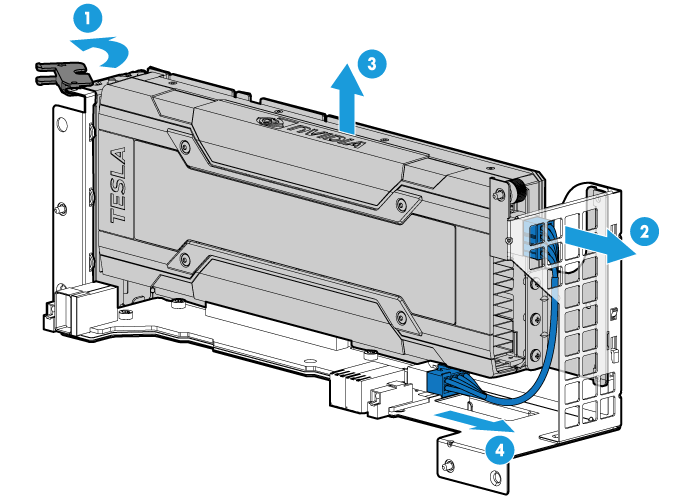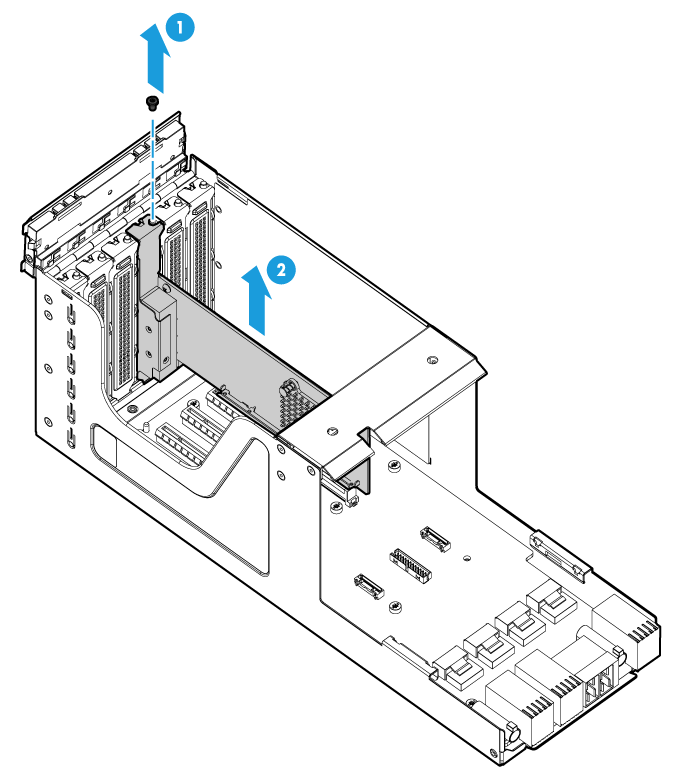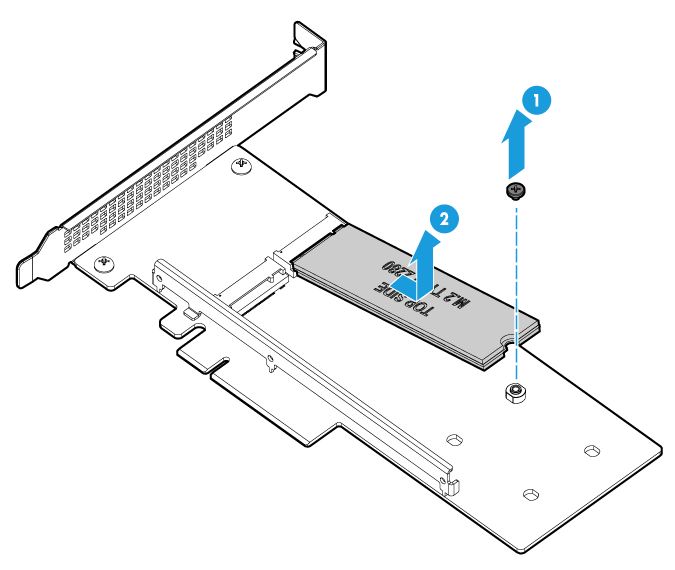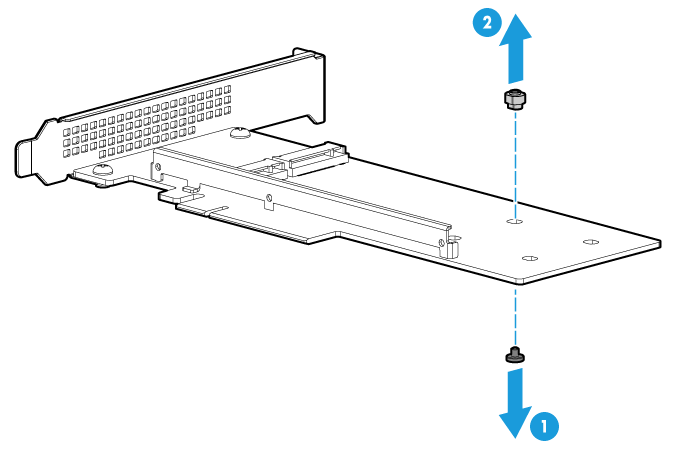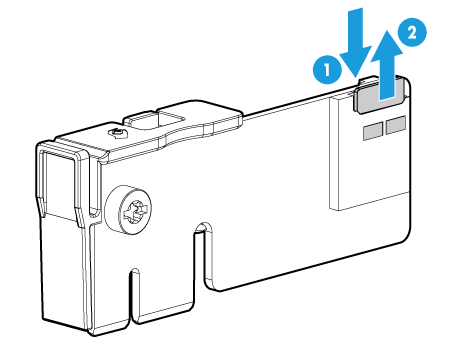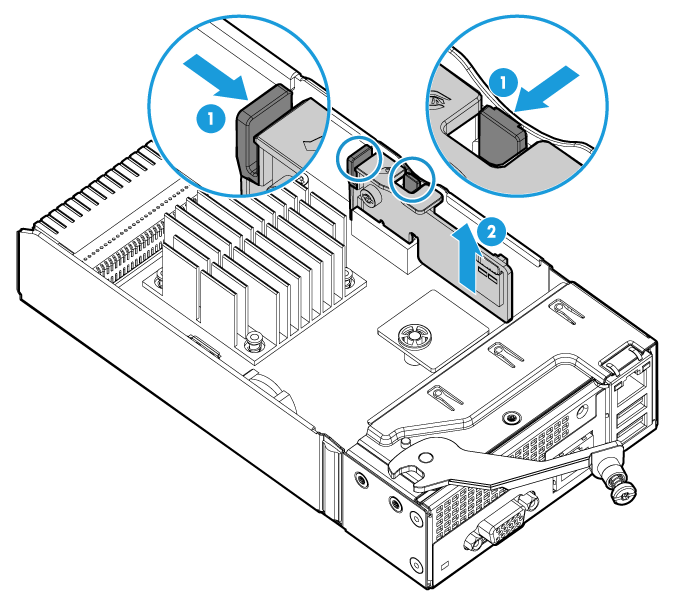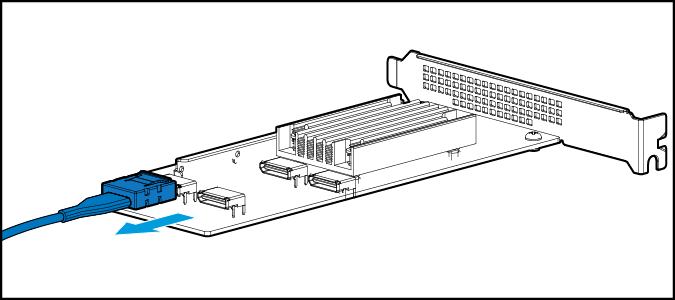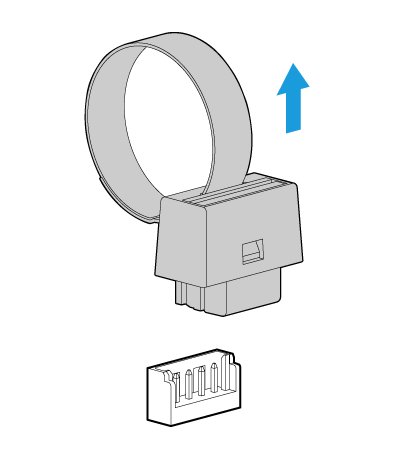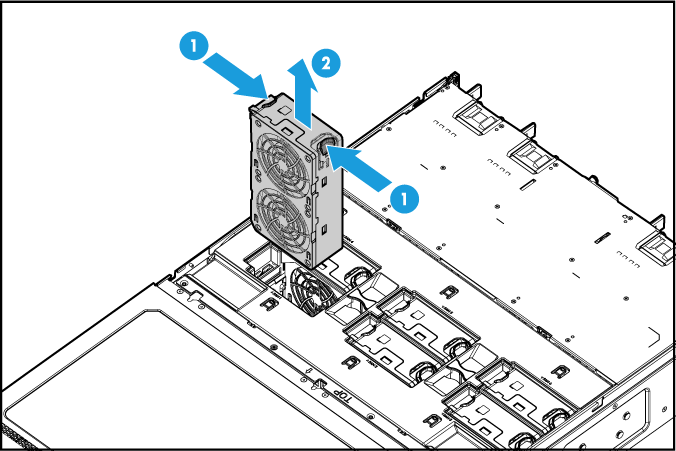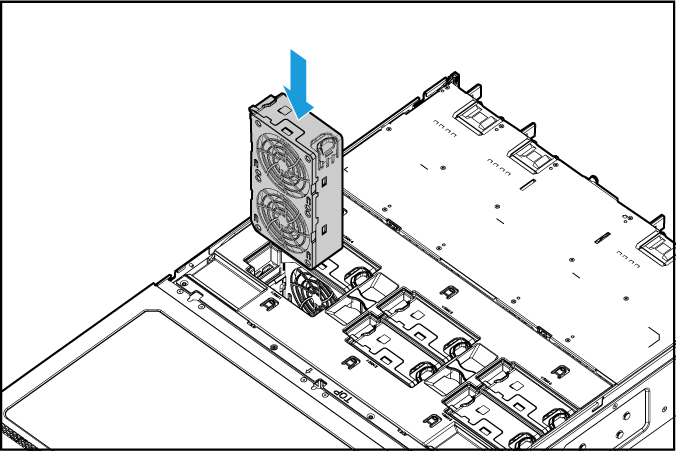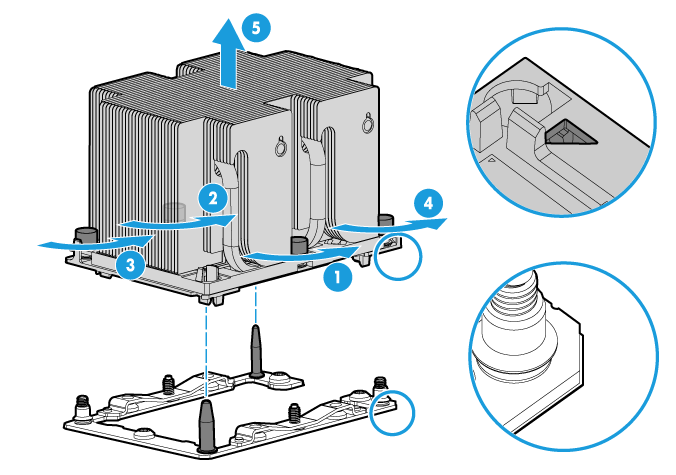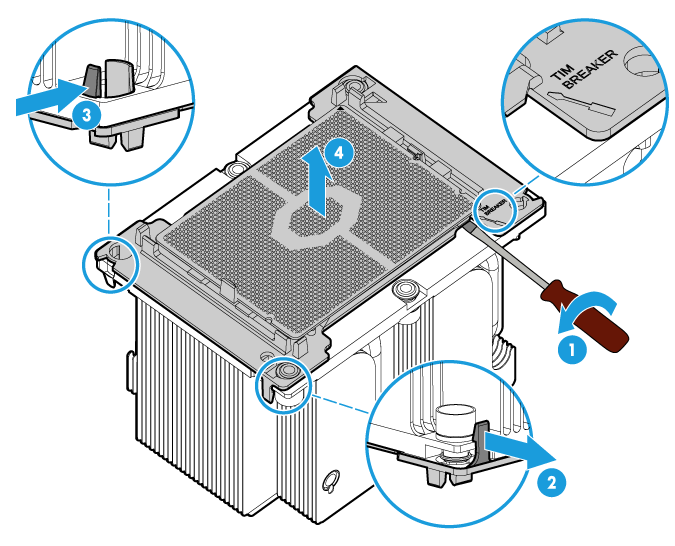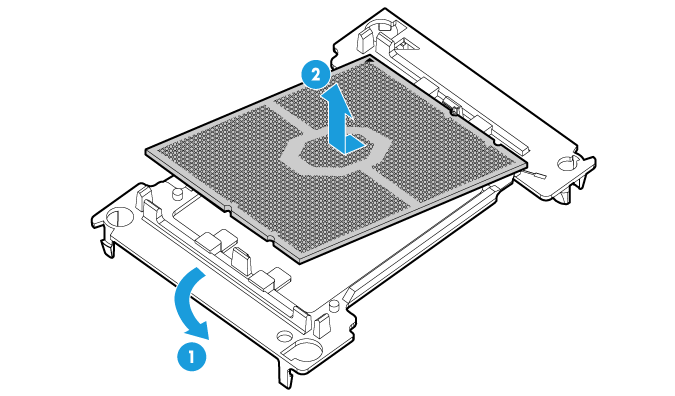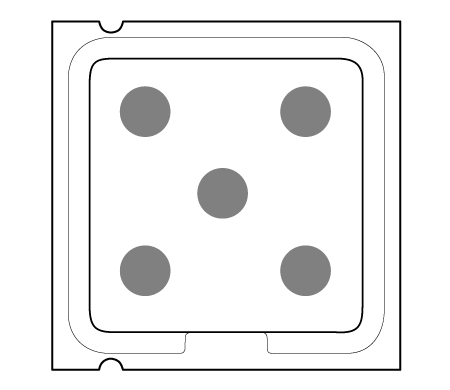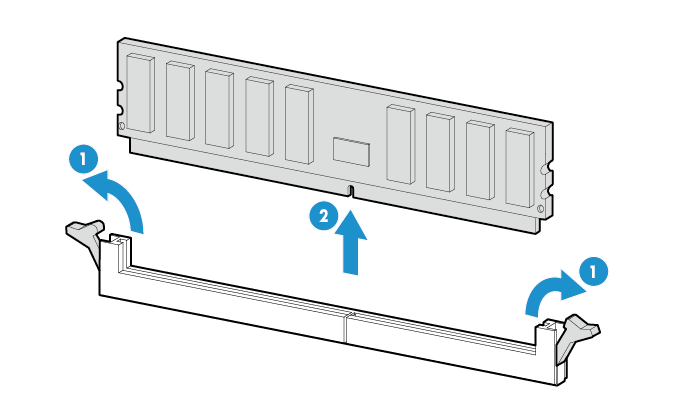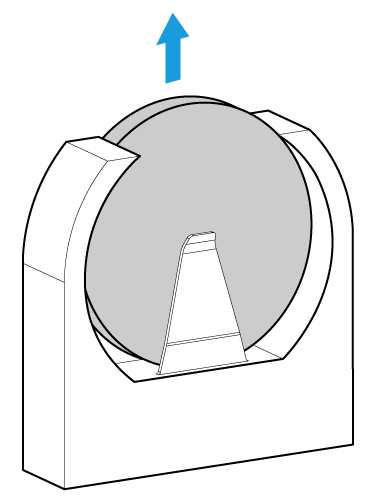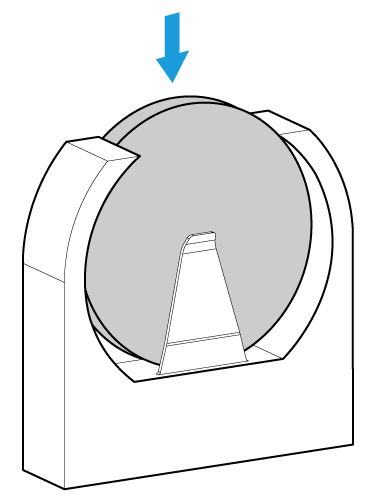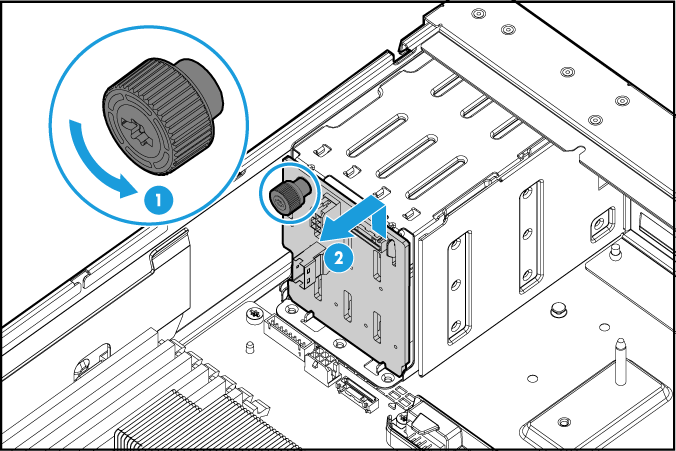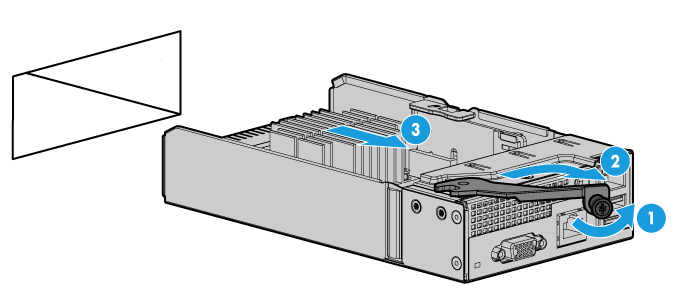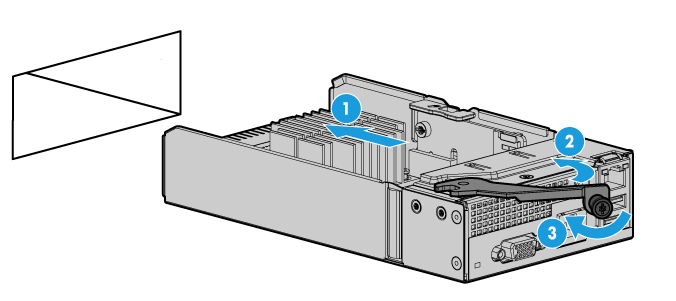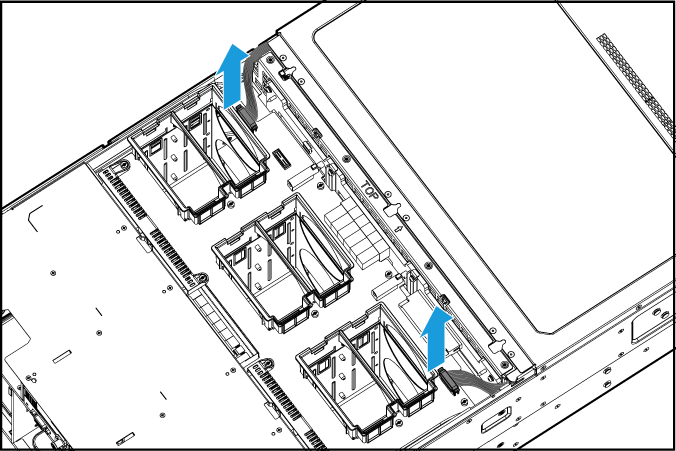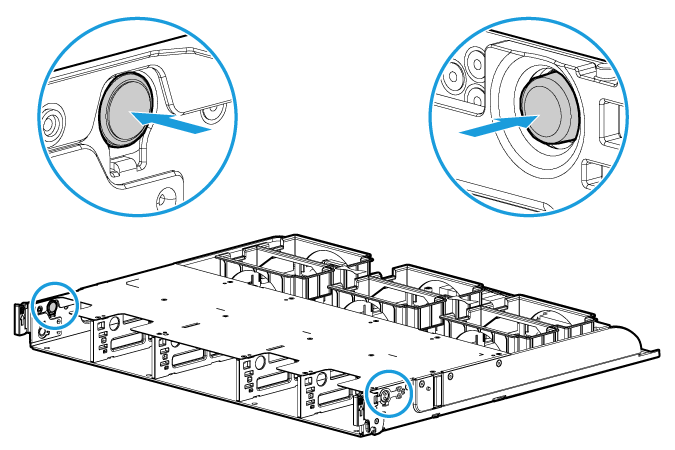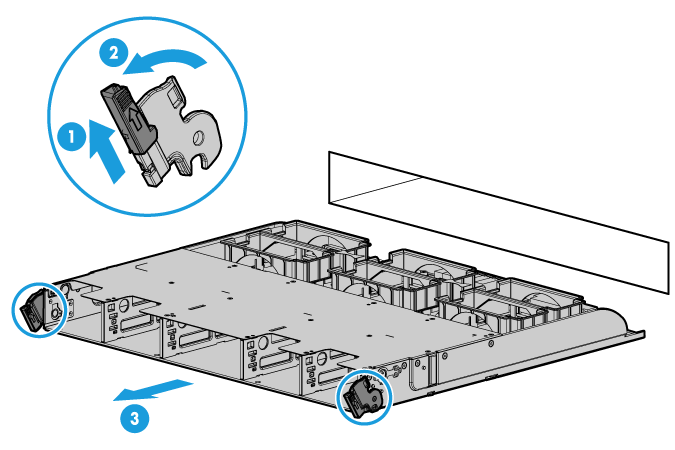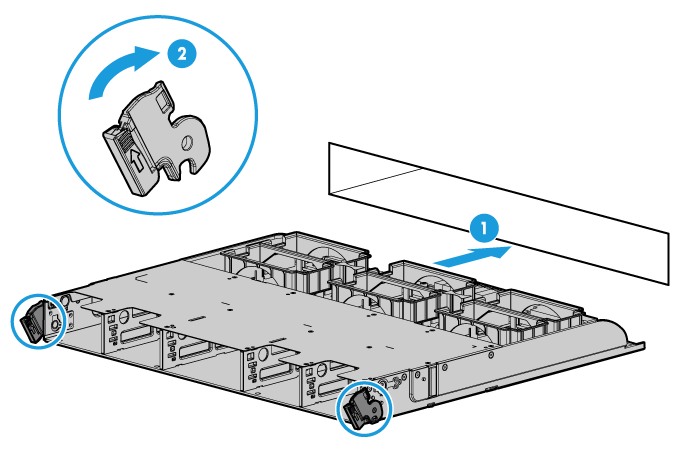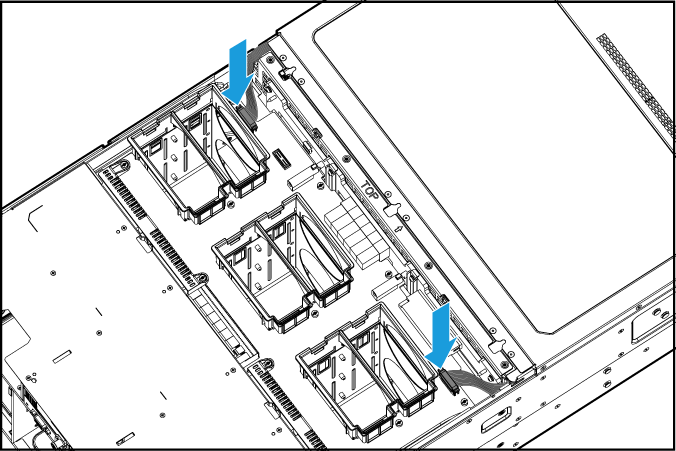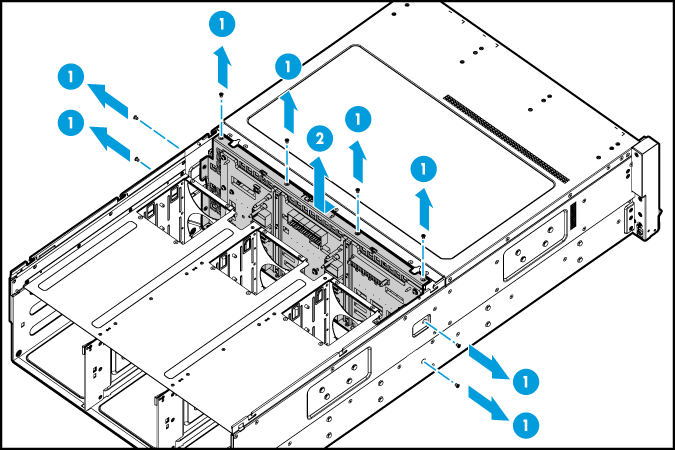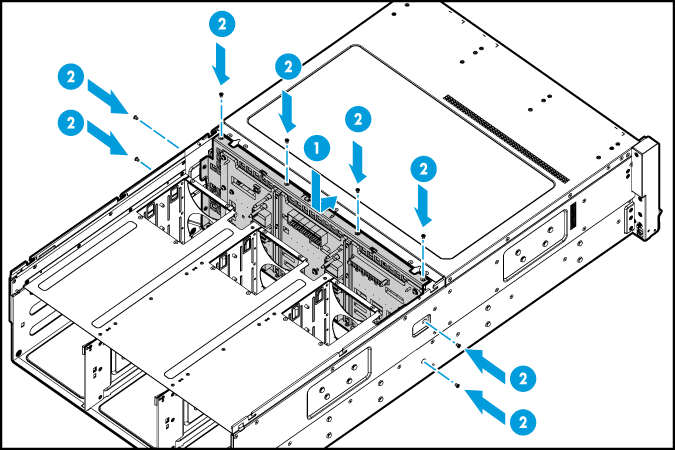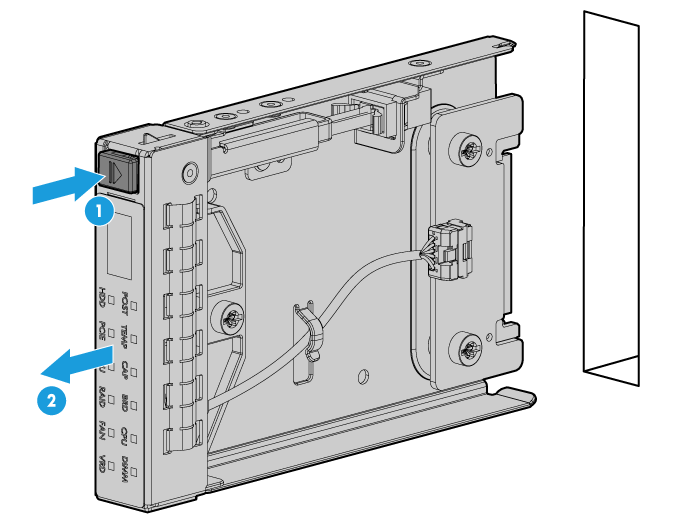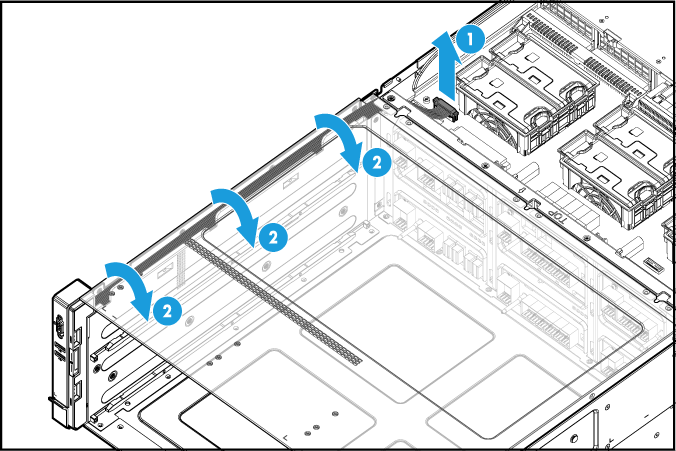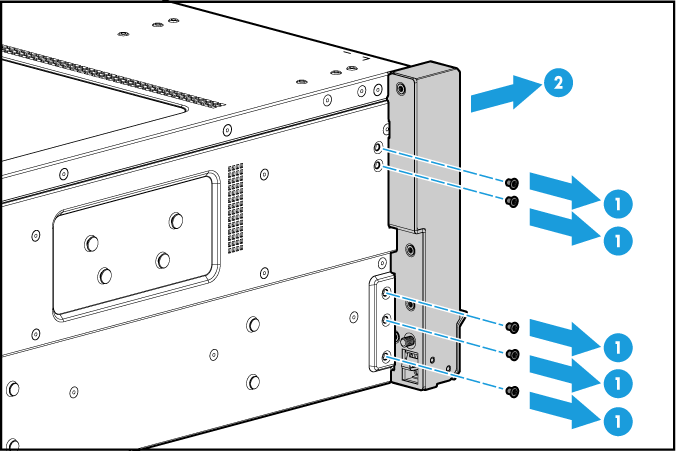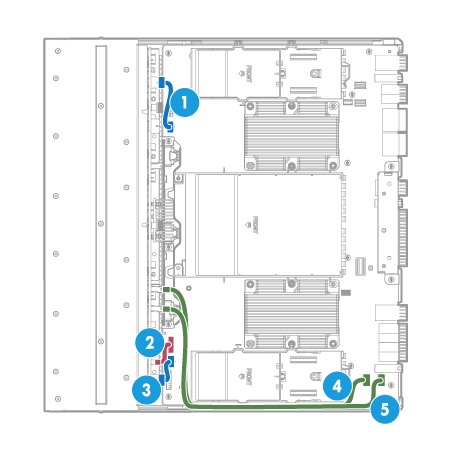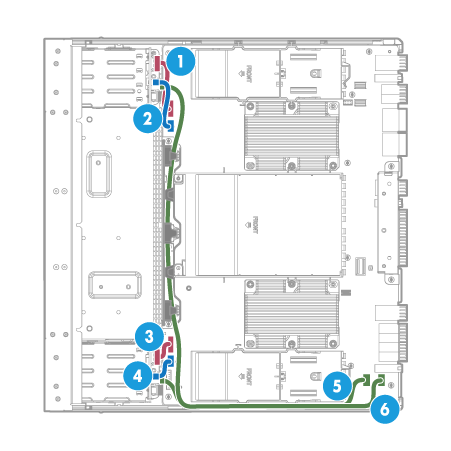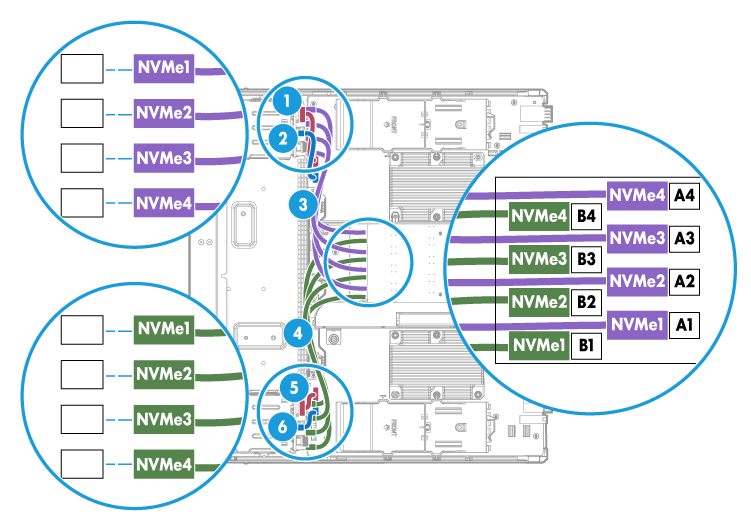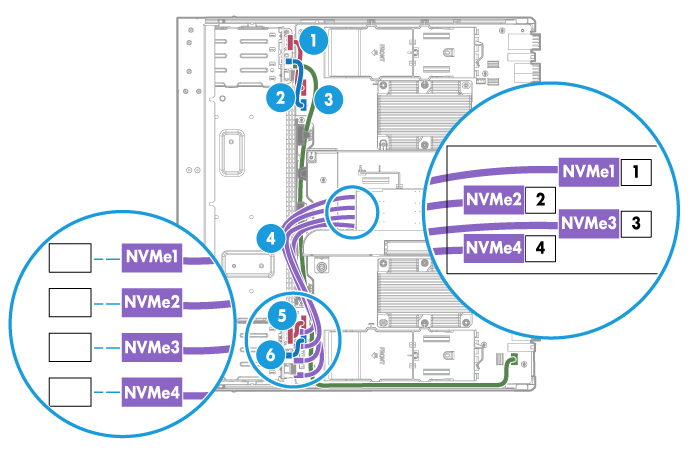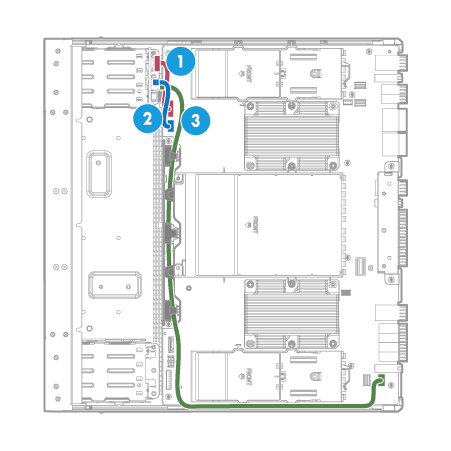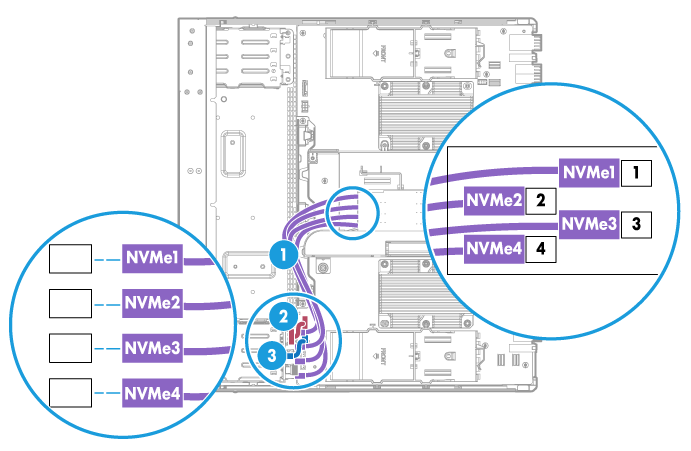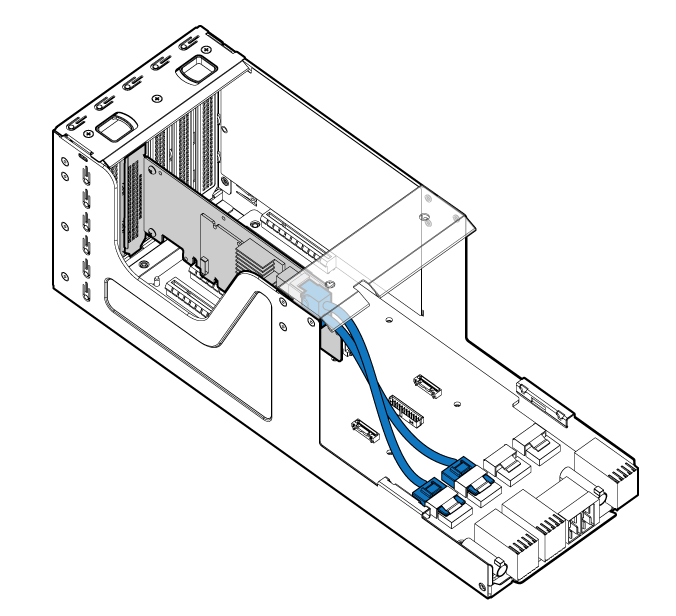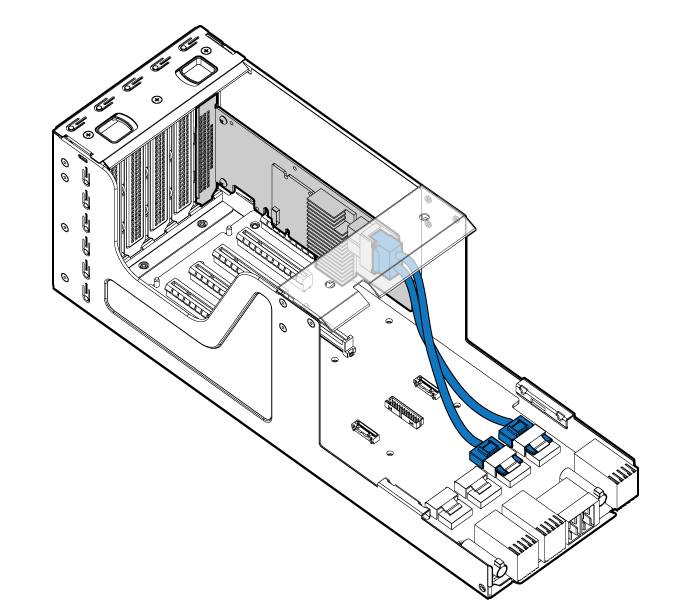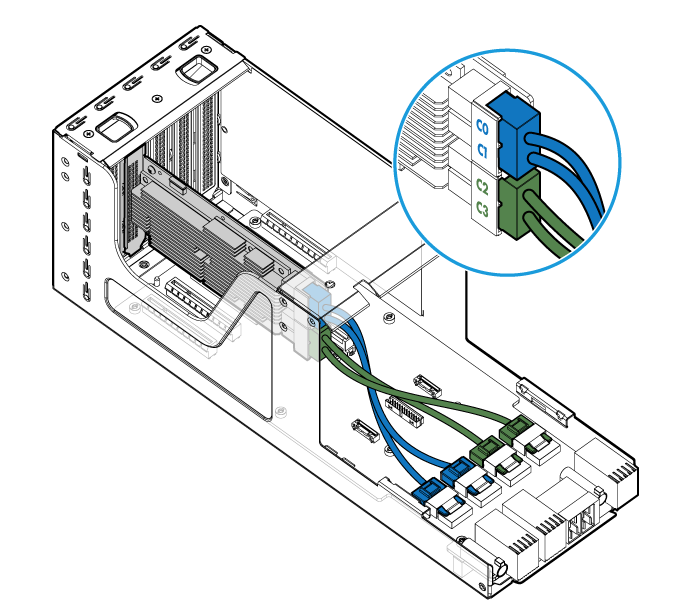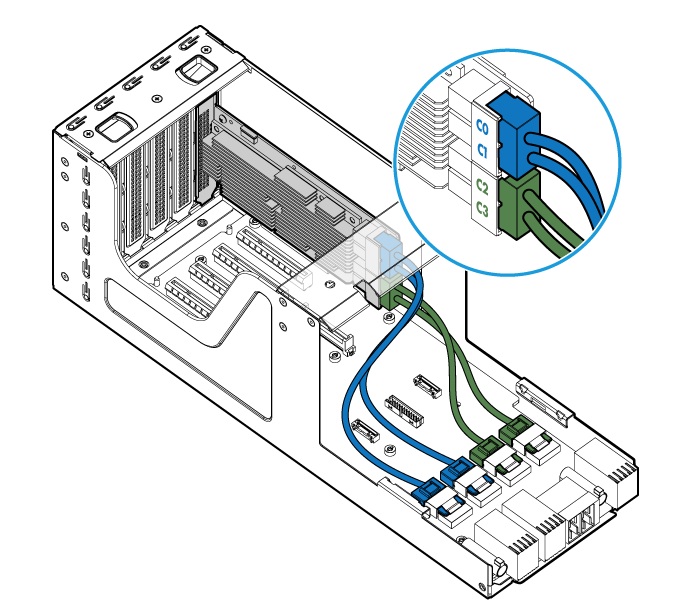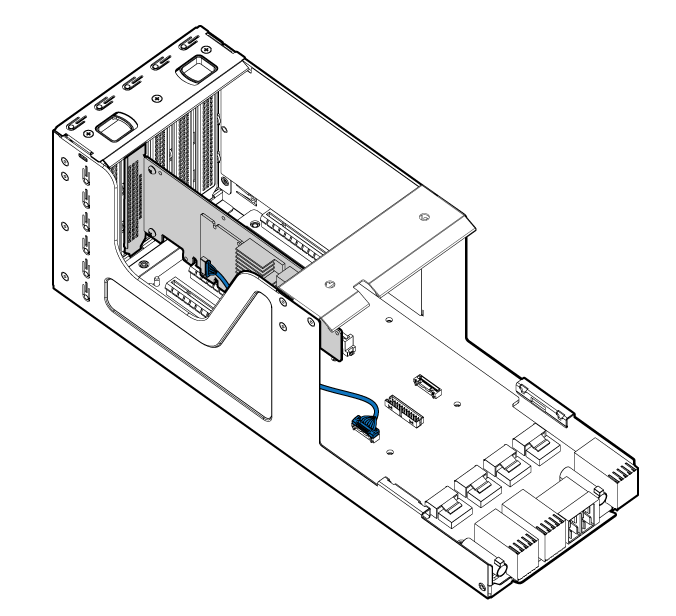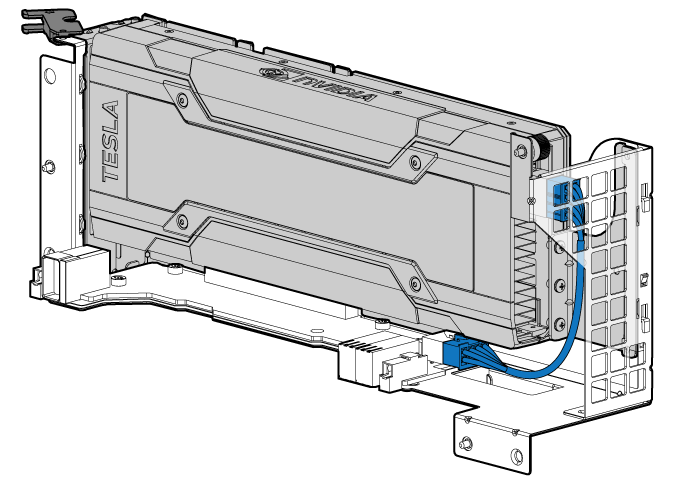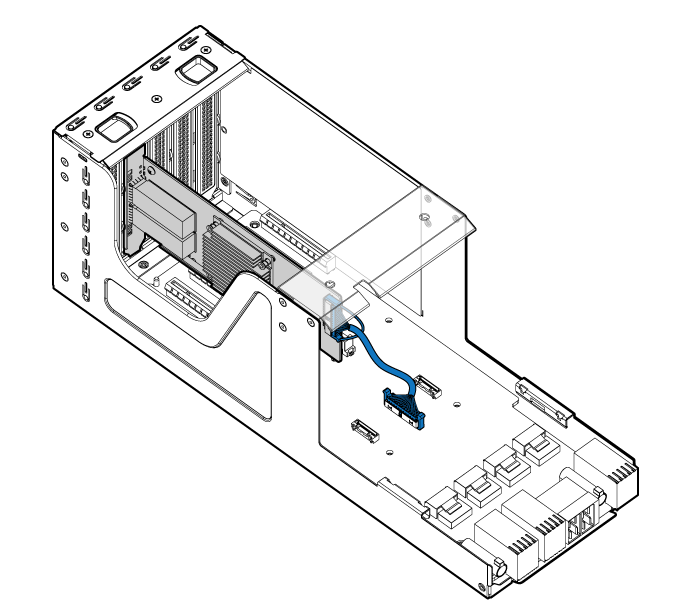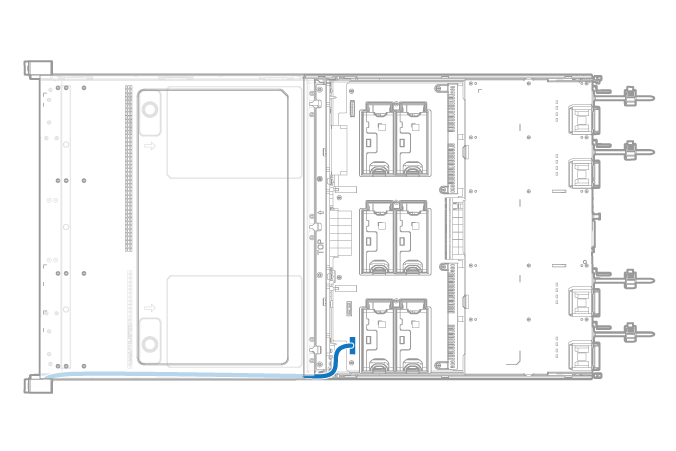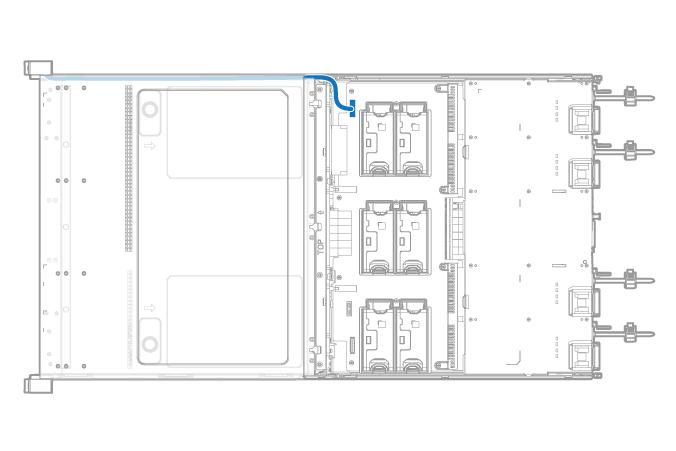- Table of Contents
- Related Documents
-
01-Text
Installation safety recommendations
Installation site requirements
Space and airflow requirements
Temperature, humidity, and altitude requirements
Installing or removing the server
Installing the chassis rails and slide rails
Connecting a mouse, keyboard, and monitor
Removing the server from a rack
Powering on and powering off the server
Configuring basic BIOS settings
Installing the operating system and hardware drivers
Installing the operating system
Installing the low mid air baffle or GPU module air baffle to a compute module
Installing the GPU module air baffle to a rear riser card
Installing riser cards and PCIe modules
Installing a riser card and a PCIe module in a compute module
Installing riser cards and PCIe modules at the server rear
Installing storage controllers and power fail safeguard modules
Installing a GPU module in a compute module
Installing a GPU module to a rear riser card
Installing an mLOM network adapter
Installing a PCIe network adapter
Installing a PCIe M.2 SSD in a compute module
Installing a PCIe M.2 SSD at the server rear
Installing an NVMe SSD expander module
Installing the NVMe VROC module
Installing the LCD smart management module
Installing and setting up a TCM or TPM
Installation and setup flowchart
Enabling the TCM or TPM in the BIOS
Configuring encryption in the operating system
Replacing a compute module and its main board
Removing the main board of a compute module
Installing a compute module and its main board
Replacing a compute module access panel
Replacing the chassis access panel
Replacing air baffles in a compute module
Replacing the power supply air baffle
Replacing a riser card air baffle
Replacing a riser card and a PCIe module
Replacing the riser card and PCIe module in a compute module
Replacing a riser card and PCIe module at the server rear
Replacing a storage controller
Replacing the power fail safeguard module for a storage controller
Replacing the GPU module in a compute module
Replacing a GPU module at the server rear
Replacing an mLOM network adapter
Replacing a PCIe network adapter
Replacing an M.2 transfer module and a PCIe M.2 SSD
Replacing the M.2 transfer module and a PCIe M.2 SSD in a compute module
Replacing an M.2 transfer module and a PCIe M.2 SSD at the server rear
Replacing the dual SD card extended module
Replacing an NVMe SSD expander module
Replacing the NVMe VROC module
Replacing the management module
Removing the management module
Installing the management module
Replacing the diagnostic panel
Replacing the LCD smart management module
Connecting drive cables in compute modules
Storage controller cabling in riser cards at the server rear
Connecting the flash card on a storage controller
Connecting the NCSI cable for a PCIe network adapter
Connecting the front I/O component cable from the right chassis ear
Connecting the cable for the front VGA and USB 2.0 connectors on the left chassis ear
Monitoring the temperature and humidity in the equipment room
Safety information
Safety sign conventions
To avoid bodily injury or damage to the server or its components, make sure you are familiar with the safety signs on the server chassis or its components.
Table 1 Safety signs
|
Sign |
Description |
|
Circuit or electricity hazards are present. Only H3C authorized or professional server engineers are allowed to service, repair, or upgrade the server. To avoid bodily injury or damage to circuits, do not open any components marked with the electrical hazard sign unless you have authorization to do so. |
|
|
Electrical hazards are present. Field servicing or repair is not allowed. To avoid bodily injury, do not open any components with the field-servicing forbidden sign in any circumstances. |
|
|
The surface or component might be hot and present burn hazards. To avoid being burnt, allow hot surfaces or components to cool before touching them. |
|
|
The server or component is heavy and requires more than one people to carry or move. To avoid bodily injury or damage to hardware, do not move a heavy component alone. In addition, observe local occupational health and safety requirements and guidelines for manual material handling. |
|
|
The server is powered by multiple power supplies. To avoid bodily injury from electrical shocks, make sure you disconnect all power supplies if you are performing offline servicing. |
Power source recommendations
Power instability or outage might cause data loss, service disruption, or damage to the server in the worst case.
To protect the server from unstable power or power outage, use uninterrupted power supplies (UPSs) to provide power for the server.
Installation safety recommendations
To avoid bodily injury or damage to the server, read the following information carefully before you operate the server.
General operating safety
To avoid bodily injury or damage to the server, follow these guidelines when you operate the server:
· Only H3C authorized or professional server engineers are allowed to install, service, repair, operate, or upgrade the server.
· Make sure all cables are correctly connected before you power on the server.
· Place the server on a clean, stable table or floor for servicing.
· To avoid being burnt, allow the server and its internal modules to cool before touching them.
Electrical safety
|
WARNING! If you put the server in standby mode (system LED in amber) with the power on/standby button on the front panel, the power supplies continue to supply power to some circuits in the server. To remove all power for servicing safety, you must first press the button until the system LED turns into steady amber, and then remove all power cords from the server. |
To avoid bodily injury or damage to the server, follow these guidelines:
· Always use the power cords that came with the server.
· Do not use the power cords that came with the server for any other devices.
· Power off the server when installing or removing any components that are not hot swappable.
Rack mounting recommendations
To avoid bodily injury or damage to the equipment, follow these guidelines when you rack mount a server:
· Mount the server in a standard 19-inch rack.
· Make sure the leveling jacks are extended to the floor and the full weight of the rack rests on the leveling jacks.
· Couple the racks together in multi-rack installations.
· Load the rack from the bottom to the top, with the heaviest hardware unit at the bottom of the rack.
· Get help to lift and stabilize the server during installation or removal, especially when the server is not fastened to the rails. As a best practice, a minimum of four people are required to safely load or unload a rack. A fifth person might be required to help align the server if the server is installed higher than check level.
· For rack stability, make sure only one unit is extended at a time. A rack might get unstable if more than one server unit is extended.
· Make sure the rack is stable when you operate a server in the rack.
· To maintain correct airflow and avoid thermal damage to the server, use blanks to fill empty rack units.
ESD prevention
Preventing electrostatic discharge
To prevent electrostatic damage, follow these guidelines:
· Transport or store the server with the components in antistatic bags.
· Keep the electrostatic-sensitive components in the antistatic bags until they arrive at an ESD-protected area.
· Place the components on a grounded surface before removing them from their antistatic bags.
· Avoid touching pins, leads, or circuitry.
· Make sure you are reliably grounded when touching an electrostatic-sensitive component or assembly.
Grounding methods to prevent electrostatic discharge
The following are grounding methods that you can use to prevent electrostatic discharge:
· Wear an ESD wrist strap and make sure it makes good skin contact and is reliably grounded.
· Take adequate personal grounding measures, including wearing antistatic clothing, static dissipative shoes, and antistatic gloves.
· Use conductive field service tools.
· Use a portable field service kit with a folding static-dissipating work mat.
Cooling performance
Poor cooling performance might result from improper airflow and poor ventilation and might cause damage to the server.
To ensure good ventilation and proper airflow, follow these guidelines:
· Install blanks if the following module slots are empty:
¡ Compute module slots.
¡ Drive bays.
¡ Rear riser card bays.
¡ PCIe slots.
¡ Power supply slots.
· Do not block the ventilation openings in the server chassis.
· To avoid thermal damage to the server, do not operate the server for long periods in any of the following conditions:
¡ Access panel open or uninstalled.
¡ Air baffles uninstalled.
¡ PCIe slots, drive bays, or power supply slots empty.
· If the server is stacked in a rack with other devices, make sure there is a minimum clearance of 2 mm (0.08 in) below and above the server.
Battery safety
The server's management module contains a system battery, which is designed with a lifespan of 5 to 10 years.
If the server no longer automatically displays the correct date and time, you might need to replace the battery. When you replace the battery, follow these safety guidelines:
· Do not attempt to recharge the battery.
· Do not expose the battery to a temperature higher than 60°C (140°F).
· Do not disassemble, crush, puncture, short external contacts, or dispose of the battery in fire or water.
· Dispose of the battery at a designated facility. Do not throw the battery away together with other wastes.
Preparing for installation
Prepare a rack that meets the rack requirements and plan an installation site that meets the requirements of space and airflow, temperature, humidity, equipment room height, cleanliness, and grounding.
Rack requirements
|
IMPORTANT: As a best practice to avoid affecting the server chassis, install power distribution units (PDUs) with the outputs facing backwards. If you install PDUs with the outputs facing the inside of the server, please perform onsite survey to make sure the cables won't affect the server rear. |
The server is 4U high. The rack for installing the server must meet the following requirements:
· A standard 19-inch rack.
· A clearance of more than 50 mm (1.97 in) between the rack front posts and the front rack door.
· A minimum of 1200 mm (47.24 in) in depth as a best practice. For installation limits for different rack depth, see Table 2.
Table 2 Installation limits for different rack depths
|
Rack depth |
Installation limits |
|
1000 mm (39.37 in) |
· H3C cable management arm (CMA) is not supported. · A clearance of 60 mm (2.36 in) is reserved from the server rear to the rear rack door for cabling. · The slide rails and PDUs might hinder each other. Perform onsite survey to determine the PDU installation location and the proper PDUs. If the PDUs hinder the installation and movement of the slide rails anyway, use other methods to support the server, a tray for example. |
|
1100 mm (43.31 in) |
Make sure the CMA does not hinder PDU installation at the server rear before installing the CMA. If the CMA hinders PDU installation, use a deeper rack or change the installation locations of PDUs. |
|
1200 mm (47.24 in) |
Make sure the CMA does not hinder PDU installation or cabling. If the CMA hinders PDU installation or cabling, change the installation locations of PDUs. For detailed installation suggestions, see Figure 1. |
Figure 1 Installation suggestions for a 1200 mm deep rack (top view)
|
(1) 1200 mm (47.24 in) rack depth |
|
(2) A minimum of 50 mm (1.97 in) between the rack front posts and the front rack door |
|
(3) 830 mm (32.68 in) between the rack front posts and the rear of the chassis, including power supply handles at the server rear (not shown in the figure) |
|
(4) 830 mm (32.68 in) server depth, including chassis ears |
|
(5) 950 mm (37.40 in) between the front rack posts and the CMA |
|
(6) 860 mm (33.86 in) between the front rack posts and the rear ends of the slide rails |
Installation site requirements
Space and airflow requirements
For convenient maintenance and heat dissipation, make sure the following requirements are met:
· The passage for server transport is a minimum of 1500 mm (59.06 in) wide.
· A minimum clearance of 1200 mm (47.24 in) is reserved from the front of the rack to the front of another rack or row of racks.
· A minimum clearance of 800 mm (31.50 in) is reserved from the back of the rack to the rear of another rack or row of racks.
· A minimum clearance of 1000 mm (39.37 in) is reserved from the rack to any wall.
· The air intake and outlet vents of the server are not blocked.
· The front and rear rack doors are adequately ventilated to allow ambient room air to enter the cabinet and allow the warm air to escape from the cabinet.
· The air conditioner in the equipment room provides sufficient air flow for heat dissipation of devices in the room.
Figure 2 Airflow through the server
|
(1) to (8) Directions of the airflow into the chassis and power supplies |
|
(9) to (10) Directions of the airflow out of the chassis |
Temperature, humidity, and altitude requirements
To ensure correct operation of the server, make sure the room temperature, humidity, and altitude meet the requirements as described in "Appendix D Environment requirements."
Cleanliness requirements
Mechanically active substances buildup on the chassis might result in electrostatic adsorption, which causes poor contact of metal components and contact points. In the worst case, electrostatic adsorption can cause communication failure.
Table 3 Mechanically active substance concentration limit in the equipment room
|
Substance |
Particle diameter |
Concentration limit |
|
Dust particles |
≥ 5 µm |
≤ 3 x 104 particles/m3 (No visible dust on desk in three days) |
|
Dust (suspension) |
≤ 75 µm |
≤ 0.2 mg/m3 |
|
Dust (sedimentation) |
75 µm to 150 µm |
≤ 1.5 mg/(m2h) |
|
Sand |
≥ 150 µm |
≤ 30 mg/m3 |
The equipment room must also meet limits on salts, acids, and sulfides to eliminate corrosion and premature aging of components, as shown in Table 4.
Table 4 Harmful gas limits in an equipment room
|
Gas |
Maximum concentration (mg/m3) |
|
SO2 |
0.2 |
|
H2S |
0.006 |
|
NO2 |
0.04 |
|
NH3 |
0.05 |
|
Cl2 |
0.01 |
Grounding requirements
Correctly connecting the server grounding cable is crucial to lightning protection, anti-interference, and ESD prevention. The server can be grounded through the grounding wire of the power supply system and no external grounding cable is required.
Storage requirements
To store the server, an HDD, or an SSD for 3 months or longer without power supply, power on the server, HDD, or SSD at least once every 3 months as a best practice. Make sure the power-on operation time is not less than 2 hours. For more information about powering on or off the server, see "Powering on and powering off the server."
As a best practice to avoid data loss, make sure the power-off storage time is less than 180 days for an HDD and less than 90 days for an SSD, M.2 SSD, or SD card.
Installation tools
Table 5 lists the tools that you might use during installation.
|
Picture |
Name |
Description |
|
T25 Torx screwdriver |
For captive screws inside chassis ears. |
|
|
T30 Torx screwdriver (Electric screwdriver) |
For captive screws on processor heatsinks. |
|
|
T15 Torx screwdriver (shipped with the server) |
For replacing the management module. |
|
|
T10 Torx screwdriver (shipped with the server) |
For screws on PCIe modules. |
|
|
Flat-head screwdriver |
For replacing processors or the management module. |
|
|
Phillips screwdriver |
For screws on PCIe M.2 SSDs. |
|
|
|
Cage nut insertion/extraction tool |
For insertion and extraction of cage nuts in rack posts. |
Diagonal pliers |
For clipping insulating sleeves. |
|
Paper knife |
For unwrapping the server. |
|
|
Tape measure |
For distance measurement. |
|
|
Multimeter |
For resistance and voltage measurement. |
|
|
ESD wrist strap |
For ESD prevention when you operate the server. |
|
|
Antistatic gloves |
For ESD prevention when you operate the server. |
|
|
Antistatic clothing |
For ESD prevention when you operate the server. |
|
|
Ladder |
For high-place operations. |
|
|
Interface cable (such as an Ethernet cable or optical fiber) |
For connecting the server to an external network. |
|
|
Monitor (such as a PC) |
For displaying the output from the server. |
Installing or removing the server
Installing the server
As a best practice, install hardware options to the server (if needed) before installing the server in the rack. For more information about how to install hardware options, see "Installing hardware options."
Installing the chassis rails and slide rails
Install the chassis rails to the server and the slide rails to the rack. For information about installing the rails, see the installation guide shipped with the rails.
Rack-mounting the server
|
WARNING! To avoid bodily injury, slide the server into the rack with caution for the sliding rails might squeeze your fingers. |
1. Remove the screws from both sides of the server, as shown in Figure 3.
Figure 3 Removing the screws from both sides of the server
2. Remove the security bezel, if any. For more information, see "Replacing the security bezel."
3. (Optional.) Remove the compute modules if the server is too heavy for mounting. For more information, see "Removing a compute module."
4. Install the chassis handles. For more information, see the labels on the handles.
5. Lift the server and slide the server into the rack along the slide rails, as shown in Figure 4.
Remove the chassis handles as you slide the server into the rack. For more information, see the labels on the handles.
Figure 4 Rack-mounting the server
6. Secure the server, as shown in Figure 5:
a. Push the server until the chassis ears are flush against the rack front posts, as shown by callout 1.
b. Unlock the latches of the chassis ears, as shown by callout 2.
c. Fasten the captive screws inside the chassis ears and lock the latches, as shown by callout 3.
7. Install the removed compute modules. For more information, see "Installing a compute module."
|
CAUTION: To avoid errors such as drive identification failure, make sure each compute module is installed into the correct slot. You can view the compute module label pasted on the module's package to determine the correct slot. |
8. Install the removed security bezel. For more information, see "Installing the security bezel."
(Optional) Installing the CMA
Install the CMA if the server is shipped with the CMA. For information about how to install the CMA, see the installation guide shipped with the CMA.
Connecting external cables
Cabling guidelines
|
WARNING! To avoid electric shock, fire, or damage to the equipment, do not connect communication equipment to RJ-45 Ethernet ports on the server. |
· For heat dissipation, make sure no cables block the inlet or outlet air vents of the server.
· To easily identify ports and connect/disconnect cables, make sure the cables do not cross.
· Label the cables for easy identification of the cables.
· Wrap unused cables onto an appropriate position on the rack.
· To avoid damage to cables when extending the server out of the rack, do not route the cables too tight if you use the CMA.
Connecting a mouse, keyboard, and monitor
About this task
The server provides a maximum of two VGA connectors for connecting a monitor.
· One on the front panel provided by the left chassis ear.
· One on the rear panel.
|
IMPORTANT! The two VGA connectors on the server cannot be used at the same time. |
The server does not provide ports for standard PS2 mouse and keyboard. To connect a PS2 mouse and keyboard, you must prepare a USB-to-PS2 adapter.
Procedure
1. Connect one plug of a VGA cable to a VGA connector on the server, and fasten the screws on the plug.
Figure 6 Connecting a VGA cable
2. Connect the other plug of the VGA cable to the VGA connector on the monitor, and fasten the screws on the plug.
3. Connect the mouse and keyboard.
¡ For a USB mouse and keyboard, directly connect the USB connectors of the mouse and keyboard to the USB connectors on the server.
¡ For a PS2 mouse and keyboard, insert the USB connector of the USB-to-PS2 adapter to a USB connector on the server. Then, insert the PS2 connectors of the mouse and keyboard into the PS2 receptacles of the adapter.
Figure 7 Connecting a PS2 mouse and keyboard by using a USB-to-PS2 adapter
Connecting an Ethernet cable
About this task
Perform this task before you set up a network environment or log in to the HDM management interface through the HDM network port to manage the server.
Prerequisites
Install an mLOM or PCIe network adapter. For more information, see "Installing network adapters."
Procedure
1. Determine the network port on the server.
¡ To connect the server to the external network, use an Ethernet port on a network adapter.
¡ To log in to the HDM management interface, use the HDM dedicated network port or shared network port. For the position of the HDM network port, see rear panel view in "Appendix A Server specifications."
2. Determine the type of the Ethernet cable.
Verify the connectivity of the cable by using a link tester.
If you are replacing the Ethernet cable, make sure the new cable is of the same type with the old cable or compatible with the old cable.
3. Label the Ethernet cable by filling in the names and numbers of the server and the peer device on the label.
As a best practice, use labels of the same kind for all cables.
If you are replacing the Ethernet cable, label the new cable with the same number as the number of the old cable.
4. Connect one end of the Ethernet cable to the network port on the server and the other end to the peer device.
Figure 8 Connecting an Ethernet cable
5. Verify network connectivity.
After powering on the server, use the ping command to test the network connectivity. If the connection between the server and the peer device fails, make sure the Ethernet cable is correctly connected.
6. Secure the Ethernet cable. For information about how to secure cables, see "Securing cables."
Connecting a USB device
About this task
Perform this task before you install the operating system of the server or transmit data through a USB device.
The server provides six USB connectors.
· Five external USB connectors on the front and rear panels for connecting USB devices that are designed to be installed and removed very often:
¡ Two USB 2.0 connectors provided by the left chassis ear on the front panel.
¡ One USB 3.0 connector provided by the right chassis ear on the front panel.
¡ Two USB 3.0 connectors on the rear panel.
· One internal USB 3.0 connector for connecting USB devices that are not designed to be installed and removed very often.
Guidelines
Before connecting a USB device, make sure the USB device can operate correctly and then copy data to the USB device.
USB devices are hot swappable. However, to connect a USB device to the internal USB connector or remove a USB device from the internal USB connector, power off the server first.
As a best practice for compatibility, purchase H3C certified USB devices.
Connecting a USB device to the internal USB connector
1. Power off the server. For more information, see "Powering off the server."
2. Disconnect all the cables from the management module.
3. Remove the management module. For more information, see "Removing the management module."
4. Connect the USB device. For the location of the internal USB connector, see management module components in "Appendix A Server specifications."
5. Install the management module. For more information, see "Installing the management module."
6. Reconnect the removed cables to the management module.
7. Power on the server. For more information, see "Powering on the server."
8. Verify that the server can identify the USB device.
If the server fails to identify the USB device, download and install the driver of the USB device. If the server still fails to identify the USB device after the driver is installed, replace the USB device.
Connecting a USB device to an external USB connector
1. Connect the USB device.
2. Verify that the server can identify the USB device.
If the server fails to identify the USB device, download and install the driver of the USB device. If the server still fails to identify the USB device after the driver is installed, replace the USB device.
Connecting the power cord
Guidelines
|
WARNING! To avoid damage to the equipment or even bodily injury, use the power cord that ships with the server. |
Before connecting the power cord, make sure the server and components are installed correctly.
Procedure
1. Insert the power cord plug into the power receptacle of a power supply at the rear panel, as shown in Figure 9.
Figure 9 Connecting the power cord
2. Connect the other end of the power cord to the power source, for example, the power strip on the rack.
3. Secure the power cord to avoid unexpected disconnection of the power cord.
a. (Optional.) If the cable clamp is positioned too near the power cord and blocks the power cord plug connection, press down the tab on the cable mount and slide the clamp backward.
Figure 10 Sliding the cable clamp backward
b. Open the cable clamp, place the power cord through the opening in the cable clamp, and then close the cable clamp, as shown by callouts 1, 2, 3, and 4 in Figure 11.
Figure 11 Securing the power cord
c. Slide the cable clamp forward until it is flush against the edge of the power cord plug, as shown in Figure 12.
Figure 12 Sliding the cable clamp forward
Securing cables
Securing cables to the CMA
For information about how to secure cables to the CMA, see the installation guide shipped with the CMA.
Securing cables to slide rails by using cable straps
You can secure cables to either left slide rails or right slide rails by using the cable straps provided with the server. As a best practice for cable management, secure cables to left slide rails.
When multiple cable straps are used in the same rack, stagger the strap location, so that the straps are adjacent to each other when viewed from top to bottom. This positioning will enable the slide rails to slide easily in and out of the rack.
To secure cables to slide rails by using cable straps:
1. Hold the cables against a slide rail.
2. Wrap the strap around the slide rail and loop the end of the cable strap through the buckle.
3. Dress the cable strap to ensure that the extra length and buckle part of the strap are facing outside of the slide rail.
Figure 13 Securing cables to a slide rail
Removing the server from a rack
1. Power down the server. For more information, see "Powering off the server."
2. Disconnect all peripheral cables from the server.
3. Extend the server from the rack, as shown in Figure 14.
a. Open the latches of the chassis ears.
b. Loosen the captive screws.
c. Slide the server out of the rack, during which install the chassis handles in sequence. For information about installing the chassis handles, see the labels on the handles.
Figure 14 Extending the server from the rack
4. Place the server on a clean, stable surface.
Powering on and powering off the server
Important information
If the server is connected to external storage devices, make sure the server is the first device to power off and then the last device to power on. This restriction prevents the server from mistakenly identifying the external storage devices as faulty devices.
After a power cord is connected, the system monitors the temperature of the mLOM network adapter, if any. If the temperature exceeds the upper threshold, the corresponding fan operates automatically to help heat dissipation even if the server is powered off.
Powering on the server
Prerequisites
Before you power on the server, you must complete the following tasks:
· Install the server and internal components correctly.
· Connect the server to a power source.
Procedure
Powering on the server by pressing the power on/standby button
Press the power on/standby button to power on the server.
The server exits standby mode and supplies power to the system. The system power LED changes from steady amber to flashing green and then to steady green. For information about the position of the system power LED, see LEDs and buttons in "Appendix A Server specifications."
Powering on the server from the HDM Web interface
For more information, see HDM online help.
Powering on the server from the remote console interface
For more information, see HDM online help.
Configuring automatic power-on
You can configure automatic power-on from HDM or the BIOS.
To configure automatic power-on from HDM:
1. Log in to HDM.
For information about how to log in to HDM, see the firmware update guide for the server.
2. In the navigation pane, select Power Manager > Meter Power.
The meter power configuration page opens.
3. Click the Automatic power-on tab and then select Always power on.
4. Click Save.
To configure automatic power-on from the BIOS, set AC Restore Settings to Always Power On. For more information, see the BIOS user guide for the server.
Powering off the server
Guidelines
Before powering off the server, you must complete the following tasks:
· Install the server and internal components correctly.
· Back up all critical data.
· Make sure all services have stopped or have been migrated to other servers.
Procedure
Powering off the server from its operating system
1. Connect a monitor, mouse, and keyboard to the server.
2. Shut down the operating system of the server.
3. Disconnect all power cords from the server.
Powering off the server by pressing the power on/standby button
|
IMPORTANT: This method forces the server to enter standby mode without properly exiting applications and the operating system. If an application stops responding, you can use this method to force a shutdown. As a best practice, do not use this method when the applications and the operating system are operating correctly. |
1. Press and hold the power on/standby button until the system power LED turns into steady amber.
2. Disconnect all power cords from the server.
Powering off the server from the HDM Web interface
1. Power off the server from the HDM Web interface.
For more information, see HDM online help.
2. Disconnect all power cords from the server.
Powering off the server from the remote console interface
1. Log in to HDM, launch a remote console, and then power off the server.
For more information, see HDM online help.
2. Disconnect all power cords from the server.
Configuring the server
The following information describes the procedures to configure the server after the server installation is complete.
Configuration flowchart
Figure 15 Configuration flowchart
Powering on the server
1. Power on the server. For information about the procedures, see "Powering on the server."
2. Verify that the health LED on the front panel is steady green, which indicates that the system is operating correctly. For more information about the health LED status, see LEDs and buttons in "Appendix A Server specifications."
Configuring basic BIOS settings
You can set the server boot order and the BIOS user and administrator passwords from the BIOS setup utility of the server.
Setting the server boot order
The server has a default boot order. To change the server boot order, access the Boot menu in the BIOS setup utility. For information about changing the server boot order, see the BIOS user guide for the server.
Setting the BIOS passwords
For information about how to set passwords and privileges for the BIOS administrator, see the BIOS user guide for the server.
Configuring RAID
Configure physical and logical drives (RAID arrays) for the server.
The supported RAID levels and RAID configuration methods vary by storage controller model. For more information, see the storage controller user guide for the server.
Installing the operating system and hardware drivers
Installing the operating system
Install a compatible operating system on the server by following the procedures described in the operating system installation guide for the server.
For information about the operating system compatibility, visit the query tool at http://www.h3c.com/cn/Service/Document_Software/Document_Center/Server/.
Installing hardware drivers
|
IMPORTANT: In case an update failure causes hardware unavailability, always back up the drivers before you update them. |
For newly installed hardware to operate correctly, the operating system must have the required hardware drivers.
To install a hardware driver, see the operating system installation guide for the server.
Updating firmware
|
IMPORTANT: Verify the hardware and software compatibility before firmware update. For information about the hardware and software compatibility, see the software release notes. |
You can update the following firmware from FIST or HDM:
· HDM.
· BIOS.
· CPLD.
· PDBCPLD.
· NDCPLD.
For information about the update procedures, see the firmware update guide for the server.
Installing hardware options
If you are installing multiple hardware options, read their installation procedures and identify similar steps to streamline the entire installation procedure.
Installing the security bezel
1. Press the right edge of the security bezel into the groove in the right chassis ear on the server, as shown by callout 1 in Figure 16.
2. Press the latch at the other end, close the security bezel, and then release the latch to secure the security bezel into place. See callouts 2 and 3 in Figure 16.
3. Insert the key provided with the bezel into the lock on the bezel and lock the security bezel, as shown by callout 4 in Figure 16. Then, pull out the key and keep it safe.
|
CAUTION: To avoid damage to the lock, hold down the key while you are turning the key. |
Figure 16 Installing the security bezel
Installing SAS/SATA drives
Guidelines
The drives are hot swappable. If you hot swap an HDD repeatedly within 30 seconds, the system might fail to identify the drive.
If you are using the drives to create a RAID, follow these restrictions and guidelines:
· To build a RAID (or logical drive) successfully, make sure all drives in the RAID are the same type (HDDs or SSDs) and have the same connector type (SAS or SATA).
· For efficient use of storage, use drives that have the same capacity to build a RAID. If the drives have different capacities, the lowest capacity is used across all drives in the RAID. Whether a drive with extra capacity can be used to build other RAIDs depends on the storage controller model. The following storage controllers do not allow the use of a drive for multiple RAIDs:
¡ RAID-LSI-9361-8i(1G)-A1-X.
¡ RAID-LSI-9361-8i(2G)-1-X.
¡ RAID-LSI-9460-8i(2G).
¡ RAID-LSI-9460-8i(4G).
¡ RAID-P460-B4.
¡ HBA-H460-B1.
· If the installed drive contains RAID information, you must clear the information before configuring RAIDs. For more information, see the storage controller user guide for the server.
Procedure
1. Remove the security bezel, if any. For more information, see "Replacing the security bezel."
2. Press the latch on the drive blank inward with one hand, and pull the drive blank out of the slot, as shown in Figure 17.
Figure 17 Removing the drive blank
3. Install the drive:
a. Press the button on the drive panel to release the locking lever.
Figure 18 Releasing the locking lever
b. Insert the drive into the slot and push it gently until you cannot push it further.
c. Close the locking lever until it snaps into place.
Figure 19 Installing a drive
4. Install the security bezel. For more information, see "Installing the security bezel."
Verifying the installation
Use the following methods to verify that the drive is installed correctly:
· Verify the drive properties (including capacity) and state by using one of the following methods:
¡ Log in to HDM. For more information, see HDM online help.
¡ Access the BIOS. For more information, see the storage controller user guide for the server.
¡ Access the CLI or GUI of the server.
· Observe the drive LEDs to verify that the drive is operating correctly. For more information, see drive LEDs in "Appendix B Component specifications."
Installing NVMe drives
Guidelines
NVMe drives support hot insertion and managed hot removal.
Only one drive can be hot inserted at a time. To hot insert multiple NVMe drives, wait a minimum of 60 seconds for the previously installed NVMe drive to be identified before hot inserting another NVMe drive.
If you are using the drives to create a RAID, follow these restrictions and guidelines:
· Make sure the NVMe VROC module is installed before you create a RAID.
· For efficient use of storage, use drives that have the same capacity to build a RAID. If the drives have different capacities, the lowest capacity is used across all drives in the RAID. A drive with extra capacity cannot be used to build other RAIDs.
· If the installed drive contains RAID information, you must clear the information before configuring RAIDs. For more information, see the storage controller user guide for the server.
Procedure
1. Remove the security bezel, if any. For more information, see "Replacing the security bezel."
2. Remove the drive blank. For more information, see "Installing SAS/SATA drives."
3. Install the drive. For more information, see "Installing SAS/SATA drives."
4. Install the removed security bezel. For more information, see "Installing the security bezel."
Verifying the installation
Use the following methods to verify that the drive is installed correctly:
· Observe the drive LEDs to verify that the drive is operating correctly. For more information, see drive LEDs in "Appendix B Component specifications."
· Access the CLI or GUI of the server to verify the drive properties (including capacity) and state.
Installing power supplies
Guidelines
|
CAUTION: To avoid hardware damage, do not use third-party power supplies. |
· The power supplies are hot swappable.
· The server provides four power supply slots. Before powering on the server, install two to achieve 1+1 redundancy, or install four power modules to achieve N+N redundancy.
· Make sure the installed power supplies are the same model. HDM will perform power supply consistency check and generate an alarm if the power supply models are different.
· Install power supplies in power supply slots 1 through 4 in sequence.
Procedure
1. As shown in Figure 20, remove the power supply blank from the target power supply slot.
Figure 20 Removing the power supply blank
2. Align the power supply with the slot, making sure its fan is on the left.
3. Push the power supply into the slot until it snaps into place.
Figure 21 Installing a power supply
4. Connect the power cord. For more information, see "Connecting the power cord."
Verifying the installation
Use one of the following methods to verify that the power supply is installed correctly:
· Observe the power supply LED to verify that the power supply is operating correctly. For more information about the power supply LED, see rear panel in "Appendix A Server specifications."
· Log in to HDM to verify that the power supply is operating correctly. For more information, see HDM online help.
Installing a compute module
Guidelines
· The server supports two compute modules: compute module 1 and compute module 2. For more information, see front panel in "Appendix A Server specifications."
· The server supports 24SFF and 8SFF compute modules. For more information, see front panel of a compute module in "Appendix A Server specifications."
Procedure
The installation procedure is the same for 24SFF and 8SFF compute modules. This section uses an 8SFF compute module as an example.
To install a compute module:
1. Identify the installation location of the compute module. For more information about the installation location, see drive configurations and numbering in "Appendix B Component specifications."
2. Power off the server. For more information, see "Powering off the server."
3. Remove the security bezel, if any. For more information, see "Replacing the security bezel."
4. Press the latches at both ends of the compute module blank, and pull outward the blank, as shown in Figure 22.
Figure 22 Removing the compute module blank
5. Install the compute module:
a. Press the clips at both ends of the compute module inward to release the locking levers, as shown in Figure 23.
Figure 23 Releasing the locking levers
b. Push the module gently into the slot until you cannot push it further. Then, close the locking levers at both ends to secure the module in place, as shown in Figure 24.
|
CAUTION: To avoid module connector damage, do not use excessive force when pushing the module into the slot. |
Figure 24 Installing the compute module
6. Install the removed security bezel. For more information, see "Installing the security bezel."
7. Connect the power cord. For more information, see "Connecting the power cord."
8. Power on the server. For more information, see "Powering on the server."
Verifying the installation
Log in to HDM to verify that the compute module is operating correctly. For more information, see HDM online help.
Installing air baffles
For more information about air baffles available for the server, see air baffles in "Appendix B Component specifications."
Installing the low mid air baffle or GPU module air baffle to a compute module
1. Power off the server. For more information, see "Powering off the server."
2. Remove the security bezel, if any. For more information, see "Replacing the security bezel."
3. Remove the compute module. For more information, see "Removing a compute module."
4. Remove the compute module access panel. For more information, see "Replacing a compute module access panel."
5. Remove the high mid air baffle. For more information, see "Replacing air baffles in a compute module."
6. Install the low mid air baffle or GPU module air baffle.
¡ To install the low mid air baffle, align the two pin holes with the guide pins on the processor socket and the cable clamp. Then, gently press down the air baffle onto the main board of the compute module, as shown in Figure 25.
Figure 25 Installing the low mid air baffle
¡ To install the GPU module air baffle, align the two pin holes with the guide pins (near the compute module front panel) in the compute module. Then, gently press down the air baffle onto the main board and push it forward until you cannot push it any further, as shown in Figure 26.
Figure 26 Installing the GPU module air baffle
7. Install a riser card and a PCIe module in the compute module. For more information, see "Installing a riser card and a PCIe module in a compute module."
8. Install the compute module access panel. For more information, see "Replacing a compute module access panel."
9. Install the compute module. For more information, see "Installing a compute module."
10. Install the removed security bezel. For more information, see "Installing the security bezel."
11. Connect the power cord. For more information, see "Connecting the power cord."
12. Power on the server. For more information, see "Powering on the server."
Installing the GPU module air baffle to a rear riser card
The GPU module air baffle hinders GPU module installation. Make sure GPU modules have been installed to the rear riser card before you install the GPU module air baffle.
To install the GPU module air baffle to a rear riser card:
1. Power off the server. For more information, see "Powering off the server."
2. Disconnect external cables from the riser card, if the cables hinder air baffle installation.
3. Remove the riser card. For more information, see "Replacing a riser card and PCIe module at the server rear."
4. Remove the riser card air baffle.
5. Install PCIe modules to the riser card. For more information, see "Installing riser cards and PCIe modules at the server rear."
6. If an installed PCIe module requires external cables, remove the air baffle panel closer to the PCIe module installation slot for the cables to pass through.
Figure 27 Removing an air baffle panel from the GPU module air baffle
7. Install the GPU module air baffle to the rear riser card. Tilt and insert the air baffle into the riser card, and then push the riser card until it snaps into place, as shown in Figure 28.
Figure 28 Installing the GPU module air baffle to the rear riser card
8. Install the rear riser card. For more information, see "Installing riser cards and PCIe modules at the server rear."
9. (Optional.) Connect external cables to the riser card.
10. Connect the power cord. For more information, see "Connecting the power cord."
11. Power on the server. For more information, see "Powering on the server."
Installing riser cards and PCIe modules
The server provides two PCIe riser connectors and three PCIe riser bays. The three riser bays are at the server rear and each compute module provides one riser connector. For more information about the locations of the bays and connectors, see rear panel view and main board components in "Appendix A Server specifications", respectively.
Guidelines
· You can install a small-sized PCIe module in a large-sized PCIe slot. For example, an LP PCIe module can be installed in an FHFL PCIe slot.
· A PCIe slot can supply power to the installed PCIe module if the maximum power consumption of the module does not exceed 75 W. If the maximum power consumption exceeds 75 W, a power cord is required.
· Make sure the number of installed PCIe modules requiring PCIe I/O resources does not exceed eleven. For more information about PCIe modules requiring PCIe I/O resources, see PCIe modules in "Appendix B Component specifications."
· If a processor is faulty or absent, the corresponding PCIe slots are unavailable. For more information about processor and PCIe slot mapping relationship, see riser cards in "Appendix B Component specifications."
· For more information about riser card installation location, see Table 6.
Table 6 Riser card installation location
|
PCIe riser connector or bay |
Riser card name |
Available riser cards |
|
PCIe riser connector 0 (in a compute module) |
Riser card 0 |
· RS-FHHL-G3 · RS-GPU-R6900-G3 (available only for 8SFF compute modules) |
|
PCIe riser bay 1 (at the server rear) |
Riser card 1 |
· RS-4*FHHL-G3 · RS-6*FHHL-G3-1 |
|
PCIe riser bay 2 (at the server rear) |
Riser card 2 |
RS-6*FHHL-G3-2 |
|
PCIe riser bay 3 (at the server rear) |
Riser card 3 |
· RS-4*FHHL-G3 · RS-6*FHHL-G3-1 |
Installing a riser card and a PCIe module in a compute module
You can install an RS-GPU-R6900-G3 riser card only in an 8SFF compute module.
The installation method is the same for the RS-FHHL-G3 and RS-GPU-R6900-G3. This section uses the RS-FHHL-G3 as an example.
Procedure
1. Power off the server. For more information, see "Powering off the server."
2. Remove the security bezel, if any. For more information, see "Replacing the security bezel."
3. Remove the compute module. For more information, see "Removing a compute module."
4. Remove the compute module access panel. For more information, see "Replacing a compute module access panel."
5. Remove the high mid air baffle. For more information, see "Replacing air baffles in a compute module."
6. Install the low mid air baffle. For more information, see "Installing the low mid air baffle or GPU module air baffle to a compute module."
7. Install a PCIe module to the riser card:
a. Hold and rotate the latch upward to open it, as shown in Figure 29.
Figure 29 Opening the latch on the riser card
b. Insert the PCIe module into the slot along the guide rails and close the latch on the riser card, as shown in Figure 30.
Figure 30 Installing the PCIe module
c. Connect PCIe module cables, if any, to the PCIe module.
8. Install the riser card to the compute module, as shown in Figure 31:
a. Align the two pin holes on the riser card with the guide pins on the main board, and then insert the riser card in the PCIe riser connector.
b. Fasten the captive screws to secure the riser card to the main board.
Figure 31 Installing the riser card to the compute module
c. Connect PCIe module cables, if any, to the drive backplane.
9. Install the compute module access panel. For more information, see "Replacing a compute module access panel."
10. Install the compute module. For more information, see "Installing a compute module."
11. Install the removed security bezel. For more information, see "Installing the security bezel."
12. Connect the power cord. For more information, see "Connecting the power cord."
13. Power on the server. For more information, see "Powering on the server."
Verifying the installation
Log in to HDM to verify that the PCIe module on the riser card is operating correctly. For more information, see HDM online help.
Installing riser cards and PCIe modules at the server rear
The procedure is the same for installing RS-6*FHHL-G3-1 and RS-6*FHHL-G3-2 riser cards. This section uses the RS-6*FHHL-G3-1 riser card as an example.
Procedure
1. Power off the server. For more information, see "Powering off the server."
2. Remove the riser card blank. As shown in Figure 32, hold the riser card blank with your fingers reaching into the holes on the blank and pull the blank out.
Figure 32 Removing the rear riser card blank
3. Install the PCIe module to the riser card:
a. Remove the riser card air baffle, if the PCIe module to be installed needs to connect cables. For more information, see "Replacing a riser card air baffle."
b. Open the riser card cover. As shown by callouts 1 and 2 in Figure 33, pressing the two locking tabs on the riser card cover, rotate the cover outward.
c. Pull the PCIe module blank out of the slot, as shown by callout 3.
Figure 33 Removing the PCIe module blank
d. Insert the PCIe module into the PCIe slot along the guide rails, and then close the riser card cover, as shown in Figure 34.
Figure 34 Installing a PCIe module to the riser card
e. Connect PCIe module cables, if any, to the PCIe module.
f. Install the removed riser card air baffle. For more information, see "Replacing a riser card air baffle."
4. Install the riser card to the server.
a. Unlock the riser card. As shown in Figure 35, rotate the latch on the riser card upward to release the ejector lever.
Figure 35 Unlocking the riser card
b. Install the riser card to the server. As shown in Figure 36, gently push the riser card into the bay until you cannot push it further, and then close the ejector lever to secure the riser card.
Figure 36 Installing the riser card to the server
5. Connect PCIe module cables, if any.
6. Connect the power cord. For more information, see "Connecting the power cord."
7. Power on the server. For more information, see "Powering on the server."
Verifying the installation
Log in to HDM to verify that the PCIe module on the riser card is operating correctly. For more information, see HDM online help.
Installing storage controllers and power fail safeguard modules
For some storage controllers, you can order a power fail safeguard module to prevent data loss from power outages.
A power fail safeguard module provides a flash card and a supercapacitor. When a system power failure occurs, this supercapacitor can provide power for a minimum of 20 seconds. During this interval, the storage controller transfers data from DDR memory to the flash card, where the data remains indefinitely or until the controller retrieves the data. If the storage controller contains a built-in flash card, you can order only a supercapacitor.
A supercapacitor has a lifespan of 3 to 5 years. If the lifespan of a supercapacitor expires, a supercapacitor exception might occur. The system notifies users of supercapacitor exceptions by using the following methods:
· For a PMC storage controller, the status of the flash card will become Abnormal_status code. You can check the status code to identify the exception. For more information, see HDM online help.
· For an LSI storage controller, the status of the flash card of the power fail safeguard module will become Abnormal.
You can also review log messages from HDM to identify supercapacitor exceptions.
For the power fail safeguard module to take effect, replace the supercapacitor before its lifespan expires.
|
IMPORTANT: After the supercapacitor replacement, verify that cache-related settings are enabled for logical drives. For more information, see HDM online help. |
Guidelines
Make sure the power fail safeguard module is compatible with its connected storage controller. For the compatibility matrix, see storage controllers in "Appendix B Component specifications."
The supercapacitor might have a low charge after the power fail safeguard module is installed or after the server is powered on. If the system displays that the supercapacitor has low charge, no action is required. The system will charge the supercapacitor automatically.
Install storage controllers only in PCIe slots on riser card 1.
To install multiple storage controllers on a server, make sure the storage controllers are of the same vendor. For information about storage controllers specifications, visit the query tool at http://www.h3c.com/cn/Service/Document_Software/Document_Center/Server/.
Procedure
The procedure is the same for installing storage controllers of different models. This section uses the RAID-LSI-9361-8i(1G)-A1-X storage controller as an example.
To install a storage controller:
1. Power off the server. For more information, see "Powering off the server."
2. Disconnect external cables from the rear riser card if the cables hinder storage controller installation.
3. Remove riser card 1. For more information, see "Replacing a riser card and PCIe module at the server rear."
4. (Optional.) Install the flash card of the power fail safeguard module to the storage controller:
|
IMPORTANT: Skip this step if no power fail safeguard module is required or the storage controller has a built-in flash card. |
a. Install the two internal threaded studs supplied with the power fail safeguard module on the storage controller.
Figure 37 Installing the internal threaded studs
b. Use screws to secure the flash card on the storage controller.
Figure 38 Installing the flash card
5. Install the storage controller to the riser card:
a. (Optional.) Connect the flash card cable (P/N 0404A0VU) to the flash card.
Figure 39 Connecting the flash card cable to the flash card
b. Install the storage controller to the riser card. For more information, see "Installing riser cards and PCIe modules at the server rear."
c. (Optional.) Connect the flash card cable to the riser card. For more information, see "Connecting the flash card on a storage controller."
d. Connect the storage controller cable to the riser card. For more information see "Storage controller cabling in riser cards at the server rear."
e. Install the riser card air baffle. For more information, see "Replacing a riser card air baffle."
6. Install the riser card to the server. For more information, see "Installing riser cards and PCIe modules at the server rear."
7. (Optional.) Install the supercapacitor:
a. Remove the security bezel, if any. For more information, see "Replacing the security bezel."
b. Remove the corresponding compute module. For more information, see "Removing a compute module." For more information about the mapping relationship between PCIe slot and compute module, see riser cards in "Appendix B Component specifications."
c. Remove the compute module access panel. For more information, see "Replacing a compute module access panel."
d. Install the supercapacitor holder to the right air baffle. As shown in Figure 40, slide the holder gently until it snaps into place.
Figure 40 Installing the supercapacitor holder
e. Connect one end of the supercapacitor cable (P/N 0404A0VT) provided with the flash card to the supercapacitor cable, as shown in Figure 41.
Figure 41 Connecting the supercapacitor cable
f. Insert the cableless end of the supercapacitor into the holder. Pull a clip on the holder, insert the other end of the supercapacitor into the holder, and then release the clip, as shown in by callouts 1, 2, and 3 in Figure 42.
g. Connect the other end of the supercapacitor cable to supercapacitor connector 1 on the compute module main board, as shown by callout 4 in Figure 42.
Figure 42 Installing the supercapacitor and connecting the supercapacitor cable
h. Install the compute module access panel. For more information, see "Replacing a compute module access panel."
i. Install the compute module. For more information, see "Installing a compute module."
j. Install the removed security bezel. For more information, see "Installing the security bezel."
8. Connect the power cord. For more information, see "Connecting the power cord."
9. Power on the server. For more information, see "Powering on the server."
Verifying the installation
Log in to HDM to verify that the storage controller, flash card, and supercapacitor are operating correctly. For more information, see HDM online help.
Installing GPU modules
Guidelines
· A riser card is required when you install a GPU module.
· The available GPU modules and installation positions vary by riser card model and position. For more information, see GPU module and riser card compatibility in "Appendix B Component specifications."
· For heat dissipation purposes, if a 24SFF compute module and a GPU-P4-X or GPU-T4 GPU module are installed, do not install processors whose power exceeds 165 W. For more information about processor power, visit the query tool at http://www.h3c.com/cn/Service/Document_Software/Document_Center/Server/.
Installing a GPU module in a compute module
Guidelines
You can install a GPU module only in an 8SFF compute module and an RS-GPU-R6900-G3 riser card is required for the installation.
For the GPU module to take effect, make sure processor 2 of the compute module is in position.
Procedure
The procedure is the same for installing GPU modules GPU-P4-X, GPU-P40-X, GPU-T4, GPU-P100, GPU-V100, and GPU-V100-32G. This section uses the GPU-P100 as an example.
To install a GPU module in a compute module:
1. Power off the server. For more information, see "Powering off the server."
2. Remove the security bezel, if any. For more information, see "Replacing the security bezel."
3. Remove the compute module. For more information, see "Removing a compute module."
4. Remove the compute module access panel. For more information, see "Replacing a compute module access panel."
5. Remove the high mid air baffle. For more information, see "Replacing air baffles in a compute module."
6. Install the GPU module air baffle to the compute module. For more information, see "Installing the low mid air baffle or GPU module air baffle to a compute module."
7. If the GPU module is dual-slot wide, attach the support bracket provided with the GPU module to the GPU module. As shown in Figure 43, align screw holes in the support bracket with the installation holes in the GPU module. Then, use screws to attach the support bracket to the GPU module.
Figure 43 Installing the GPU module support bracket
8. Install the GPU module and connect the GPU power cord:
a. Hold and rotate the latch upward to open it. For more information, see "Installing a riser card and a PCIe module in a compute module."
b. Connect the riser power end of the power cord (P/N 0404A0UC) to the riser card, as shown by callout 1 in Figure 44.
c. Insert the GPU module into PCIe slot 1 along the guide rails, as shown by callout 2 in Figure 44.
d. Connect the other end of the power cord to the GPU module and close the latch on the riser card, as shown by callouts 3 and 4 in Figure 44.
Figure 44 Installing a GPU module
9. Install the riser card on PCIe riser connector 0. Align the pin holes on the riser card with the guide pins on the main board, and place the riser card on the main board. Then, fasten the captive screws to secure the riser card into place, as shown in Figure 45.
Figure 45 Installing the riser card
10. Install the compute module access panel. For more information, see "Replacing a compute module access panel."
11. Install the compute module. For more information, see "Installing a compute module."
12. Install the removed security bezel. For more information, see "Installing the security bezel."
13. Connect the power cord. For more information, see "Connecting the power cord."
14. Power on the server. For more information, see "Powering on the server."
Installing a GPU module to a rear riser card
Guidelines
You can install GPU modules only to the riser card in riser bay 1 or 3.
To install only one GPU module to a rear riser card, install the GPU module in PCIe slot 2. To install two GPU modules to a rear riser card, install the GPU modules in PCIe slots 2 and 6.
The procedure is the same for GPU modules GPU-P4-X and GPU-T4. This section uses GPU module GPU-P4-X as an example.
Procedure
1. Power off the server. For more information, see "Powering off the server."
2. Disconnect external cables from the riser card, if the cables hinder GPU module installation.
3. Remove the riser card. For more information, see "Replacing a riser card and PCIe module at the server rear."
4. Install the GPU module to the riser card. For more information, see "Installing riser cards and PCIe modules at the server rear."
5. Install the GPU module air baffle to the riser card. For more information, see "Installing the GPU module air baffle to a rear riser card."
6. Install the riser card to the server. For more information, see "Installing riser cards and PCIe modules at the server rear."
7. Connect the power cord. For more information, see "Connecting the power cord."
8. Power on the server. For more information, see "Powering on the server."
Installing network adapters
Guidelines
You can install an mLOM network adapter only in the mLOM network adapter connector on riser card 1. For more information about the connector location, see riser cards in "Appendix B Component specifications." When the mLOM network adapter is installed, PCIe slot 4 on riser card 1 becomes unavailable.
To install a PCIe network adapter that supports NCSI, install it in PCIe slot 3 on riser card 1. If you install the network adapter in another slot, NCSI does not take effect.
By default, port 1 on the mLOM network adapter acts as the HDM shared network port. If only a PCIe network adapter exists and the PCIe network adapter supports NCSI, port 1 on the PCIe network adapter acts as the HDM shared network port. You can configure another port on the PCIe network adapter as the HDM shared network port from the HDM Web interface. For more information, see HDM online help.
Installing an mLOM network adapter
The procedure is the same for all mLOM network adapters. This section uses the NIC-GE-4P-360T-L3-M mLOM network adapter as an example.
Procedure
1. Power off the server. For more information, see "Powering off the server."
2. Disconnect external cables from riser card 1, if the cables hinder mLOM network adapter installation.
3. Remove riser card 1. For more information, see "Replacing a riser card and PCIe module at the server rear."
4. Install the mLOM network adapter to the riser card:
a. Remove the screw from the mLOM network adapter slot and then remove the blank, as shown in Figure 46.
b. Open the riser card cover. For more information, see "Installing riser cards and PCIe modules at the server rear."
c. Remove the PCIe module in PCIe slot 4 on the riser card, if a PCIe module is installed. For more information, see "Replacing a riser card and PCIe module at the server rear."
Remove the PCIe module blank, if no PCIe module is installed. For more information, see "Installing riser cards and PCIe modules at the server rear."
d. Insert the mLOM network adapter into the slot along the guide rails, and fasten the screw to secure the network adapter into place, as shown in Figure 47. Then, close the riser card cover.
Figure 47 Installing an mLOM network adapter to the riser card
5. If you have removed the riser card air baffle, install the removed riser card air baffle. For more information, see "Replacing a riser card air baffle."
6. Install the riser card to the server. For more information, see "Installing riser cards and PCIe modules at the server rear."
7. Connect network cables to the mLOM network adapter.
8. Connect the power cord. For more information, see "Connecting the power cord."
9. Power on the server. For more information, see "Powering on the server."
Verifying the installation
Log in to HDM to verify that the mLOM network adapter is operating correctly. For more information, see HDM online help.
Installing a PCIe network adapter
Procedure
1. Power off the server. For more information, see "Powering off the server."
2. Disconnect external cables from the target riser card if the cables hinder PCIe network adapter installation.
3. Remove the riser card. For more information, see "Replacing a riser card and PCIe module at the server rear."
4. Install the PCIe network adapter to the riser card. For more information, see "Installing riser cards and PCIe modules."
5. (Optional.) If the PCIe network adapter supports NCSI, connect the NCSI cable from the PCIe network adapter to the NCSI connector on the riser card. For more information about the NCSI connector location, see riser cards in "Appendix B Component specifications." For more information about the cable connection method, see "Connecting the NCSI cable for a PCIe network adapter."
6. If you have removed the riser card air baffle, install the removed riser card air baffle. For more information, see "Replacing a riser card air baffle."
7. Install the riser card to the server. For more information, see "Installing riser cards and PCIe modules at the server rear."
8. Connect network cables to the PCIe network adapter.
9. Connect the power cord. For more information, see "Connecting the power cord."
10. Power on the server. For more information, see "Powering on the server."
Verifying the installation
Log in to HDM to verify that the PCIe network adapter is operating correctly. For more information, see HDM online help.
Installing PCIe M.2 SSDs
Guidelines
|
CAUTION: To avoid thermal damage to processors, do not install PCIe M.2 SSDs to a 24SFF compute module if an 8180, 8180M, 8168, 6154, 6146, 6144, or 6244 processor is installed in the compute module. |
An M.2 transfer module and a riser card are required to install PCIe M.2 SSDs.
To ensure high availability, install two PCIe M.2 SSDs of the same model.
You can install a maximum of two PCIe M.2 SSDs on an M.2 transfer module. The installation procedure is the same for the two SSDs.
Installing a PCIe M.2 SSD in a compute module
1. Power off the server. For more information, see "Powering off the server."
2. Remove the security bezel, if any. For more information, see "Replacing the security bezel."
3. Remove the compute module. For more information, see "Removing a compute module."
4. Remove the compute module access panel. For more information, see "Replacing a compute module access panel."
5. Remove the high mid air baffle. For more information, see "Replacing air baffles in a compute module."
6. Install the low mid air baffle. For more information, see "Installing the low mid air baffle or GPU module air baffle to a compute module."
7. Install the PCIe M.2 SSD to the M.2 transfer module:
a. Install the internal threaded stud supplied with the transfer module onto the transfer module, as shown in Figure 48.
Figure 48 Installing the internal threaded stud
b. Insert the connector of the SSD into the socket, and push down the other end of the SSD. Then, fasten the screw provided with the transfer module to secure the SSD into place, as shown in Figure 49.
Figure 49 Installing a PCIe M.2 SSD to the M.2 transfer module
8. Install the M.2 transfer module to the riser card. For more information, see "Installing a riser card and a PCIe module in a compute module."
9. Install the riser card to the compute module. For more information, see "Installing a riser card and a PCIe module in a compute module."
10. Install the compute module access panel. For more information, see "Replacing a compute module access panel."
11. Install the compute module. For more information, see "Installing a compute module."
12. Install the removed security bezel. For more information, see "Installing the security bezel."
13. Connect the power cord. For more information, see "Connecting the power cord."
14. Power on the server. For more information, see "Powering on the server."
Installing a PCIe M.2 SSD at the server rear
1. Power off the server. For more information, see "Powering off the server."
2. Disconnect external cables from the riser card, if any.
3. Remove the riser card. For more information, see "Replacing a riser card and PCIe module at the server rear."
4. Install the PCIe M.2 SSD to the M.2 transfer module. For more information, see "Installing a PCIe M.2 SSD in a compute module."
5. Install the M.2 transfer module to the riser card. For more information, see "Installing riser cards and PCIe modules at the server rear."
6. Install the riser card to the server. For more information, see "Installing riser cards and PCIe modules at the server rear."
7. Reconnect the external cables to the riser card.
8. Connect the power cord. For more information, see "Connecting the power cord."
9. Power on the server. For more information, see "Powering on the server."
Installing SD cards
Guidelines
The two SD cards installed on the dual SD card extended module form a RAID 1 array by default. To avoid storage space waste, install two SD cards with the same capacity as a best practice.
Procedure
1. Power off the server. For more information, see "Powering off the server."
2. Disconnect all the cables from the management module.
3. Remove the management module. For more information, see "Removing the management module."
4. Orient the SD card with its golden plating facing the dual SD card extended module and insert the SD card into the slot, as shown in Figure 50.
Figure 50 Installing an SD card
5. Install the extended module to the management module. Align the two blue clips on the extended module with the bracket on the management module, and slowly insert the extended module downwards until it snaps into space, as shown in Figure 51.
Figure 51 Installing the dual SD card extended module
6. Install the management module. For more information, see "Installing the management module."
7. Reconnect the removed cables to the management module.
8. Connect the power cord. For more information, see "Connecting the power cord."
9. Power on the server. For more information, see "Powering on the server."
Installing an NVMe SSD expander module
Guidelines
A riser card in a compute module is required when you install an NVMe SSD expander module.
An NVMe SSD expander module is required only when NVMe drives are installed. For configurations that require an NVMe expander module, see drive configurations and numbering in "Appendix B Component specifications."
Procedure
The procedure is the same for installing a 4-port NVMe SSD expander module and an 8-port NVMe SSD expander module. This section uses a 4-port NVMe SSD expander module as an example.
To install an NVMe SSD expander module:
1. Power off the server. For more information, see "Powering off the server."
2. Remove the security bezel, if any. For more information, see "Replacing the security bezel."
3. Remove the compute module. For more information, see "Removing a compute module."
4. Remove the compute module access panel. For more information, see "Replacing a compute module access panel."
5. Remove the high mid air baffle. For more information, see "Replacing air baffles in a compute module."
6. Install the low mid air baffle. For more information, see "Installing the low mid air baffle or GPU module air baffle to a compute module."
7. Connect the four NVMe data cables to the NVMe SSD expander module, as shown in Figure 52.
Make sure you connect the ports on the module with the correct NVMe data cable. For more information, see "Connecting drive cables."
Figure 52 Connecting an NVMe data cable to the NVMe SSD expander module
8. Install the NVMe SSD expander module to the compute module by using a riser card. For more information, see "Installing riser cards and PCIe modules."
9. Connect the NVMe data cables to the drive backplane. For more information, see "Connecting drive cables in compute modules."
Make sure you connect the ports on the drive backplane with the correct NVMe data cable. For more information, see "Connecting drive cables."
10. Install the compute module access panel. For more information, see "Replacing a compute module access panel."
11. Install the compute module. For more information, see "Installing a compute module."
12. Install the removed security bezel. For more information, see "Installing the security bezel."
13. Connect the power cord. For more information, see "Connecting the power cord."
14. Power on the server. For more information, see "Powering on the server."
Installing the NVMe VROC module
1. Identify the NVMe VROC module connector on the management module. For more information, see management module components in "Appendix A Server specifications."
2. Power off the server. For more information, see "Powering off the server."
3. Disconnect all the cables from the management module.
4. Remove the management module. For more information, see "Removing the management module."
5. Insert the NVMe VROC module onto the NVMe VROC module connector on the management module, as shown in Figure 53.
Figure 53 Installing the NVMe VROC module
6. Install the management module. For more information, see "Installing the management module."
7. Connect the power cord. For more information, see "Connecting the power cord."
8. Power on the server. For more information, see "Powering on the server."
Installing a drive backplane
Guidelines
The installation locations of drive backplanes vary by drive configuration. For more information, see drive configurations and numbering in "Appendix B Component specifications."
When installing a 4SFF NVMe drive backplane, paste the stickers provided with the backplane over the drive number marks on the front panel of the corresponding compute module. This helps users identify NVMe drive bays. Make sure the numbers on the stickers correspond to the numbers on the front panel of the compute module. For more information about drive numbers, see drive configurations and numbering in "Appendix A Server specifications."
Procedure
The procedure is the same for installing a 4SFF drive backplane and a 4SFF NVMe drive backplane. This section uses a 4SFF drive backplane as an example.
To install a 4SFF drive backplane:
1. Power off the server. For more information, see "Powering off the server."
2. Remove the security bezel, if any. For more information, see "Replacing the security bezel."
3. Remove the compute module. For more information, see "Removing a compute module."
4. Remove the compute module access panel. For more information, see "Replacing a compute module access panel."
5. Remove the air baffles that might hinder the installation in the compute module. For more information, see "Replacing air baffles in a compute module."
6. Install the drive backplane. Place the backplane against the slot and fasten the captive screw on the backplane, as shown in Figure 54.
Figure 54 Installing the 4SFF drive backplane
7. Connect cables to the drive backplane. For more information, see "Connecting drive cables in compute modules."
8. Install the removed air baffles. For more information, see "Replacing air baffles in a compute module."
9. Install the compute module access panel. For more information, see "Replacing a compute module access panel."
10. Install drives. For more information, see "Installing SAS/SATA drives."
11. Install the compute module. For more information, see "Installing a compute module."
12. Install the removed security bezel. For more information, see "Installing the security bezel."
13. Connect the power cord. For more information, see "Connecting the power cord."
14. Power on the server. For more information, see "Powering on the server."
Installing a diagnostic panel
Guidelines
You can install a diagnostic panel in compute module 1.
Install the diagnostic panel in the last drive bay of drive cage bay 1 if drive cage bay 2 is not installed with a drive backplane. In any other conditions, install the diagnostic panel in the last drive bay of drive cage bay 2. For more information about the locations, see front panel view of a compute module in "Appendix A Server specifications."
Identify the diagnostic panel cable before you install the diagnostic panel. The P/N for the cable is 0404A0SP.
Procedure
1. Power off the server. For more information, see "Powering off the server."
2. Remove the security bezel, if any. For more information, see "Replacing the security bezel."
3. Remove the drive or blank in the slot for the installation. For more information about removing a drive, see "Replacing a SAS/SATA drive." For more information about removing a drive blank, see "Installing SAS/SATA drives."
4. Install the diagnostic panel:
a. Connect the diagnostic panel cable (P/N 0404A0SP), as shown in Figure 55.
Figure 55 Connecting the diagnostic panel cable
b. Push the diagnostic panel into the slot until it snaps into place, as shown in Figure 56.
Figure 56 Installing the diagnostic panel
5. Install the removed security bezel. For more information, see "Installing the security bezel."
6. Connect the power cord. For more information, see "Connecting the power cord."
7. Power on the server. For more information, see "Powering on the server."
Installing the LCD smart management module
1. Identify the installation location. For more information, see front panel view of a compute module in "Appendix A Server specifications."
2. Power off the server. For more information, see "Powering off the server."
3. Remove the security bezel, if any. For more information, see "Replacing the security bezel."
4. Remove the compute module. For more information, see "Removing a compute module."
5. Remove the drive or drive blank from the LCD smart management module slot. For information about removing a drive, see "Replacing a SAS/SATA drive." For information about removing a drive blank, see "Installing SAS/SATA drives."
6. Remove the compute module access panel. For more information, see "Replacing a compute module access panel."
7. Install the LCD smart management module:
a. Push the LCD smart management module into the slot until you cannot push it further.
b. Connect the LCD module cable to the LCD smart management module connector on the main board. For more information about the connector location, see main board components in "Appendix A Server specifications."
8. Install the compute module access panel. For more information, see "Replacing a compute module access panel."
9. Install the compute module. For more information, see "Installing a compute module."
10. Install the removed security bezel. For more information, see "Installing the security bezel."
11. Connect the power cord. For more information, see "Connecting the power cord."
12. Power on the server. For more information, see "Powering on the server."
For information about how to use the LCD smart management module, see LCD Smart Management Module User Guide.
Installing processors
Guidelines
· To avoid damage to the processors or main board, only H3C-authorized personnel and professional server engineers are allowed to install a processor.
· Make sure the processors are the same model if multiple processors are installed.
· The pins in the processor socket are very fragile. Make sure a processor socket cover is installed on an empty processor socket.
· To avoid ESD damage, put on an ESD wrist strap before performing this task, and make sure the wrist strap is reliably grounded.
· To ensure good ventilation of the processors, do not install any PCIe modules in a 24SFF compute module installed with 8180, 8180M, 8168, 6154, 6146, 6144, or 6244 processors.
· For the server to operate correctly, make sure processor 1 of compute module 1 is always in position.
· The server provides four processor sockets for processor installation. Identify the installation locations of processors as shown in Table 7.
Table 7 Process installation locations
|
Number of processors |
Installation locations |
|
1 |
Socket 1 of compute module 1. |
|
2 |
· For processors of model 5xxx, install a processor in socket 1 of compute module 1 and the other in socket 1 of compute module 2. · For processors of model 6xxx or 8xxx, install both processors in compute module 1. |
|
4 |
Install the processors in all sockets. |
· For the location of compute modules, see front panel view of the server in "Appendix A Server specifications." For the location of processor sockets, see main board components in "Appendix A Server specifications."
Procedure
1. Back up all server data.
2. Power off the server. For more information, see "Powering off the server."
3. Remove the security bezel, if any. For more information, see "Replacing the security bezel."
4. Remove the compute module. For more information, see "Removing a compute module."
5. Remove the compute module access panel. For more information, see "Replacing a compute module access panel."
6. Remove the air baffles that might hinder the installation in the compute module. For more information, see "Replacing air baffles in a compute module."
7. Install a processor onto the retaining bracket, as shown in Figure 57:
|
CAUTION: To avoid damage to the processor, always hold the processor by its edges. Never touch the gold contacts on the processor bottom. |
a. As shown by callout 1, align the small triangle on the processor with the alignment triangle in the retaining bracket, and align the guide pin on the bracket with the notch on the triangle side of the processor.
b. As shown by callout 2, lower the processor gently and make sure the guide pins on the opposite side of the bracket fit snugly into notches on the processor.
Figure 57 Installing a processor onto the retaining bracket
8. Install the retaining bracket onto the heatsink:
|
CAUTION: When you remove the protective cover over the heatsink, be careful not to touch the thermal grease on the heatsink. |
a. Lift the cover straight up until it is removed from the heatsink, as shown in Figure 58.
Figure 58 Removing the protective cover
b. Install the retaining bracket onto the heatsink. As shown in Figure 59, align the alignment triangle on the retaining bracket with the cut-off corner of the heatsink. Place the bracket on top of the heatsink, with the four corners of the bracket clicked into the four corners of the heatsink.
Figure 59 Installing the processor onto the heatsink
9. Remove the processor socket cover.
|
CAUTION: · Take adequate ESD preventive measures when you remove the processor socket cover. · Be careful not to touch the pins on the processor socket, which are very fragile. Damage to pins will incur main board replacement. · Keep the pins on the processor socket clean. Make sure the socket is free from dust and debris. |
Hold the cover by the notches on its two edges and lift it straight up and away from the socket. Put the cover away for future use.
Figure 60 Removing the processor socket cover
10. Install the retaining bracket and heatsink onto the server, as shown in Figure 61.
a. Place the heatsink on the processor socket. Make sure the alignment triangle on the retaining bracket and the pin holes in the heatsink are aligned with the cut-off corner and guide pins of the processor socket, respectively, as shown by callout 1.
b. Fasten the captive screws on the heatsink in the sequence shown by callouts 2 through 5.
|
CAUTION: Use an electric screwdriver and set the torque to 1.4 Nm (12 in-lbs) when fastening the screws. Failure to do so may result in poor contact of the processor and the main board or damage to the pins in the processor socket. |
Figure 61 Attaching the retaining bracket and heatsink to the processor socket
11. Install DIMMs. For more information, see "Installing DIMMs."
12. Install the removed air baffles. For more information, see "Replacing air baffles in a compute module."
13. Install the compute module access panel. For more information, see "Replacing a compute module access panel."
14. Install the compute module. For more information, see "Installing a compute module."
15. Install the removed security bezel. For more information, see "Installing the security bezel."
16. Connect the power cord. For more information, see "Connecting the power cord."
17. Power on the server. For more information, see "Powering on the server."
Verifying the installation
Log in to HDM to verify that the processor is operating correctly. For more information, see HDM online help.
Installing DIMMs
The server supports DCPMMs and DRAM DIMMs (both LRDIMM and RDIMM supported). Compared with DRAM DIMMs, DCPMMs provide larger capacity and can protect data from getting lost in case of unexpected system failures.
Both DCPMMs and DRAM DIMMs are referred to as DIMMs in this document, unless otherwise stated.
Guidelines
|
WARNING! The DIMMs are not hot swappable. |
You can install a maximum of 12 DIMMs for each processor, six DIMMs per memory controller. For more information, see DIMM slots in "Appendix A Server specifications."
For a DIMM to operate at 2933 MHz, make sure the following conditions are met:
· Use Cascade Lake processors that support 2933 MHz data rate.
· Use DIMMs with a maximum of 2933 MHz data rate.
· Install only one DIMM per channel.
The supported DIMMs vary by processor model, as shown in Table 8.
Table 8 Supported DIMMs of a processor
|
Processor |
Supported DIMMs |
|
Skylake |
Only DRAM DIMMs. |
|
Cascade Lake |
· Only DRAM DIMMs. · Mixture of DCPMM and DRAM DIMMs. |
|
Jintide-C series |
Only DRAM DIMMs. |
For DIMMs compatible with the server and detailed DIMM information, visit the query tool at http://www.h3c.com/cn/Service/Document_Software/Document_Center/Server/.
Guidelines for installing only DRAM DIMMs
When you install only DRAM DIMMs, follow these restrictions and guidelines:
· Make sure all DRAM DIMMs installed on the server have the same product code.
· Make sure the corresponding processor is present before powering on the server.
· Make sure the number of ranks per channel does not exceed eight.
· For the memory mode setting to take effect, make sure the following installation requirements are met when you install DRAM DIMMs for a processor:
|
Memory mode |
DIMM requirements |
|
Independent |
· If only one processor is present, see Figure 62. · If two processors of model 6xxx or 8xxx are present, see Figure 63. · If two processors of model 5xxx are present, see Figure 64. · If four processors are present, see Figure 65. |
|
Mirror Partial Mirror |
· A minimum of two DIMMs for a processor. · This mode does not support DIMM population schemes that are not recommended in Figure 62, Figure 63, Figure 64, and Figure 65. · If only one processor is present, see Figure 62. · If two processors of model 6xxx or 8xxx are present, see Figure 63. · If two processors of model 5xxx are present, see Figure 64. · If four processors are present, see Figure 65. |
|
Memory Rank Sparing |
· A minimum of 2 ranks per channel. · If only one processor is present, see Figure 62. · If two processors of model 6xxx or 8xxx are present, see Figure 63. · If two processors of model 5xxx are present, see Figure 64. · If four processors are present, see Figure 65. |
|
|
NOTE: If the DIMM configuration does not meet the requirements for the configured memory mode, the system uses the default memory mode (Independent mode). For more information about memory modes, see the BIOS user guide for the server. |
Figure 62 DIMM population schemes (one processor present)
Figure 63 DIMM population schemes (two processors of model 6xxx or 8xxx present)
Figure 64 DIMM population schemes (two processors of model 5xxx present)
Figure 65 DIMM population schemes (four processors present)
Guidelines for mixture installation of DCPMMs and DRAM DIMMs
When you install DRAM DIMMs and DCPMMs on the server, follow these restrictions and guidelines:
· Make sure the corresponding processors are present before powering on the server.
· Make sure all DRAM DIMMs have the same product code and all DCPMMs have the same product code.
· As a best practice to increase memory bandwidth, install DRAM and DCPMM DIMMs in different channels.
· A channel supports a maximum of one DCPMM.
· As a best practice, install DCPMMs symmetrically across the two memory processing units for a processor.
· To install both DRAM DIMM and DCPMM in a channel, install the DRAM DIMM in the white slot and the DCPMM in the black slot. To install only one DIMM in a channel, install the DIMM in the white slot if the DIMM is DCPMM.
Procedure
1. Power off the server. For more information, see "Powering off the server."
2. Remove the security bezel, if any. For more information, see "Replacing the security bezel."
3. Remove the compute module. For more information, see "Removing a compute module."
4. Remove the compute module access panel. For more information, see "Replacing a compute module access panel."
5. Remove the riser card in the compute module, if any. For more information, see "Replacing the riser card and PCIe module in a compute module."
6. Disconnect the cable between the supercapacitor and the main board, if the supercapacitor is installed over the target DIMM slot.
7. Remove air baffles in the compute module. For more information, see "Replacing air baffles in a compute module."
8. Install a DIMM:
a. Identify the location of the DIMM slot.
Figure 66 DIMM slots numbering
b. Open the DIMM slot latches.
c. Align the notch on the DIMM with the connector key in the DIMM slot and press the DIMM into the socket until the latches lock the DIMM in place, as shown in Figure 67.
To avoid damage to the DIMM, do not use force to press the DIMM into the socket when you encounter resistance. Instead, re-align the notch with the connector key, and then reinsert the DIMM again.
9. Install the removed air baffles. For more information, see "Replacing air baffles in a compute module."
10. Reconnect the cable between the supercapacitor and the main board.
11. Install the removed riser card in the compute module. For more information, see "Installing a riser card and a PCIe module in a compute module."
12. Install the compute module access panel. For more information, see "Replacing a compute module access panel."
13. Install the compute module. For more information, see "Installing a compute module."
14. Install the removed security bezel. For more information, see "Installing the security bezel."
15. Connect the power cord. For more information, see "Connecting the power cord."
16. Power on the server. For more information, see "Powering on the server."
Verifying the installation
Use one of the following methods to verify that the memory size is correct:
· Access the GUI or CLI of the server:
¡ In the GUI of a windows OS, click the Start icon in the bottom left corner, enter msinfo32 in the search box, and then click the msinfo32 item.
¡ In the CLI of a Linux OS, execute the cat /proc/meminfo command.
· Log in to HDM. For more information, see HDM online help.
· Access the BIOS. For more information, see the BIOS user guide for the server.
If the memory size is incorrect, re-install or replace the DIMM.
|
|
NOTE: It is normal that the CLI or GUI of the server OS displays a smaller memory size than the actual size if the mirror or memory rank sparing memory mode is enabled. In this situation, you can verify the memory size from HDM. |
Installing and setting up a TCM or TPM
Trusted platform module (TPM) is a microchip embedded in the management module. It stores encryption information (such as encryption keys) for authenticating server hardware and software. The TPM operates with drive encryption programs such as Microsoft Windows BitLocker to provide operating system security and data protection. For information about Microsoft Windows BitLocker, visit the Microsoft website at http://www.microsoft.com.
Trusted cryptography module (TCM) is a trusted computing platform-based hardware module with protected storage space, which enables the platform to implement password calculation.
Installation and setup flowchart
Figure 68 TCM/TPM installation and setup flowchart
Installing a TCM or TPM
Guidelines
· Do not remove an installed TCM or TPM. Once installed, the module becomes a permanent part of the management module.
· When installing or replacing hardware, H3C service providers cannot enable the TCM or TPM or the encryption technology. For security reasons, only the customer can enable these features.
· When replacing the management module, do not remove the TCM or TPM from the management module. H3C will provide a TCM or TPM with the spare management module for management module, TCM, or TPM replacement.
· Any attempt to remove an installed TCM or TPM from the management module breaks or disfigures the TCM or TPM security rivet. Upon locating a broken or disfigured rivet on an installed TCP or TPM, administrators should consider the system compromised and take appropriate measures to ensure the integrity of the system data.
· H3C is not liable for blocked data access caused by improper use of the TCM or TPM. For more information, see the encryption technology feature documentation provided by the operating system.
Procedure
The installation procedure is the same for a TPM and a TCM. The following information uses a TPM to show the procedure.
To install a TPM:
1. Power off the server. For more information, see "Powering off the server."
2. Disconnect all the cables from the management module.
3. Remove the management module. For more information, see "Removing the management module."
4. Install the TPM:
a. Press the TPM into the TPM connector on the management module, as shown in Figure 69.
b. Insert the rivet pin as shown by callout 1 in Figure 70.
c. Insert the security rivet into the hole in the rivet pin and press the security rivet until it is firmly seated, as shown by callout 2 in Figure 70.
Figure 70 Installing the security rivet
5. Install the management module. For more information, see "Installing the management module."
6. Reconnect the cables to the management module.
7. Connect the power cord. For more information, see "Connecting the power cord."
8. Power on the server. For more information, see "Powering on the server."
Enabling the TCM or TPM in the BIOS
By default, the TCM and TPM are enabled for a server. For more information about configuring the TCM or TPM from the BIOS, see the BIOS user guide for the server.
You can log in to HDM to verify that the TCM or TPM is operating correctly. For more information, see HDM online help.
Configuring encryption in the operating system
For more information about this task, see the encryption technology feature documentation that came with the operating system.
The recovery key/password is generated during BitLocker setup, and can be saved and printed after BitLocker is enabled. When using BitLocker, always retain the recovery key/password. The recovery key/password is required to enter Recovery Mode after BitLocker detects a possible compromise of system integrity or firmware or hardware change.
For security purposes, follow these guidelines when retaining the recovery key/password:
· Always store the recovery key/password in multiple locations.
· Always store copies of the recovery key/password away from the server.
· Do not save the recovery key/password on the encrypted hard drive.
For more information about Microsoft Windows BitLocker drive encryption, visit the Microsoft website at http://technet.microsoft.com/en-us/library/cc732774.aspx.
Replacing hardware options
If you are replacing multiple hardware options, read their replacement procedures and identify similar steps to streamline the entire replacement procedure.
Replacing the security bezel
1. Insert the key provided with the bezel into the lock on the bezel and unlock the security bezel, as shown by callout 1 in Figure 71.
|
CAUTION: To avoid damage to the lock, hold down the key while you are turning the key. |
2. Press the latch at the left end of the bezel, open the security bezel, and then release the latch, as shown by callouts 2 and 3 in Figure 71.
3. Pull the right edge of the security bezel out of the groove in the right chassis ear to remove the security bezel, as shown by callout 4 in Figure 71.
Figure 71 Removing the security bezel
4. Install a new security bezel. For more information, see "Installing the security bezel."
Replacing a SAS/SATA drive
The drives are hot swappable.
To configure RAID settings after the drive is replaced, see the storage controller user guide for the server.
Procedure
1. Remove the security bezel, if any. For more information, see "Replacing the security bezel."
2. Observe the drive LEDs to verify that the drive is not selected by the storage controller and is not performing a RAID migration or rebuilding. For more information about drive LEDs, see drive LEDs in "Appendix B Component specifications."
3. Remove the drive, as shown in Figure 72:
a. Press the button on the drive panel to release the locking lever, as shown by callout 1.
b. Hold the locking lever and pull the drive out of the slot, as shown by callout 2. For an HDD, pull the drive 3 cm (1.18 in) out of the slot. Wait for a minimum of 30 seconds for the drive to stop rotating, and then pull the drive out of the slot.
4. Install a new drive. For more information, see "Installing SAS/SATA drives."
5. Install the removed security bezel, if any. For more information, see "Installing the security bezel."
Verifying the replacement
For information about the verification, see "Installing SAS/SATA drives."
Replacing an NVMe drive
The drives support hot insertion and managed hot removal.
To configure RAID settings after the drive is replaced, see the storage controller user guide for the server.
Procedure
1. Identify the NVMe drive to be removed and perform managed hot removal for the drive. For more information about managed hot removal, see "Appendix C Hot swapping and managed hot removal of NVMe drives."
2. Remove the security bezel, if any. For more information, see "Replacing the security bezel."
3. Remove the drive. For more information, see "Replacing a SAS/SATA drive."
4. Install a new drive. For more information, see "Installing SAS/SATA drives."
5. Install the removed security bezel, if any. For more information, see "Installing the security bezel."
Verifying the replacement
For information about the verification, see "Installing NVMe drives."
Replacing a compute module and its main board
|
WARNING! To avoid bodily injury from hot surfaces, allow the server and its internal modules to cool before touching them. |
|
CAUTION: To prevent electrostatic discharge, place the removed parts on an antistatic surface or in antistatic bags. |
Removing a compute module
1. Power off the server. For more information, see "Powering off the server."
2. Remove the security bezel, if any. For more information, see "Replacing the security bezel."
3. Remove the compute module:
a. Press the clips at both ends of the compute module inward to release the locking levers.
Figure 73 Unlocking a compute module
b. As shown by callout 1 in Figure 74, press the locking levers downward to disengage the compute module from the midplane.
c. As shown by callout 2 in Figure 74, pull the compute module out of the server.
Figure 74 Removing a compute module
Removing the main board of a compute module
1. Remove the compute module. For more information, see "Removing a compute module."
2. Remove the components in the compute module:
a. Remove the drives. For more information, see "Replacing a SAS/SATA drive."
b. Remove the compute module access panel. For more information, see "Replacing a compute module access panel."
c. Disconnect all the cables from the main board.
d. Remove the riser card and PCIe module, if any. For more information, see "Replacing the riser card and PCIe module in a compute module."
e. Remove the air baffles. For more information, see "Replacing air baffles in a compute module."
f. Remove the DIMMs. For more information, see "Replacing a DIMM."
g. Remove the processors and heatsinks. For more information, see "Removing a processor."
h. Remove the drive backplanes. For more information, see "Replacing drive backplanes."
3. Remove the main board:
a. Remove the 16 screws on the main board, as shown in Figure 75.
Figure 75 Removing the screws on a main board
b. Lift the cable clamp and the riser card bracket from the main board, as shown by callouts 1 and 2 Figure 76.
c. Lift the main board slowly out of the compute module, as shown by callout 3 in Figure 76.
Figure 76 Removing the cable clamp, riser card bracket, and main board
Installing a compute module and its main board
1. Install the main board in the compute module:
a. Align the installation holes on the main board with the screw holes on the compute module, as shown by callout 1 in Figure 77. Then, place the main board slowly in the compute module.
b. Put the cable clamp and the riser card bracket onto the main board, as shown by callouts 2 and 3 in Figure 77. Make sure the installation holes on the cable clamp and the riser card bracket are aligned with the screw holes on the main board.
Figure 77 Installing the main board, cable clamp, and riser card bracket
c. Fasten the 16 screws on the main board, as shown in Figure 78.
Figure 78 Securing the screws on a main board
2. Install the components in the compute module:
a. Install drive backplanes. For more information, see "Installing a drive backplane."
b. Install processors and heatsinks. For more information, see "Installing processors."
c. Install DIMMs. For more information, see "Installing DIMMs."
d. Install air baffles in the compute module. For more information, see "Replacing air baffles in a compute module."
e. (Optional.) Installing the riser card and PCIe module. For more information, see "Installing a riser card and a PCIe module in a compute module."
f. Connect cables to the main board.
g. Install drives. For more information, see "Installing SAS/SATA drives."
h. Install the compute module access panel. For more information, see "Replacing a compute module access panel."
3. Install the compute module. For more information, see "Installing a compute module."
4. Install the removed security bezel. For more information, see "Installing the security bezel."
5. Connect the power cord. For more information, see "Connecting the power cord."
6. Power on the server. For more information, see "Powering on the server."
Verifying the replacement
Log in to HDM to verify that each component in the compute module is operating correctly and no alert is generated. For more information, see HDM online help.
Replacing access panels
|
WARNING! To avoid bodily injury from hot surfaces, allow the server and its internal modules to cool before touching them. |
|
CAUTION: To avoid thermal damage to the server, do not operate the server for long periods with the access panel open or uninstalled. |
Replacing a compute module access panel
The procedure is the same for 8SFF and 24SFF compute modules. This section uses an 8SFF compute module as an example.
To replace the access panel of a compute module:
1. Power off the server. For more information, see "Powering off the server."
2. Remove the security bezel, if any. For more information, see "Replacing the security bezel."
3. Remove the compute module. For more information, see "Removing a compute module."
4. Remove the compute module access panel as shown in Figure 79:
a. Pressing the locking tabs on both sides of the access panel, slide the access panel backward, as shown by callout 1.
b. Lift the access panel to remove it, as shown by callout 2.
Figure 79 Removing the access panel
5. Install a new compute module access panel, as shown in Figure 80:
a. Place the access panel on top of the compute module. Make sure the pegs inside the access panel are aligned with the grooves on both sides of the compute module.
b. Slide the access panel toward the front of the compute module until it snaps into place.
Figure 80 Installing a compute module access panel
6. Install the compute module. For more information, see "Installing a compute module."
7. Install the security bezel. For more information, see "Installing the security bezel."
8. Connect the power cord. For more information, see "Connecting the power cord."
9. Power on the server. For more information, see "Powering on the server."
Replacing the chassis access panel
To replace the chassis access panel:
1. Power off the server. For more information, see "Powering off the server."
2. Remove the server from the rack, if the space over the server is insufficient. For more information, see "Removing the server from a rack."
3. Remove the chassis access panel. The removal process is the same for the compute module access panel and chassis access panel. For more information, see "Replacing a compute module access panel."
4. Install a new access panel, as shown in Figure 81.
a. Place the access panel on top of the server, with the standouts on the inner side of the access panel aligned with the square holes at the server rear.
b. Slide the access panel toward the server front until it snaps into place.
Figure 81 Installing the chassis access panel
5. Rack-mount the server. For more information, see "Installing the server."
6. Connect the power cord. For more information, see "Connecting the power cord."
7. Power on the server. For more information, see "Powering on the server."
Replacing a power supply
The power supplies are hot swappable.
If more than one operating power supply is present, you can replace a power supply without powering off the server.
Procedure
1. Power off the server. For more information, see "Powering off the server."
2. Remove the power cord from the power supply, as shown in Figure 82:
a. Press the tab to disengage the ratchet from the tie mount, slide the cable clamp outward, and then release the tab, as shown by callouts 1 and 2.
b. Open the cable clamp and remove the power cord out of the clamp, as shown by callouts 3 and 4.
c. Unplug the power cord, as shown by callout 5.
Figure 82 Removing the power cord
3. Uninstall the CMA on the side of the power supply, if any:
a. Take out cables that hinder the replacement from the cable baskets of the CMA. During this operation, make sure cables required for server operation remain connected.
b. Press the tab on the CMA connector next to the power supply and then pull the connector out.
4. Holding the power supply by its handle and pressing the retaining latch with your thumb, pull the power supply slowly out of the slot, as shown in Figure 83.
Figure 83 Removing the power supply
5. Install a new power supply. For more information, see "Installing power supplies."
6. Install the removed CMA.
7. Connect the power cord. For more information, see "Connecting the power cord."
8. Power on the server. For more information, see "Powering on the server."
Verifying the replacement
Use the following methods to verify that the power supply has been replaced correctly:
· Observe the power supply LED to verify that the power supply LED is steady or flashing green. For more information about the power supply LED, see rear panel in "Appendix A Server specifications."
· Log in to HDM to verify that the power supply status is correct. For more information, see HDM online help.
Replacing air baffles
|
WARNING! To avoid bodily injury from hot surfaces, allow the server and its internal modules to cool before touching them. |
Replacing air baffles in a compute module
1. Power off the server. For more information, see "Powering off the server."
2. Remove the security bezel, if any. For more information, see "Replacing the security bezel."
3. Remove the compute module. For more information, see "Removing a compute module."
4. Remove the compute module access panel. For more information, see "Replacing a compute module access panel."
5. If you are to remove the low mid air baffle, remove the riser card. If you are to remove a left or right air baffle, remove the supercapacitor and the supercapacitor holder attached to the air baffle.
For information about removing a riser card, see "Replacing a riser card and a PCIe module." For information about removing a supercapacitor, see "Replacing the power fail safeguard module for a storage controller."
6. Remove air baffles in a compute module. Hold and lift the air baffle out of the compute module, as shown in Figure 84.
The removal procedure is the same for the high mid air baffle, low mid air baffle, and bilateral air baffles. The following figure uses the high mid air baffle for illustration.
Figure 84 Removing the high mid air baffle in a compute module
7. Install new air baffles:
¡ To install the high mid air baffle, place the air baffle in the compute module. Make sure the two pin holes on the air baffle align with the guide pins on the main board and the cable clamp, as shown in Figure 85.
Figure 85 Installing the high mid air baffle
¡ To install the low mid air baffle, see "Installing the low mid air baffle or GPU module air baffle to a compute module" for more information.
¡ To install a left or right air baffle, place the air baffle in the compute module, as shown in Figure 86, with the standouts on the air baffle aligned with the notches on the side of the compute module.
The installation procedure is the same for the bilateral air baffles. The following figure uses the right air baffle for illustration.
Figure 86 Installing the right air baffle
8. Install the removed riser cards, if any. For more information, see "Replacing a riser card and a PCIe module."
9. Install the removed supercapacitor and supercapacitor holder. For more information, see "Installing storage controllers and power fail safeguard modules."
10. Install the compute module access panel. For more information, see "Replacing a compute module access panel."
11. Install the compute module. For more information, see "Installing a compute module."
12. Install the removed security bezel. For more information, see "Installing the security bezel."
13. Connect the power cord. For more information, see "Connecting the power cord."
14. Power on the server. For more information, see "Powering on the server."
Replacing the power supply air baffle
1. Power off the server. For more information, see "Powering off the server."
2. Remove the server if the space over the server is insufficient. For more information, see "Removing the server from a rack."
3. Remove the chassis access panel. For more information, see "Replacing the chassis access panel."
4. Remove the power supply air baffle. Hold the notches on the air baffle and lift the air baffle out of the chassis, as shown in Figure 87.
Figure 87 Removing the power supply air baffle
5. Install the power supply air baffle. Place the air baffle in the chassis, as shown in Figure 88. Make sure the four standouts on the air baffle are aligned with the notches on the chassis.
Figure 88 Installing the power supply air baffle
6. Install the chassis access panel. For more information, see "Replacing the chassis access panel."
7. Mount the server in a rack. For more information, see "Installing the server."
8. Connect the power cord. For more information, see "Connecting the power cord."
9. Power on the server. For more information, see "Powering on the server."
Replacing a riser card air baffle
1. Power off the server. For more information, see "Powering off the server."
2. Disconnect external cables from the riser card at the server rear if the cables hinder air baffle replacement.
3. Remove the riser card. For more information, see "Replacing a riser card and PCIe module at the server rear."
4. Remove the air baffle in the riser card. Squeeze the clips at both sides of the air baffle, and lift the air baffle out of the riser card, as shown in Figure 89.
Figure 89 Removing the riser card air baffle
5. Install a new air baffle. Squeeze the clips at both sides of the air baffle, place the air baffle into place, and release the clips, as shown in Figure 90.
Make sure the standouts at both ends of the air baffle are aligned with the notches inside the riser card.
Figure 90 Installing a riser card air baffle
6. Install the riser card. For more information, see "Installing riser cards and PCIe modules at the server rear."
7. Reconnect the external cables to the riser card.
8. Connect the power cord. For more information, see "Connecting the power cord."
9. Power on the server. For more information, see "Powering on the server."
Replacing a riser card and a PCIe module
|
WARNING! To avoid bodily injury from hot surfaces, allow the server and its internal modules to cool before touching them. |
Replacing the riser card and PCIe module in a compute module
1. Power off the server. For more information, see "Powering off the server."
2. Remove the security bezel, if any. For more information, see "Replacing the security bezel."
3. Remove the compute module. For more information, see "Removing a compute module."
4. Remove the compute module access panel. For more information, see "Replacing a compute module access panel."
5. Remove the riser card in the compute module:
a. Disconnect all PCIe cables from the riser card.
b. Loosen the captive screw on the riser card, and lift the riser card slowly out of the compute module, as shown in Figure 91.
Figure 91 Removing the RS-FHHL-G3 riser card
6. Hold and rotate the latch upward to unlock the riser card, and then pull the PCIe module out of the slot, as shown in Figure 92.
Figure 92 Removing a PCIe module
7. Install a new riser card and PCIe module. For more information, see "Installing riser cards and PCIe modules."
8. Install the compute module access panel. For more information, see "Replacing a compute module access panel."
9. Install the compute module. For more information, see "Installing a compute module."
10. Install the removed security bezel. For more information, see "Installing the security bezel."
11. Connect the power cord. For more information, see "Connecting the power cord."
12. Power on the server. For more information, see "Powering on the server."
Replacing a riser card and PCIe module at the server rear
The procedure is the same for all the riser cards at the server rear. This section uses the RS-6*FHHL-G3-1 riser card as an example.
Procedure
1. Power off the server. For more information, see "Powering off the server."
2. Disconnect external cables from the riser card, if the cables hinder riser card replacement.
3. Remove the riser card, as shown in Figure 93:
a. As shown by callout 1, press the latch upward to release the ejector lever on the riser card.
b. As shown by callout 2, rotate the ejector lever down to disengage the riser card from the midplane, and then pull the riser card out of the riser bay.
Figure 93 Removing the riser card
4. Remove the PCIe module in the rear riser card.
a. If the PCIe module has any cables, remove the riser card air baffle first. For more information, see "Replacing a riser card air baffle."
b. Disconnect the cable between the PCIe module and the riser card, if any.
c. Open the riser card cover. For more information, see "Installing riser cards and PCIe modules at the server rear."
d. Remove the screw on the PCIe module, if any. Then, pull the module out of the riser card, as shown in Figure 94.
Figure 94 Removing a PCIe module in the riser card
5. Install a new PCIe module to the riser card. For more information, see "Installing riser cards and PCIe modules at the server rear."
6. Install the riser card. For more information, see "Installing riser cards and PCIe modules at the server rear."
7. (Optional.) Connect external cables to the riser card.
8. Connect the power cord. For more information, see "Connecting the power cord."
9. Power on the server. For more information, see "Powering on the server."
Verifying the replacement
Log in to HDM to verify that the PCIe module in the riser card is operating correctly. For more information, see HDM online help.
Replacing a storage controller
|
WARNING! To avoid bodily injury from hot surfaces, allow the server and its internal modules to cool before touching them. |
Guidelines
To replace the storage controller with a controller of a different model, reconfigure RAID after the replacement. For more information, see the storage controller user guide for the server.
To replace the storage controller with a controller of the same model, make sure the following configurations remain the same after replacement:
· Storage controller operating mode.
· Storage controller firmware version.
· BIOS boot mode.
· First boot option in Legacy mode.
For more information, see the storage controller user guide and the BIOS user guide for the server.
Preparing for replacement
To replace the storage controller with a controller of the same model, identify the following information before the replacement:
· Storage controller location and cabling.
· Storage controller model, operating mode, and firmware version.
· BIOS boot mode.
· First boot option in Legacy mode.
To replace the storage controller with a controller of a different model, back up data in drives and then clear RAID information before the replacement.
Procedure
The replacement procedure is the same for storage controllers of different models. This section uses the RAID-LSI-9361-8i(1G)-A1-X storage controller as an example.
To replace a storage controller:
1. Power off the server. For more information, see "Powering off the server."
2. Disconnect external cables from the riser card that holds the storage controller.
3. Remove the riser card. For more information, see "Replacing a riser card and PCIe module at the server rear."
4. Disconnect cables from the storage controller.
5. Remove the storage controller. For more information, see "Replacing a riser card and PCIe module at the server rear."
6. Remove the power fail safeguard module as needed. For more information, see "Replacing the power fail safeguard module for a storage controller."
7. Install the removed power fail safeguard module to a new storage controller as needed. For more information, see "Replacing the power fail safeguard module for a storage controller."
8. Install the new storage controller. For more information, see "Installing storage controllers and power fail safeguard modules."
9. Install the riser card that holds the storage controller. For more information, see "Installing riser cards and PCIe modules at the server rear."
10. Connect the external cables to the riser card.
11. Connect the power cord. For more information, see "Connecting the power cord."
12. Power on the server. For more information, see "Powering on the server."
Verifying the replacement
Log in to HDM to verify that the storage controller is in a correct state. For more information, see HDM online help.
Replacing the power fail safeguard module for a storage controller
|
WARNING! To avoid bodily injury from hot surfaces, allow the server and its internal modules to cool before touching them. |
|
CAUTION: To avoid server errors, do not replace the power fail safeguard module when a drive is performing RAID migration or rebuilding. The Fault/UID LED is off and the Present/Active LED is flashing green on a drive if the drive is performing migration or rebuilding. |
Procedure
1. Power off the server. For more information, see "Powering off the server."
2. Disconnect external cables from the riser card that holds the storage controller.
3. Remove the riser card. For more information, see "Replacing a riser card and PCIe module at the server rear."
4. Disconnect cables that might hinder the replacement.
5. Remove the storage controller. For more information, see "Replacing a riser card and PCIe module at the server rear."
6. Remove the screws that secure the flash card on the storage controller, and then remove the flash card, as shown in Figure 95.
Figure 95 Removing the flash card on the storage controller
7. Remove the security bezel, if any. For more information, see "Replacing the security bezel."
8. Remove the compute module. For more information, see "Removing a compute module."
9. Remove the compute module access panel. For more information, see "Replacing a compute module access panel."
10. Remove the supercapacitor, as shown in Figure 96.
a. Disconnect the cable between the main board and the supercapacitor, as shown by callout 1.
b. Pull the clip on the supercapacitor holder, take the supercapacitor out of the holder, and then release the clip, as shown by callouts 2 and 3.
Figure 96 Removing the supercapacitor
11. Lift the retaining latch at the bottom of the supercapacitor holder, slide the holder to remove it, and then release the retaining latch, as shown in Figure 97.
Figure 97 Removing the supercapacitor holder
12. Install a new power fail safeguard module. For more information, see "Installing storage controllers and power fail safeguard modules."
13. Connect the power cord. For more information, see "Connecting the power cord."
14. Power on the server. For more information, see "Powering on the server."
Verifying the replacement
Log in to HDM to verify that the flash card and the supercapacitor are in a correct state. For more information, see HDM online help.
Replacing a GPU module
|
WARNING! To avoid bodily injury from hot surfaces, allow the server and its internal modules to cool before touching them. |
Replacing the GPU module in a compute module
The replacement procedure is the same for the GPU-P40-X, GPU-P100, and GPU-V100 GPU modules. This section uses the GPU-P100 as an example.
To replace the GPU module in a compute module:
1. Power off the server. For more information, see "Powering off the server."
2. Remove the security bezel, if any. For more information, see "Replacing the security bezel."
3. Remove the compute module. For more information, see "Removing a compute module."
4. Remove the compute module access panel. For more information, see "Replacing a compute module access panel."
5. Remove the riser card in the compute module. Loosen the captive screw on the riser card, and lift the riser card slowly out of the compute module, as shown in Figure 98.
Figure 98 Removing the riser card
6. Remove the GPU module from the riser card, as shown in Figure 99:
a. Hold and rotate the latch to the left to unlock the riser card, as shown by callout 1.
b. Disconnect the GPU power cord from the GPU module, as shown by callout 2.
c. Pull the GPU module out of the slot and then disconnect the GPU power cord from the riser card, as shown by callouts 3 and 4.
Figure 99 Removing a GPU module
7. Install a new GPU module. For more information, see "Installing a GPU module in a compute module."
8. Install the compute module access panel. For more information, see "Replacing a compute module access panel."
9. Install the compute module. For more information, see "Installing a compute module."
10. Install the removed security bezel. For more information, see "Installing the security bezel."
11. Connect the power cord. For more information, see "Connecting the power cord."
12. Power on the server. For more information, see "Powering on the server."
Replacing a GPU module at the server rear
1. Power off the server. For more information, see "Powering off the server."
2. Disconnect external cables from the riser card, if any.
3. Remove the rear riser card and the GPU module. For more information, see "Replacing a riser card and PCIe module at the server rear."
4. Install a new GPU module to the riser card and install the riser card. For more information, see "Installing riser cards and PCIe modules at the server rear."
5. Reconnect the external cables to the riser card.
6. Connect the power cord. For more information, see "Connecting the power cord."
7. Power on the server. For more information, see "Powering on the server."
Replacing a network adapter
|
WARNING! To avoid bodily injury from hot surfaces, allow the server and its internal modules to cool before touching them. |
Replacing an mLOM network adapter
The procedure is the same for mLOM network adapters of different models. This section uses the NIC-GE-4P-360T-L3-M mLOM network adapter as an example.
Procedure
1. Power off the server. For more information, see "Powering off the server."
2. Disconnect external cables from the riser card that holds the mLOM network adapter.
3. Remove the riser card. For more information, see "Replacing a riser card and PCIe module at the server rear."
4. Remove the mLOM network adapter, as shown in Figure 100:
a. Open the riser card cover. For more information, see "Installing riser cards and PCIe modules at the server rear."
b. Remove the screw that secures the mLOM network adapter, and then pull the network adapter out of the slot, as shown in Figure 100.
Figure 100 Removing an mLOM network adapter
5. Install a new mLOM network adapter. For more information, see "Installing an mLOM network adapter."
6. Install the riser card. For more information, see "Installing riser cards and PCIe modules at the server rear."
7. Reconnect the external cables to the riser card.
8. Connect the power cord. For more information, see "Connecting the power cord."
9. Power on the server. For more information, see "Powering on the server."
Verifying the replacement
Log in to HDM to verify that the mLOM network adapter is in a correct state. For more information, see HDM online help.
Replacing a PCIe network adapter
|
WARNING! To avoid bodily injury from hot surfaces, allow the server and its internal modules to cool before touching them. |
Procedure
1. Power off the server. For more information, see "Powering off the server."
2. Disconnect external cables from the riser card that holds the PCIe network adapter.
3. Remove the riser card and the PCIe network adapter. For more information, see "Replacing a riser card and PCIe module at the server rear."
4. Install a new PCIe network adapter. For more information, see "Installing a PCIe network adapter."
5. If you have removed the riser card air baffle, install the removed riser card air baffle.. For more information, see "Replacing a riser card air baffle."
6. Install the riser card to the server. For more information, see "Installing riser cards and PCIe modules at the server rear."
7. Reconnect the external cables to the riser card.
8. Connect the power cord. For more information, see "Connecting the power cord."
9. Power on the server. For more information, see "Powering on the server."
Verifying the replacement
Log in to HDM to verify that the PCIe network adapter is in a correct state. For more information, see HDM online help.
Replacing an M.2 transfer module and a PCIe M.2 SSD
|
WARNING! To avoid bodily injury from hot surfaces, allow the server and its internal modules to cool before touching them. |
Replacing the M.2 transfer module and a PCIe M.2 SSD in a compute module
1. Power off the server. For more information, see "Powering off the server."
2. Remove the security bezel, if any. For more information, see "Replacing the security bezel."
3. Remove the compute module. For more information, see "Removing a compute module."
4. Remove the compute module access panel. For more information, see "Replacing a compute module access panel."
5. Remove the M.2 transfer module from the riser card. For more information, see "Replacing the riser card and PCIe module in a compute module."
6. Remove the PCIe M.2 SSD:
a. Remove the screw that secures the SSD on the transfer module. Tilt the SSD by the screw-side edge, and then pull the SSD out of the connector, as shown in Figure 101.
Figure 101 Removing a PCIe M.2 SSD
b. Remove the internal threaded stud on the transfer module, as shown in Figure 102.
Figure 102 Removing the internal threaded stud
7. Install a new M.2 transfer module and a new PCIe M.2 SSD. For more information, see "Installing a PCIe M.2 SSD in a compute module."
8. Install the compute module access panel. For more information, see "Replacing a compute module access panel."
9. Install the compute module. For more information, see "Installing a compute module."
10. Install the removed security bezel. For more information, see "Installing the security bezel."
11. Connect the power cord. For more information, see "Connecting the power cord."
12. Power on the server. For more information, see "Powering on the server."
Replacing an M.2 transfer module and a PCIe M.2 SSD at the server rear
1. Power off the server. For more information, see "Powering off the server."
2. Disconnect external cables from the riser card that holds the M.2 transfer module.
3. Remove the riser card and the M.2 transfer module. For more information, see "Replacing a riser card and PCIe module at the server rear."
4. Remove the PCIe M.2 SSD. For more information, see "Replacing the M.2 transfer module and a PCIe M.2 SSD in a compute module."
5. Install a new M.2 transfer and a new PCIe M.2 SSD to the riser card. For more information, "Installing a PCIe M.2 SSD at the server rear."
6. Install the riser card to the server. For more information, see "Installing riser cards and PCIe modules at the server rear."
7. Reconnect the external cables to the riser card.
8. Connect the power cord. For more information, see "Connecting the power cord."
9. Power on the server. For more information, see "Powering on the server."
Replacing an SD card
|
WARNING! To avoid bodily injury from hot surfaces, allow the server and its internal modules to cool before touching them. |
To replace an SD card:
1. Power off the server. For more information, see "Powering off the server."
2. Disconnect all the cables from the management module.
3. Remove the management module. For more information, see "Removing the management module."
4. Remove the dual SD card extended module. For more information, see "Replacing the dual SD card extended module."
5. Remove the SD card. Press the SD card to release it and then pull the SD card out of the slot, as shown in Figure 103.
Figure 103 Removing an SD card
6. Install a new SD card. For more information, see "Installing SD cards."
7. Install the management module. For more information, see "Installing the management module."
8. Reconnect the cables to the management module.
9. Connect the power cord. For more information, see "Connecting the power cord."
10. Power on the server. For more information, see "Powering on the server."
Replacing the dual SD card extended module
|
WARNING! To avoid bodily injury from hot surfaces, allow the server and its internal modules to cool before touching them. |
To replace the dual SD card extended module:
1. Power off the server. For more information, see "Powering off the server."
2. Disconnect all the cables from the management module.
3. Remove the management module. For more information, see "Removing the management module."
4. Press the top clip and the side clip on the dual SD card extended module, as shown by callout 1 in Figure 104. Pull the module out of the connector, and then release the clips.
Figure 104 Removing the dual SD card extended module
5. Remove the SD cards installed on the extended module, as shown in Figure 103.
6. Install a new dual SD card extended module to the management module and install the removed SD cards. For more information, see "Installing SD cards."
7. Install the management module. For more information, see "Installing the management module."
8. Reconnect the cables to the management module.
9. Connect the power cord. For more information, see "Connecting the power cord."
10. Power on the server. For more information, see "Powering on the server."
Replacing an NVMe SSD expander module
|
WARNING! To avoid bodily injury from hot surfaces, allow the server and its internal modules to cool before touching them. |
The procedure is the same for replacing a 4-port NVMe SSD expander module and an 8-port NVMe SSD expander module. This section uses a 4-port NVMe SSD expander module as an example.
To replace an NVMe SSD expander module:
1. Power off the server. For more information, see "Powering off the server."
2. Remove the security bezel, if any. For more information, see "Replacing the security bezel."
3. Remove the compute module. For more information, see "Removing a compute module."
4. Remove the compute module access panel. For more information, see "Replacing a compute module access panel."
5. Remove the NVMe SSD expander module:
a. Disconnect the expander module from the front drive backplanes by removing the cables from the front drive backplanes.
b. Remove the PCIe riser card that holds the NVMe SSD expander module. For more information, see "Replacing the riser card and PCIe module in a compute module."
c. Disconnect cables from the NVMe SSD expander module, as shown in Figure 105.
Figure 105 Disconnecting cables from an NVMe SSD expander module
6. Install a new NVMe SSD expander module. For more information, see "Installing an NVMe SSD expander module."
7. Install the compute module access panel. For more information, see "Replacing a compute module access panel."
8. Install the compute module. For more information, see "Installing a compute module."
9. Install the removed security bezel. For more information, see "Installing the security bezel."
10. Connect the power cord. For more information, see "Connecting the power cord."
11. Power on the server. For more information, see "Powering on the server."
Verifying the replacement
Log in to HDM to verify that the NVMe expander module is in a correct state. For more information, see HDM online help.
Replacing the NVMe VROC module
|
WARNING! To avoid bodily injury from hot surfaces, allow the server and its internal modules to cool before touching them. |
To replace the NVMe VROC module:
1. Power off the server. For more information, see "Powering off the server."
2. Disconnect all the cables from the management module.
3. Remove the management module. For more information, see "Removing the management module."
4. Hold the ring part of the NVMe VROC module and pull the module out of the management module, as shown in Figure 106.
Figure 106 Removing the NVMe VROC module
5. Install a new NVMe VROC module. For more information, see "Installing the NVMe VROC module."
6. Install the management module. For more information, see "Installing the management module."
7. Reconnect the cables to the management module.
8. Connect the power cord. For more information, see "Connecting the power cord."
9. Power on the server. For more information, see "Powering on the server."
Replacing a fan module
|
WARNING! To avoid bodily injury from hot surfaces, allow the server and its internal modules to cool before touching them. |
|
CAUTION: To avoid thermal damage to the server, do not operate the server for long periods with the access panel open or uninstalled. |
The fan modules are hot swappable. If sufficient space is available for replacement, you can replace a fan module without powering off the server or removing the server from the rack. The following procedure is provided based on the assumption that no sufficient space is available for replacement.
Procedure
1. Power off the server. For more information, see "Powering off the server."
2. Remove the server from the rack. For more information, see "Removing the server from a rack."
3. Remove the chassis access panel. For more information, see "Replacing the chassis access panel."
4. Pinch the latches on both sides of the fan module to pull the fan module out of the slot, as shown in Figure 107.
Figure 107 Removing a fan module
5. Install a new fan module. Insert the fan module into the slot, as shown in Figure 108.
Figure 108 Installing a fan module
6. Install the chassis access panel. For more information, see "Replacing the chassis access panel."
7. Rack-mount the server. For more information, see "Installing the server."
8. Connect the power cord. For more information, see "Connecting the power cord."
9. Power on the server. For more information, see "Powering on the server."
Verifying the replacement
Log in to HDM to verify that the fan module is in a correct state. For more information, see HDM online help.
Replacing a processor
|
WARNING! To avoid bodily injury from hot surfaces, allow the server and its internal modules to cool before touching them. |
Guidelines
· To avoid damage to a processor or a compute module main board, only H3C authorized or professional server engineers can install, replace, or remove a processor.
· Make sure the processors on the server are the same model.
· The pins in the processor sockets are very fragile and prone to damage. Make sure a processor socket cover is installed on an empty processor socket.
· For the server to operate correctly, make sure processor 1 of compute module 1 is in position. For more information about processor locations, see main board components in "Appendix A Server specifications."
Prerequisites
To avoid ESD damage, wear an ESD wrist strap before performing this task, and make sure the wrist strap is reliably grounded.
Removing a processor
1. Power off the server. For more information, see "Powering off the server."
2. Remove the security bezel, if any. For more information, see "Replacing the security bezel."
3. Remove the compute module. For more information, see "Removing a compute module."
4. Remove the compute module access panel. For more information, see "Replacing a compute module access panel."
5. Remove the riser card and PCIe module in the compute module, if they hinder processor replacement. For more information, see "Replacing the riser card and PCIe module in a compute module."
6. Remove air baffles that might hinder the replacement in the compute module. For more information, see "Replacing air baffles in a compute module."
7. Remove the processor heatsink, as shown in Figure 109:
|
CAUTION: Be careful not to touch the pins on the processor socket, which are very fragile. Damage to pins will incur main board replacement. |
a. Loosen the captive screws in the same sequence as shown by callouts 1 to 4.
b. Lift the heatsink slowly to remove it, as shown by callout 5.
Figure 109 Removing a processor heatsink
8. Remove the processor retaining bracket from the heatsink, as shown in Figure 110:
a. Insert a flat-head tool (such as a flat-head screwdriver) into the notch marked with TIM BREAKER to pry open the retaining bracket, as shown by callout 1.
b. Press the four clips in the four corners of the bracket to release the retaining bracket.
You must press the clip shown by callout 2 and its cater-cornered clip outward, and press the other two clips inward as shown by callout 3.
|
|
NOTE: Callouts 2 and 3 show the upside-down views of the retaining bracket and the heatsink. |
c. Lift the retaining bracket to remove it from the heatsink, as shown by callout 4.
Figure 110 Removing the processor retaining bracket
9. Separate the processor from the retaining bracket with one hand pushing down and the other hand tilting the processor, as shown in Figure 111.
Figure 111 Separating the processor from the retaining bracket
Installing a processor
1. Install the processor onto the retaining bracket. For more information, see "Installing processors."
2. Smear thermal grease onto the processor:
a. Clean the processor and heatsink with isopropanol wipes. Allow the isopropanol to evaporate before continuing.
b. Use the thermal grease injector to inject 0.6 ml of thermal grease to the five dots on the processor, 0.12 ml for each dot, as shown in Figure 112.
Figure 112 Smearing thermal grease onto the processor
3. Install the retaining bracket onto the heatsink. For more information, see "Installing processors."
4. Install the heatsink onto the server. For more information, see "Installing processors."
5. Paste bar code label supplied with the processor over the original processor label on the heatsink.
|
IMPORTANT: This step is required for you to obtain H3C's processor servicing. |
6. Install the removed air baffles in the compute module. For more information, see "Replacing air baffles in a compute module."
7. Install the removed riser card and PCIe module in the compute module. For more information, see "Installing a riser card and a PCIe module in a compute module."
8. Install the compute module access panel. For more information, see "Replacing a compute module access panel."
9. Install the compute module. For more information, see "Installing a compute module."
10. Install the removed security bezel. For more information, see "Installing the security bezel."
11. Connect the power cord. For more information, see "Connecting the power cord."
12. Power on the server. For more information, see "Powering on the server."
Verifying the replacement
Log in to HDM to verify that the processor is in a correct state. For more information, see HDM online help.
Replacing a DIMM
|
WARNING! To avoid bodily injury from hot surfaces, allow the server and its internal modules to cool before touching them. |
Procedure
1. Power off the server. For more information, see "Powering off the server."
2. Remove the security bezel, if any. For more information, see "Replacing the security bezel."
3. Remove the compute module. For more information, see "Removing a compute module."
4. Remove the compute module access panel. For more information, see "Replacing a compute module access panel."
5. Remove the riser card and PCIe module in the compute module. For more information, see "Replacing the riser card and PCIe module in a compute module."
6. Remove air baffles in the compute module. For more information, see "Replacing air baffles in a compute module."
7. Open the DIMM slot latches and pull the DIMM out of the slot, as shown in Figure 113.
8. Install a new DIMM. For more information, see "Installing DIMMs."
9. Install the removed air baffles in the compute module. For more information, see "Replacing air baffles in a compute module."
10. Install the removed riser card and PCIe module in the compute module. For more information, see "Installing a riser card and a PCIe module in a compute module."
11. Install the compute module access panel. For more information, see "Replacing a compute module access panel."
12. Install the compute module. For more information, see "Installing a compute module."
13. Install the removed security bezel. For more information, see "Installing the security bezel."
14. Connect the power cord. For more information, see "Connecting the power cord."
15. Power on the server. For more information, see "Powering on the server."
During server startup, you can access BIOS to configure the memory mode of the newly installed DIMM. For more information, see the BIOS user guide for the server.
Verifying the replacement
For information about the verification method, see "Installing DIMMs."
Replacing the system battery
|
WARNING! To avoid bodily injury from hot surfaces, allow the server and its internal modules to cool before touching them. |
The server comes with a system battery (Panasonic BR2032) installed on the management module, which supplies power to the real-time clock and has a lifespan of 5 to 10 years. If the server no longer automatically displays the correct date and time, you might need to replace the battery. As a best practice, use the Panasonic BR2032 battery to replace the old one.
|
|
NOTE: The BIOS will restore to the default settings after the replacement. You must reconfigure the BIOS to have the desired settings, including the system date and time. For more information, see the BIOS user guide for the server. |
Removing the system battery
1. Power off the server. For more information, see "Powering off the server."
2. Disconnect all the cables from the management module.
3. Remove the management module. For more information, see "Removing the management module."
4. Pinch the system battery by its top edge and lift the battery out of the battery holder slowly, as shown in Figure 114.
Figure 114 Removing the system battery
|
|
NOTE: For environment protection purposes, dispose of the used-up system battery at a designated site. |
Installing the system battery
1. Insert the system battery into the system battery holder on the management module, as shown in Figure 115.
Figure 115 Installing the system battery
2. Install the management module. For more information, see "Installing the management module."
3. Connect cables to the management module.
4. Connect the power cord. For more information, see "Connecting the power cord."
5. Power on the server. For more information, see "Powering on the server."
6. Access the BIOS to reconfigure the system date and time. For more information, see the BIOS user guide for the server.
Verifying the replacement
Verify that the system date and time is displayed correctly on HDM or the connector monitor.
Replacing drive backplanes
|
WARNING! To avoid bodily injury from hot surfaces, allow the server and its internal modules to cool before touching them. |
The procedure is the same for 4SFF, 4SFF NVMe, and 24SFF drive backplanes. This section uses a 4SFF drive backplane as an example.
To replace the drive backplane:
1. Power off the server. For more information, see "Powering off the server."
2. Remove the security bezel, if any. For more information, see "Replacing the security bezel."
3. Remove the compute module. For more information, see "Removing a compute module."
4. Remove the drives attached to the backplane. For more information, see "Replacing a SAS/SATA drive."
5. Remove the compute module access panel. For more information, see "Replacing a compute module access panel."
6. Remove the air baffles that might hinder the replacement in the compute module. For more information, see "Replacing air baffles in a compute module."
7. Disconnect all the cables from the backplane.
8. Loosen the captive screw on the backplane, slowly lift the backplane, and then pull it out of the compute module, as shown in Figure 116.
Figure 116 Removing a 4SFF SAS/SATA drive backplane
9. Install a new drive backplane. For more information, see "Installing a drive backplane."
10. Reconnect the cables to the backplane. For more information, see "Connecting drive cables."
11. Install the removed air baffles in the compute module. For more information, see "Replacing air baffles in a compute module."
12. Install the compute module access panel. For more information, see "Replacing a compute module access panel."
13. Install the removed drives. For more information, see "Installing SAS/SATA drives."
14. Install the compute module. For more information, see "Installing a compute module."
15. Install the removed security bezel. For more information, see "Installing the security bezel."
16. Connect the power cord. For more information, see "Connecting the power cord."
17. Power on the server. For more information, see "Powering on the server."
Replacing the management module
|
WARNING! To avoid bodily injury from hot surfaces, allow the server and its internal modules to cool before touching them. |
Removing the management module
1. Power off the server. For more information, see "Powering off the server."
2. Disconnect all the cables from the management module.
3. Loosen the captive screw on the ejector lever of the management module, rotate the ejector lever outward, and then pull the module out of the server, as shown in Figure 117.
Figure 117 Removing the management module
4. Remove the dual SD card extended module. For more information, see "Replacing an NVMe SSD expander module."
5. Remove the NVMe VROC module. For more information, see "Replacing the NVMe VROC module."
Installing the management module
1. Install the NVMe VROC module. For more information, see "Installing the NVMe VROC module."
2. Install the dual SD card extended module. For more information, see "Installing SD cards."
3. Install the TPM or TCM. For more information, see "Installing and setting up a TCM or TPM."
4. Push the management module into the slot, rotate the ejector lever inward, and then fasten the captive screw on the ejector lever to secure the module into place, as shown in Figure 118.
Figure 118 Installing the management module
5. Reconnect the cables to the management module.
6. Connect the power cord. For more information, see "Connecting the power cord."
7. Power on the server. For more information, see "Powering on the server."
Replacing the PDB
|
WARNING! To avoid bodily injury from hot surfaces, allow the server and its internal modules to cool before touching them. |
Removing the PDB
1. Power off the server. For more information, see "Powering off the server."
2. Remove the server from the rack, if the space over the server is insufficient. For more information, see "Removing the server from a rack."
3. Remove the chassis access panel. For more information, see "Replacing the chassis access panel."
4. Remove the power supply air baffle. For more information, see "Replacing the power supply air baffle."
5. Remove all fan modules. For more information, see "Replacing a fan module."
6. Remove all power supplies. For more information, see "Replacing a power supply."
7. Remove the management module. For more information, see "Removing the management module."
8. Remove the PDB:
a. Disconnect cables from the PDB, as shown in Figure 119.
Figure 119 Disconnecting cables from the PDB
b. Press the locking tabs on the PDB to release the ejector levers of the PDB, as shown in Figure 120.
c. Pull up the extension handles on the ejector levers. Hold the handles and rotate the ejector levers downward, as shown by callouts 1 and 2 in Figure 121.
d. Pull the PDB out of the slot, as shown by callout 3 in Figure 121.
Installing the PDB
1. Install a new PDB:
a. Unlock the PDB. For more information, see "Removing the PDB."
b. Push the PDB into the slot until you cannot push it further, as shown by callout 1 in Figure 122.
c. Close the ejector levers, as shown by callout 2 in Figure 122.
d. Connect cables to the PDB, as shown in Figure 123.
Figure 123 Connecting cables to the PDB
2. Install the management module. For more information, see "Installing the management module."
3. Install the removed power supplies. For more information, see "Installing power supplies."
4. Install the removed fan modules. For more information, see "Replacing a fan module."
5. Install the power supply air baffle. For more information, see "Replacing the power supply air baffle."
6. Install the chassis access panel. For more information, see "Replacing the chassis access panel."
7. Rack-mount the server. For more information, see "Installing the server."
8. Connect the power cord. For more information, see "Connecting the power cord."
9. Power on the server. For more information, see "Powering on the server."
Replacing the midplane
|
WARNING! To avoid bodily injury from hot surfaces, allow the server and its internal modules to cool before touching them. |
Removing the midplane
Procedure
1. Power off the server. For more information, see "Powering off the server."
2. Remove the server from the rack. For more information, see "Removing the server from a rack."
3. Remove the security bezel, if any. For more information, see "Replacing the security bezel."
4. Remove compute modules. For more information, see "Removing a compute module."
5. Remove the chassis access panel. For more information, see "Replacing the chassis access panel."
6. Remove the power supply air baffle. For more information, see "Replacing the power supply air baffle."
7. Remove fan modules. For more information, see "Replacing a fan module."
8. Remove power supplies. For more information, see "Replacing a power supply."
9. Remove the management module. For more information, see "Removing the management module."
10. Remove the PDB. For more information, see "Removing the PDB."
11. Remove riser cards at the server rear. For more information, see "Replacing a riser card and PCIe module at the server rear."
12. Remove the midplane, as shown in Figure 124:
a. Remove the eight screws that secure the midplane to the server, as shown by callout 1.
b. Pull the midplane outward and lift the midplane out of the chassis, as shown by callout 2.
Figure 124 Removing the midplane
Installing the midplane
Procedure
1. Install a midplane, as shown in Figure 125:
a. Insert the midplane into the server along the slide rails, and push the midplane toward the server front until you cannot push it further, as shown by callout 1.
b. Fasten the eight screws to secure the midplane into place, as shown by callout 2.
Figure 125 Installing the midplane
2. Install the removed riser cards at the server rear. For more information, see "Installing riser cards and PCIe modules at the server rear."
3. Install the PDB. For more information, see "Installing the PDB."
4. Install the management module. For more information, see "Installing the management module."
5. Install the removed power supplies. For more information, see "Installing power supplies."
6. Install the removed fan modules. For more information, see "Replacing a fan module."
7. Install the power supply air baffle. For more information, see "Replacing the power supply air baffle."
8. Install the chassis access panel. For more information, see "Replacing the chassis access panel."
9. Install the removed compute modules. For more information, see "Installing a compute module."
10. Install the removed security bezel. For more information, see "Installing the security bezel."
11. Rack-mount the server. For more information, see "Installing the server."
12. Connect external cables to the rear riser cards as needed.
13. Connect the power cord. For more information, see "Connecting the power cord."
14. Power on the server. For more information, see "Powering on the server."
Replacing the diagnostic panel
|
WARNING! To avoid bodily injury from hot surfaces, allow the server and its internal modules to cool before touching them. |
To replace the diagnostic panel:
1. Power off the server. For more information, see "Powering off the server."
2. Remove the security bezel, if any. For more information, see "Replacing the security bezel."
3. Remove the diagnostic panel, as shown in Figure 126:
a. Press the release button on the diagnostic panel, as shown by callout 1. The diagnostic panel pops out.
b. Hold the diagnostic panel by its front edge to pull it out of the slot, as shown by callout 2.
Figure 126 Removing the diagnostic panel
4. Install a new diagnostic panel. For more information, see "Installing a diagnostic panel."
5. Install the removed security bezel. For more information, see "Replacing the security bezel."
6. Connect the power cord. For more information, see "Connecting the power cord."
7. Power on the server. For more information, see "Powering on the server."
Replacing the LCD smart management module
1. Power off the server. For more information, see "Powering off the server."
2. Remove the security bezel, if any. For more information, see "Replacing the security bezel."
3. Remove the compute module. For more information, see "Removing a compute module."
4. Remove the compute module access panel. For more information, see "Replacing a compute module access panel."
5. Remove the LCD smart management module:
a. Disconnect the LCD module cable from the main board.
b. Use a T10 Torx screwdriver or tweezers to press the clip of the LCD smart management module and pull the module out from the slot.
6. Install a new LCD smart management module. For more information, see "Installing the LCD smart management module."
7. Install the compute module access panel. For more information, see "Replacing a compute module access panel."
8. Install the compute module. For more information, see "Installing a compute module."
9. Install the removed security bezel. For more information, see "Installing the security bezel."
10. Connect the power cord. For more information, see "Connecting the power cord."
11. Power on the server. For more information, see "Powering on the server."
Replacing chassis ears
|
WARNING! To avoid bodily injury from hot surfaces, allow the server and its internal modules to cool before touching them. |
The procedure is the same for the left and right chassis ears. This section uses the left chassis ear as an example.
To replace the left chassis ear:
1. Power off the server. For more information, see "Powering off the server."
2. Remove the server from the rack, if the space over the server is insufficient. For more information, see "Removing the server from a rack."
3. Remove the security bezel, if any. For more information, see "Replacing the security bezel."
4. Remove compute modules. For more information, see "Removing a compute module."
5. Remove the chassis access panel. For more information, see "Replacing the chassis access panel."
6. Remove the power supply air baffle. For more information, see "Replacing the power supply air baffle."
7. Disconnect the front VGA and USB 2.0 cable from the PDB, and pull the cable out of the cable cutout as shown in Figure 127.
Figure 127 Removing the front VGA and USB 2.0 cable
8. Remove the screws that secure the left chassis ear, and then pull the chassis ear until it is removed, as shown in Figure 128.
Figure 128 Removing the left chassis ear
9. Install a new left chassis ear. Attach the left chassis ear to the left side of the server, and use screws to secure it into place.
10. Insert the front VGA and USB 2.0 cable into cable cutout in the chassis and connect the cable to the PDB.
11. Install the power supply air baffle. For more information, see "Replacing the power supply air baffle."
12. Install the chassis access panel. For more information, see "Replacing the chassis access panel."
13. Install the compute modules. For more information, see "Installing a compute module."
14. Install the removed security bezel. For more information, see "Installing the security bezel."
15. Rack-mount the server. For more information, see "Installing the server."
16. Connect the power cord. For more information, see "Connecting the power cord."
17. Power on the server. For more information, see "Powering on the server."
Replacing the TPM/TCM
To avoid system damage, do not remove the installed TPM/TCM.
If the installed TPM/TCM is faulty, remove the management module, and contact H3C Support for management module and TPM/TCM replacement.
Connecting internal cables
Properly route the internal cables and make sure they are not squeezed.
Connecting drive cables
Connecting drive cables in compute modules
24SFF SAS/SATA drive cabling
Connect SAS port 1 on the 24SFF drive backplane to SAS port A1 on the main board and connect SAS port 2 to SAS port A2, as shown in Figure 129. For information about the main board layout, see main board components in "Appendix A Server specifications."
Figure 129 24SFF SAS/SATA drive backplane connected to the main board
|
(1) and (3) Power cords |
(2) AUX signal cable |
(4) and (5) SAS/SATA data cables |
8SFF SAS/SATA drive cabling
Figure 130 8SFF SAS/SATA drive backplane connected to the main board
|
(1) and (3) AUX signal cables |
(2) and (4) Power cords |
|
(5) SAS/SATA data cable 1 (for drive cage bay 2/4) |
(6) SAS/SATA data cable 2 (for drive cage bay 1/3) |
8SFF NVMe drive cabling
To install 8SFF NVMe drives, you must install an 8-port NVMe SSD expander module to riser card 0 in the compute module.
When connecting NVMe data cables, make sure you connect the corresponding peer ports with the correct NVMe data cable, as shown in Figure 131.
Figure 131 8SFF NVMe drive backplane connected to the main board
|
(1) and (5) AUX signal cables |
(2) and (6) Power cords |
(3) and (4) NVMe data cables |
|
|
NOTE: In the figure, A1 to A4 and B1 to B4 represent data ports NVMe A1 to NVMe A4 and data ports NVMe B1 to B4 on the NVMe SSD expander module. NVMe 1 to NVMe 4 represents the labels on NVMe data cables. |
Hybrid 4SFF SAS/SATA and 4SFF NVMe drive cabling
To install 4SFF NVMe drives, you must install a 4-port NVMe SSD expander module to riser card 0 in the compute module.
Connect 4SFF SAS/SATA drives to the main board and connect 4SFF NVMe drives to the 4-port NVMe SSD expander module. When connecting NVMe data cables, make sure you connect the corresponding peer ports with the correct NVMe data cable, as shown in Figure 132.
Figure 132 Hybrid 4SFF SAS/SATA and 4SFF NVMe drive cabling
|
(1) and (5) AUX signal cables |
(2) and (6) Power cords |
|
(3) SATA data cable |
(4) NVMe data cables |
|
|
NOTE: In the figure, 1 to 4 represent data ports NVMe 1 to NVMe 4 on the NVMe SSD expander module. NVMe 1 to NVMe 4 represents the labels on NVMe data cables. |
4SFF SAS/SATA drive cabling
Figure 133 4SFF SAS/SATA drive backplane connected to the main board
|
(1) AUX signal cable |
(2) Power cord |
(3) SAS/SATA data cable |
4SFF NVMe drive cabling
To install 4SFF NVMe drives, you must install a 4-port NVMe SSD expander module to riser card 0 in the compute module.
When connecting NVMe data cables, make sure you connect the corresponding peer ports with the correct NVMe data cable, as shown in Figure 132.
Figure 134 4SFF NVMe drive cabling
|
(1) NVMe data cables |
(2) AUX signal cable |
(5) Power cord |
|
|
NOTE: In the figure, 1 to 4 represent data ports NVMe 1 to NVMe 4 on the NVMe SSD expander module. NVMe 1 to NVMe 4 represents the labels on NVMe data cables. |
Storage controller cabling in riser cards at the server rear
When connecting storage controller data cables, make sure you connect the corresponding peer ports with the correct storage controller data cable. Use Table 9 and Table 10 to determine the ports to be connected and the cable to use.
Table 9 Storage controller cabling method (for all storage controllers except for the RAID-LSI-9460-16i(4G))
|
Location of drives |
Location of the storage controller |
Storage controller data cable |
Riser card SAS port |
Cabling method |
|
Compute module 1 |
Slot 1, 2, or 3 |
SAS PORT A1/B1 |
SAS port A1 |
See Figure 135. |
|
SAS PORT A2/B2 |
SAS port A2 |
|||
|
Compute module 2 |
Slot 4, 5, or 6 |
SAS PORT A1/B1 |
SAS port B1 |
See Figure 136. |
|
SAS PORT A2/B2 |
SAS port B2 |
Table 10 Storage controller cabling method (for the RAID-LSI-9460-16i(4G) storage controller)
|
Location of drives |
Location of the storage controller |
Storage controller data connector |
Storage controller data cable |
Riser card SAS port |
Cabling method |
|
Any compute module |
Any slot |
C0 |
SAS PORT A1/B1 |
SAS port A1 |
See Figure 137 and Figure 138. |
|
C1 |
SAS PORT A2/B2 |
SAS port A2 |
|||
|
C2 |
SAS PORT A1/B1 |
SAS port B1 |
|||
|
C3 |
SAS PORT A2/B2 |
SAS port B2 |
Figure 135 Connecting the storage controller cable in slot 3 (for all storage controllers except for the RAID-LSI-9460-16i(4G))
Figure 136 Connecting the storage controller cable in slot 6 (for all storage controllers except for the RAID-LSI-9460-16i(4G))
Figure 137 Connecting the storage controller cables in slot 3 (for the RAID-LSI-9460-16i(4G))
Figure 138 Connecting the storage controller cables in slot 6 (for the RAID-LSI-9460-16i(4G))
Connecting the flash card on a storage controller
When connecting a flash card cable and a supercapacitor cable, make sure you connect the correct supercapacitor connectors in the riser card and on the main board. Use Table 11 to determine the method for flash card and supercapacitor cabling.
Table 11 Flash card and supercapacitor cabling method
|
Location of the storage controller |
Supercapacitor connector on the riser card |
Supercapacitor connector on the main board |
|
Slot 1, 2, or 3 |
Supercapacitor connector 1 (See Figure 139) |
Supercapacitor connector 1 in compute module 1 |
|
Slot 4, 5, or 6 |
Supercapacitor connector 2 (See Figure 140) |
Supercapacitor connector 1 in compute module 2 |
Figure 139 Connecting the flash card on a storage controller in slot 3
Figure 140 Connecting the flash card on a storage controller in slot 6
Connecting the GPU power cord
The method for connecting the GPU power cord is the same for different GPU models. This section uses the GPU-P100 as an example.
Figure 141 Connecting the GPU power cord
Connecting the NCSI cable for a PCIe network adapter
Figure 142 Connecting the NCSI cable for a PCIe network adapter
Connecting the front I/O component cable from the right chassis ear
Figure 143 Connecting the front I/O component cable
Connecting the cable for the front VGA and USB 2.0 connectors on the left chassis ear
Figure 144 Connecting the cable for the front VGA and USB 2.0 connectors on the left chassis ear
Maintenance
The following information describes the guidelines and tasks for daily server maintenance.
Guidelines
· Keep the equipment room clean and tidy. Remove unnecessary devices and objects from the equipment room.
· Make sure the temperature and humidity in the equipment room meet the server operating requirements.
· Regularly check the server from HDM for operating health issues.
· Keep the operating system and software up to date as required.
· Make a reliable backup plan:
¡ Back up data regularly.
¡ If data operations on the server are frequent, back up data as needed in shorter intervals than the regular backup interval.
¡ Check the backup data regularly for data corruption.
· Stock spare components on site in case replacements are needed. After a spare component is used, prepare a new one.
· Keep the network topology up to date to facilitate network troubleshooting.
Maintenance tools
The following are major tools for server maintenance:
· Temperature humidity meter—Monitors the operating environment of the server.
· HDM, FIST, and iFIST—Monitors the operating status of the server.
Maintenance tasks
Observing LED status
Observe the LED status on the front and rear panels of the server to verify that the server modules are operating correctly. For more information about the status of the front and rear panel LEDs, see front panel and rear panel in "Appendix A Server specifications."
Monitoring the temperature and humidity in the equipment room
Use a temperature humidity meter to monitor the temperature and humidity in the equipment room.
The temperature and humidity in the equipment room must meet the server requirements described in "Appendix D Environment requirements."
Examining cable connections
Verify that the cables and power cords are correctly connected.
Guidelines
· Do not use excessive force when connecting or disconnecting cables.
· Do not twist or stretch the cables.
· Organize the cables appropriately. Make sure components to be installed or replaced do not and will not touch any cables.
Checklist
· The cable type is correct.
· The cables are correctly and firmly connected and the cable length is appropriate.
· The cables are in good condition and are not twisted or corroded at the connection point.
Technical support
· Log and sensor information:
¡ Log information:
- Event logs.
- HDM audit logs and update logs.
- SDS logs.
- Diagnostics logs.
For information about how to collect log information, see HDM and iFIST online help.
¡ Sensor information.
To collect the sensor information, you must log in to the HDM Web interface. For more information, see HDM online help.
· Product serial number.
· Product model and name.
· Snapshots of error messages and descriptions.
· Hardware change history, including installation, replacement, insertion, and removal of hardware.
· Third-party software installed on the server.
· Operating system type and version.

